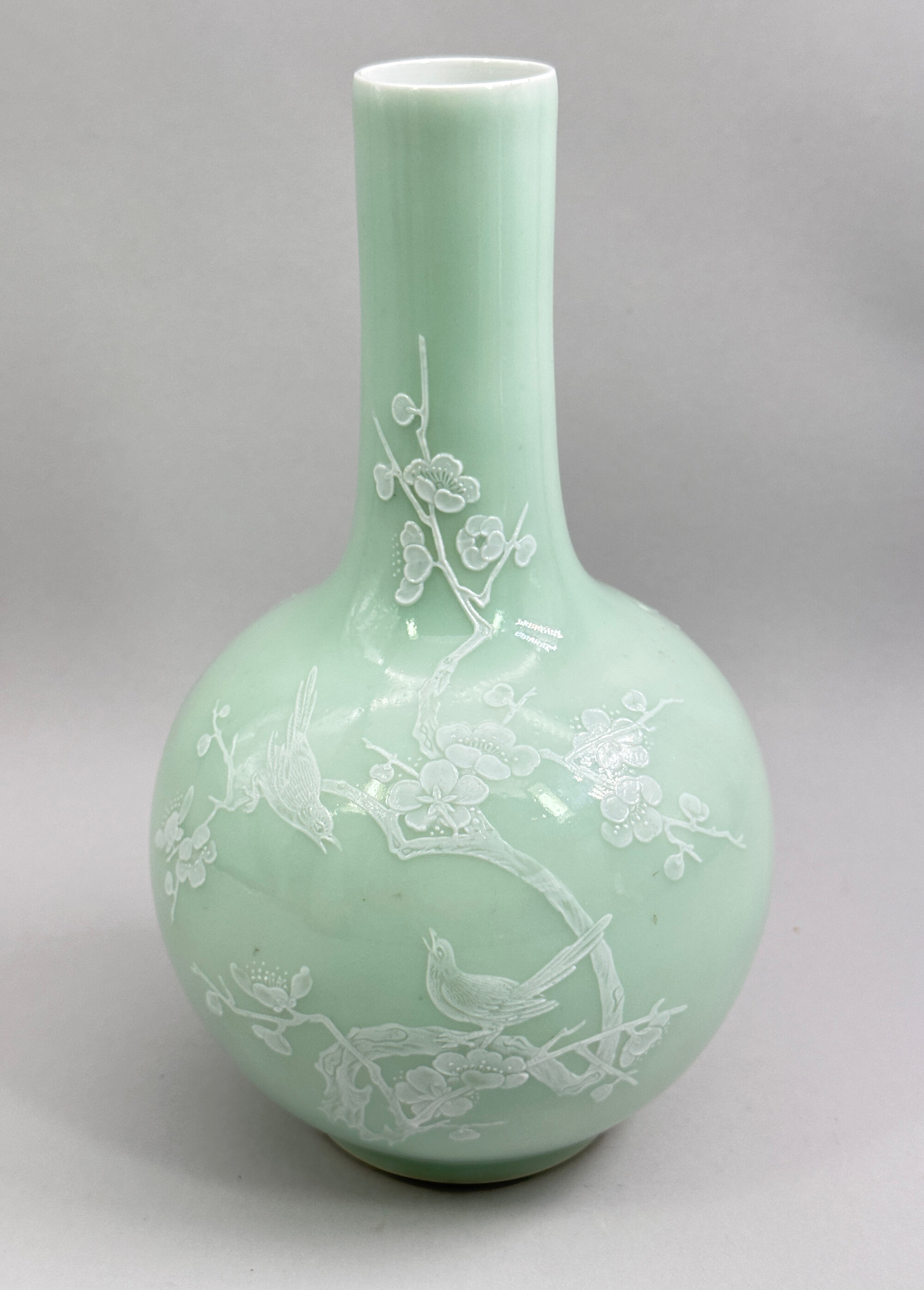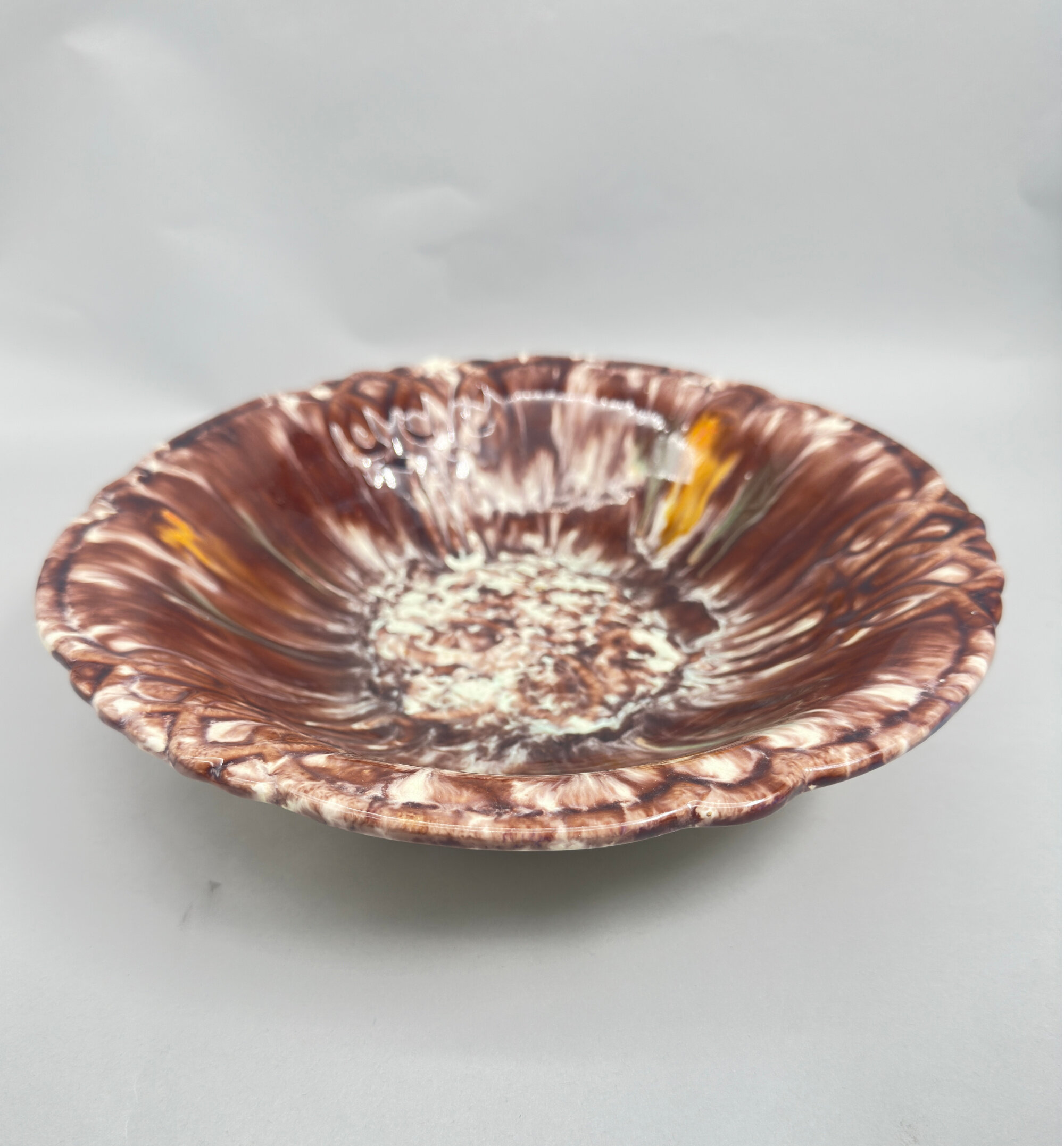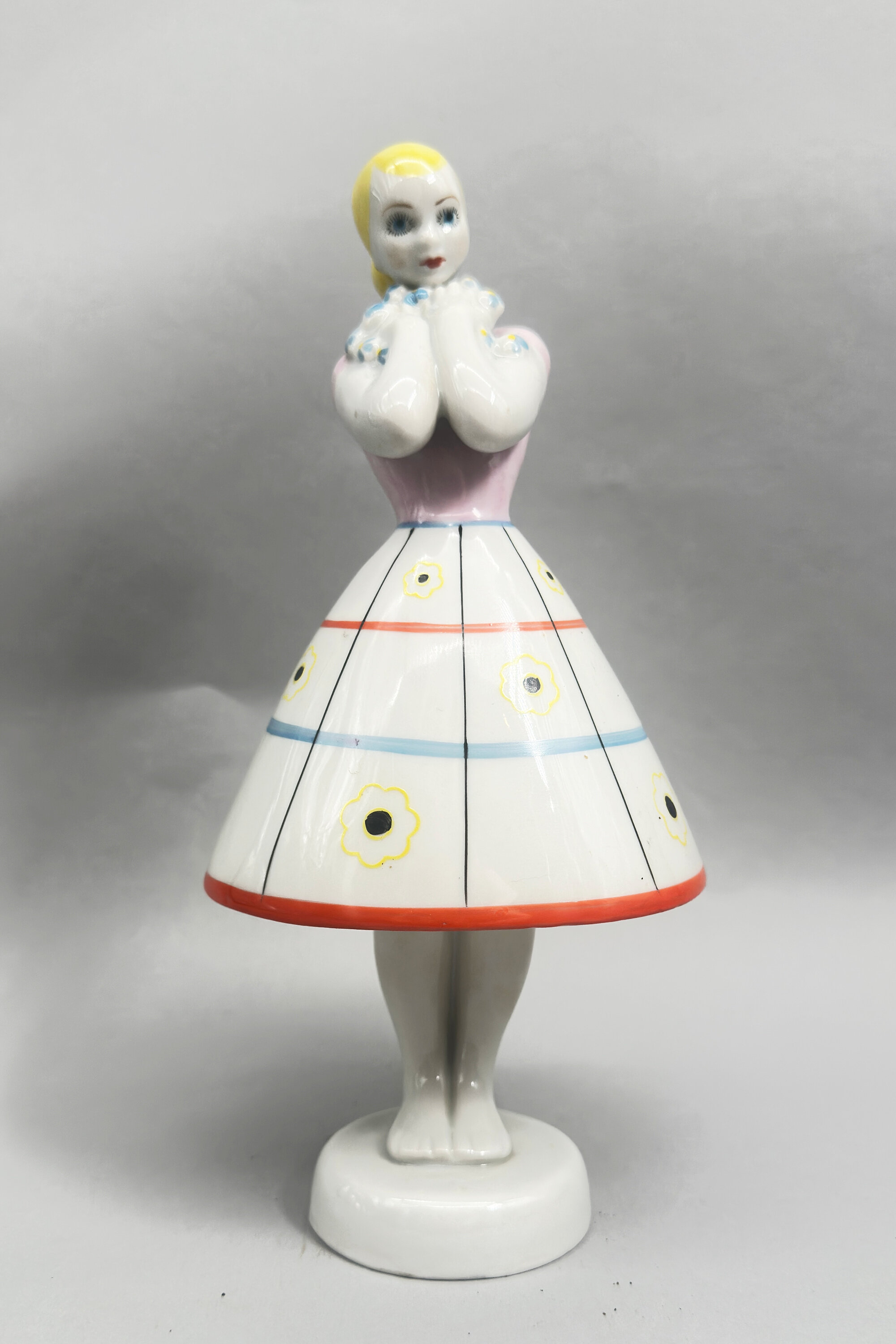
Taxco collar necklace by Rubi Ramirez c1950
Price: £350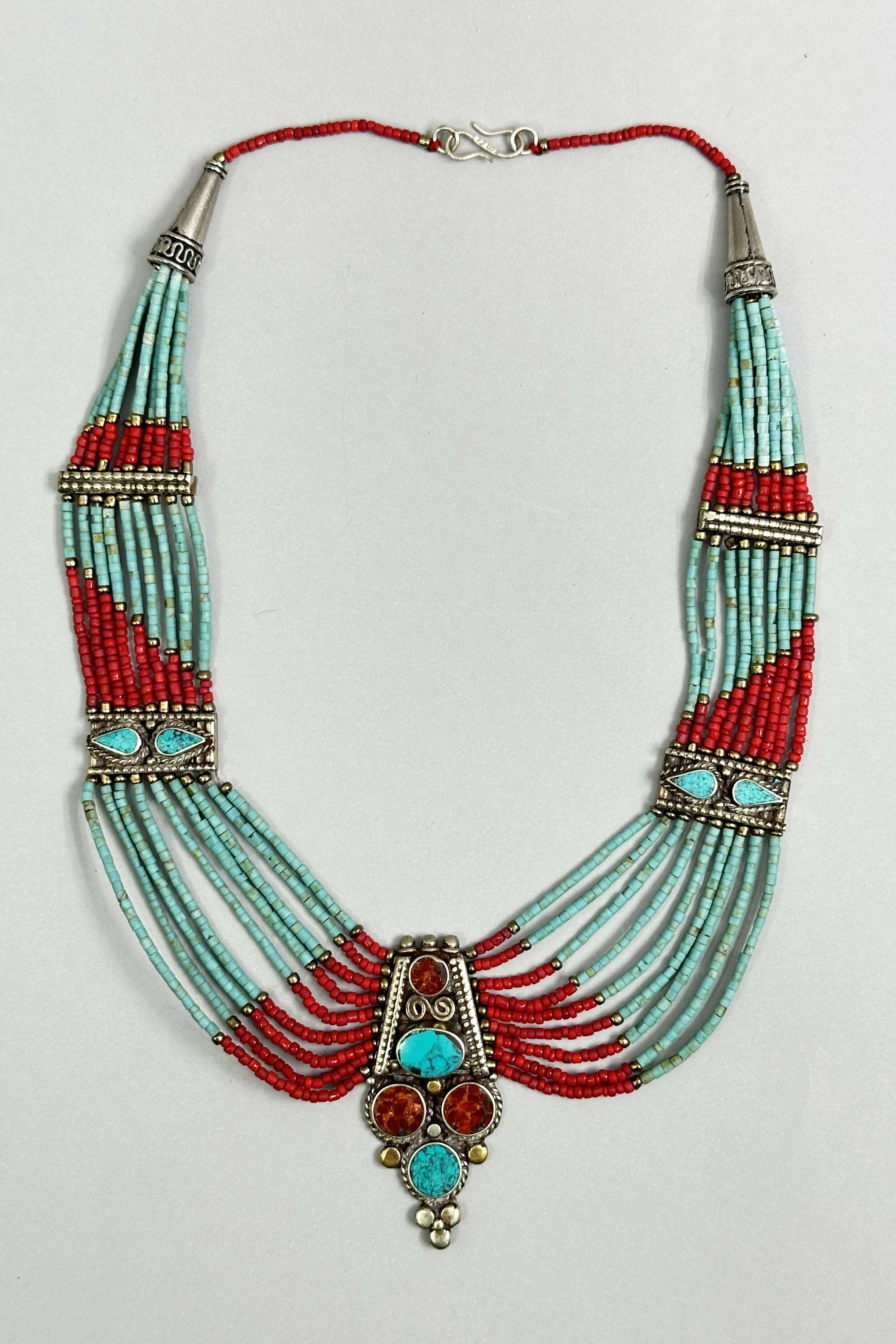
Very fine Berber North African necklace c1950
Price: £45
Amber buddha carving on egg yolk amber and lapis necklace
Price: £175
Persian silver bracelet with inset enamel plaques, c1930
Price: £125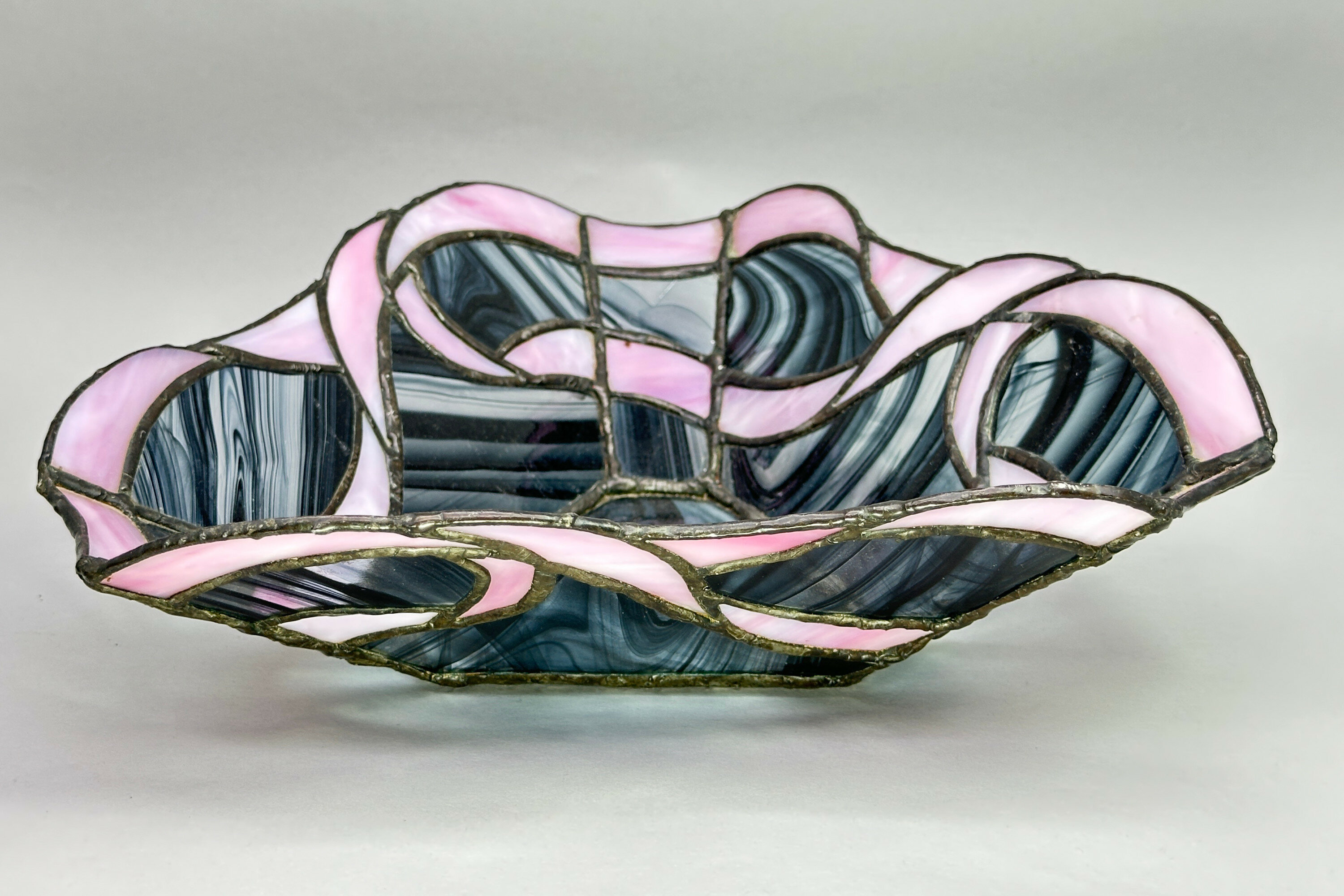
Leaded Slag Glass Bowl, C20th
Price: £45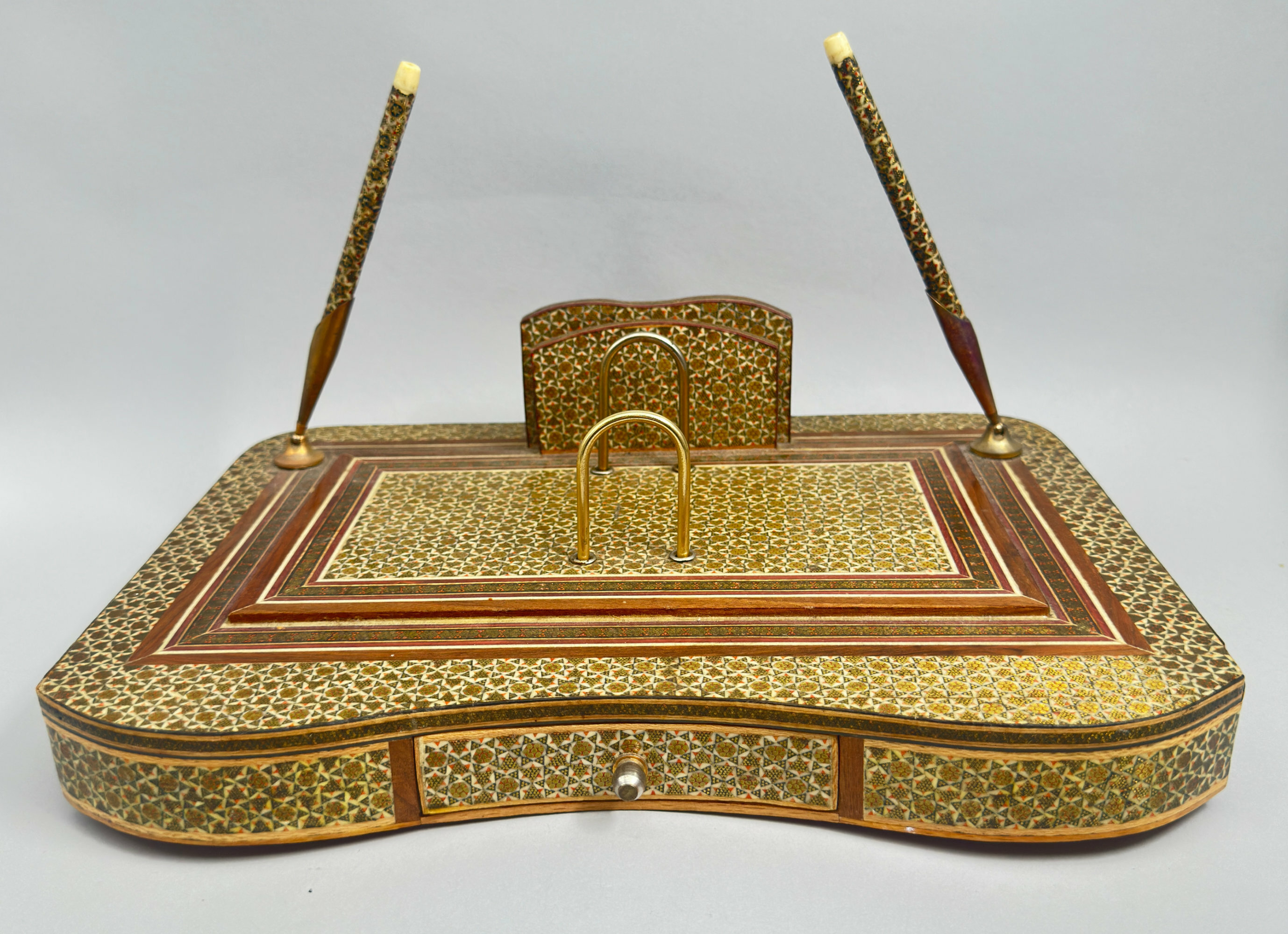
Persian Marquetry Khatam Kari Desk Set, second half C20th
Price: £55The intricate marquetry decoration used here, with its repeating star form pattern, is called ‘Khatam’ work. Khatam is the capital of Khatam County in Iran and is the centre for craftsmen working in this technique. Khatam is a Persian version of marquetry in which the surface of wooden articles is decorated with small pieces of wood, bone and metal formed into precisely-cut geometric shapes. The process is time consuming involving the cutting of the shapes and gluing them in place, followed by smoothing, oiling and polishing. In Persian, the work is known as ‘Khatam kari’, ‘the art of crafting Khatam ware’.
These desk sets occur in a wide variety of forms. The drawer is less commonly found and decorated pen holders are, as said above, most unusual. These sets seem to have been made from the 1950s onwards. The use of a ‘biro’ pen indicates a dating from the 1960s onwards and perhaps this example is a bit later than that, but the workmanship speaks for itself and the piece has survived in excellent condition with minimal damage, providing a truly elegant ‘desk tidy’ for the contemporary study!
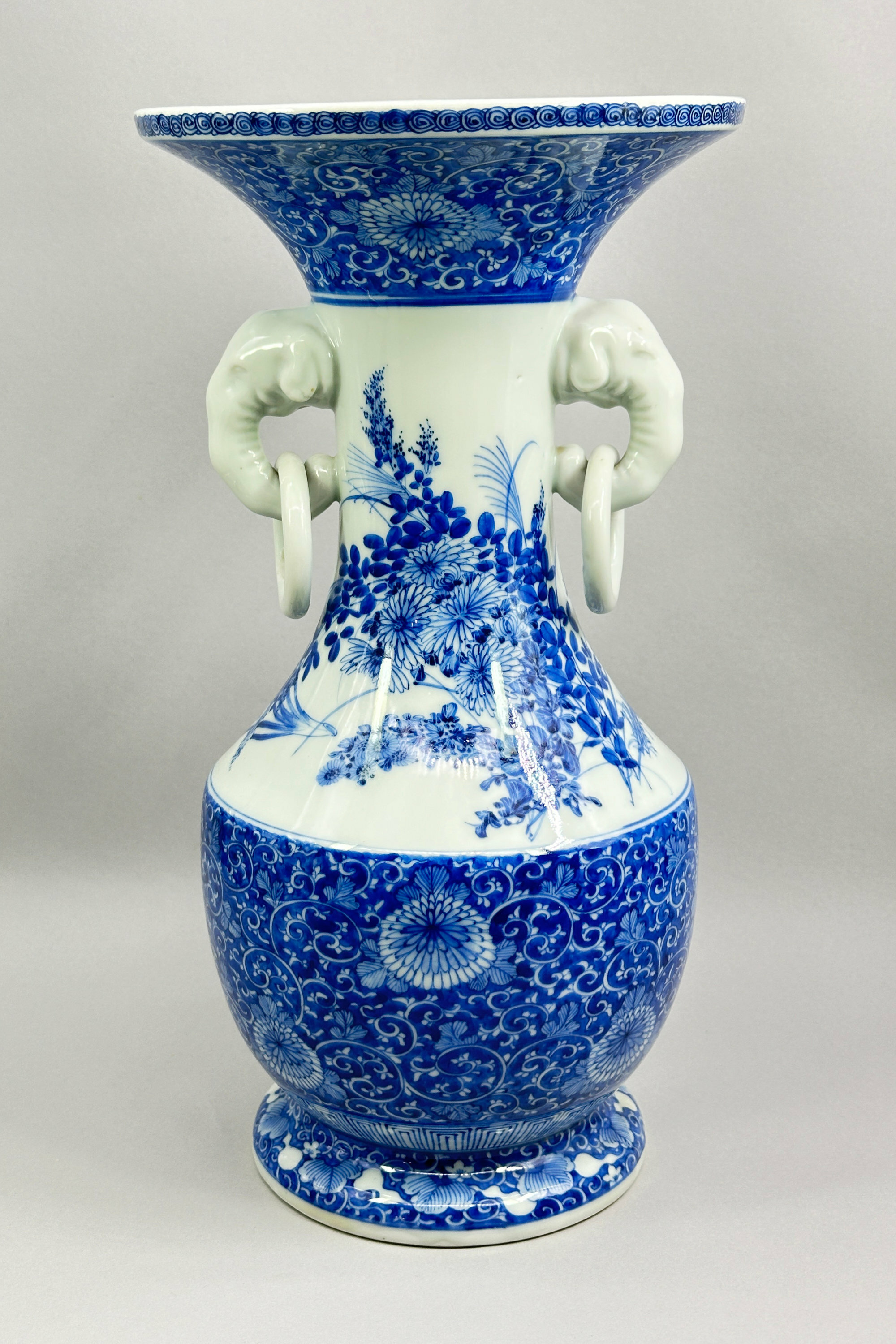
Japanese Seto Ware Blue and White Vase, late C19th
Price: £450A fine quality Japanese porcelain vase, the ovoid body with a curved flaring foot and rising to a tall concave neck with a well defined shoulder, applied elephant and ring handles to the sides and a galleried rim, decorated in bright underglaze blue with two bands of stylised flowering chrysanthemum at the top and bottom between a continuous scene of flowering peony and chrysanthemum, the top rim with repeating whorl design on the exterior and stylised leaf design inside, the stepped base glazed white.
The kilns at Seto in the Aichi prefecture of Japan and situated close to Nagoya form one of the traditional ‘Nihon Rokkoyo’, the six old kilns of medieval Japan. The location of Seto was ideal for the production of ceramics with an abundance nearby of both porcelain clay and forests to provide firewood for the kilns. Production began as early as the Heian period (794-1185) and continued without a break thereafter, the earlier pieces being more pottery forms copying Chinese wares. It was in the early nineteenth century that the kilns turned to producing porcelains decorated in underglaze blue and white, a development initiated by the potter Tamikichi Kato who went to Arita to learn the techniques of its production there, returning to Seto in 1807. Production grew and developed and was directed towards the export market in the Meiji period (1868-1912) with Seto wares being displayed at the European and North American exhibitions and fairs. Their delicately painted designs of birds and flowers proved to be immensely popular and were, in their time, to influence Art Nouveau and Art Deco designs. Some of the forms produced were truly virtuoso creations including, besides vases, screens, jardinieres and even ceramic tables.
Signed pieces are known and besides Tamikichi Kato the distinguished potters included the Kichiemon brothers, Kato Chuji and Kawamoto Jihyoe, and Kawamoto Hansuke. But not all the best pieces carried an artist’s signature as this vase well demonstrates. Formed from fine quality clay, as can be seen from the foot rim (image 10), the complex shape with its spreading base, angled shoulder and galleried rim would have been difficult to create. The handles show remarkable skill with the rings somehow formed so as to hang loose (presumably some form of kiln waster technique was used). The detail and artistry of the painting speaks for itself. Note in particular the shading effects on the peony flowers. While not perhaps an exhibition piece, this vase is definitely of exhibition quality and would be a worthy addition to a collection of nineteenth century Japanese ceramic art.

Islamic silver choker necklace 1920s
Price: £120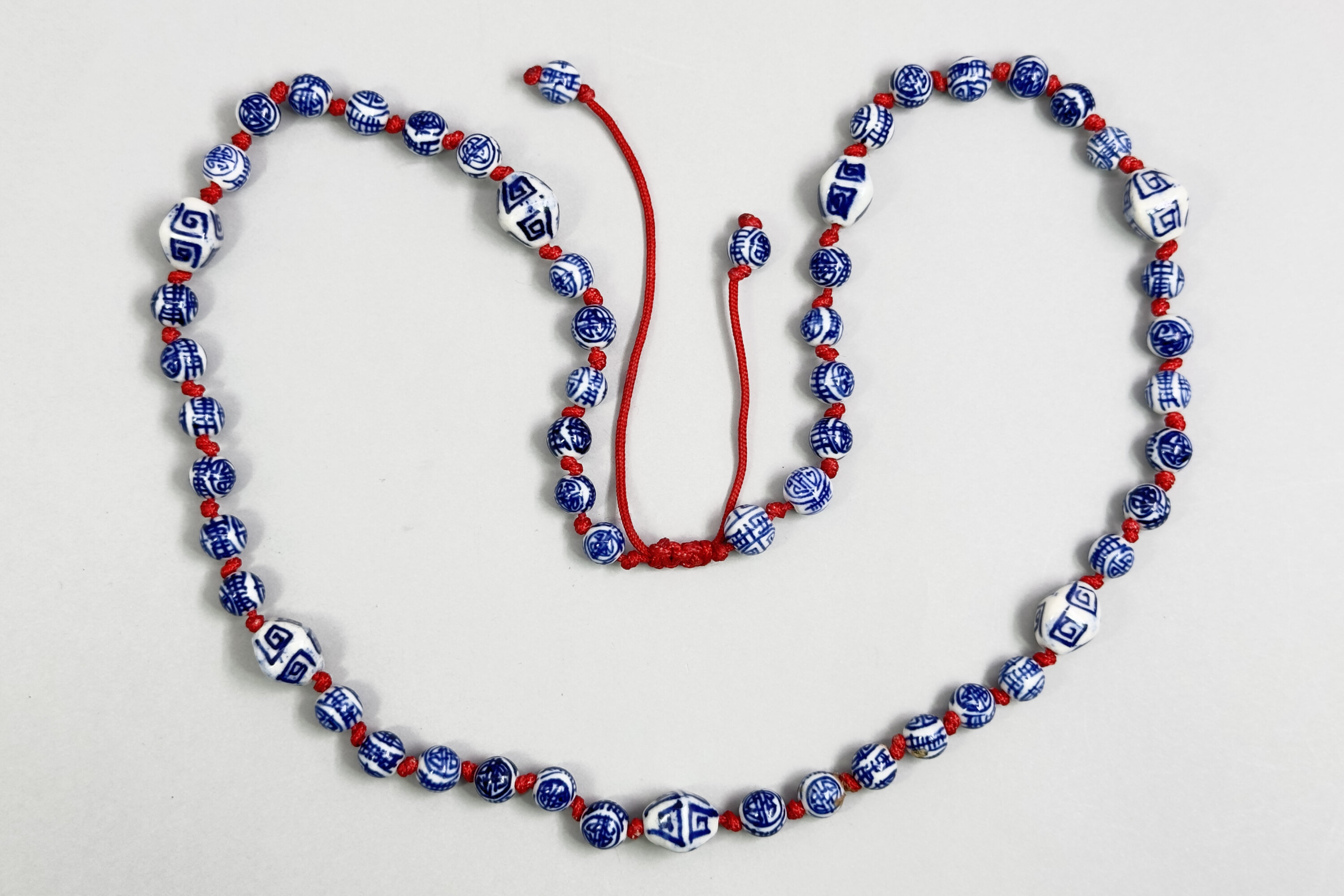
Chinese Blue and white ceramic beads, C20th
Price: £15PLEASE NOTE THAT THERE IS FREE UK SHIPPING ON THIS ITEM. For international buyers the shipping cost will be reduced by the UK shipping cost, so don't worry if you are outside the UK, you still receive this benefit!

Large graduated necklace of nut carving beads, 1930s
Price: £25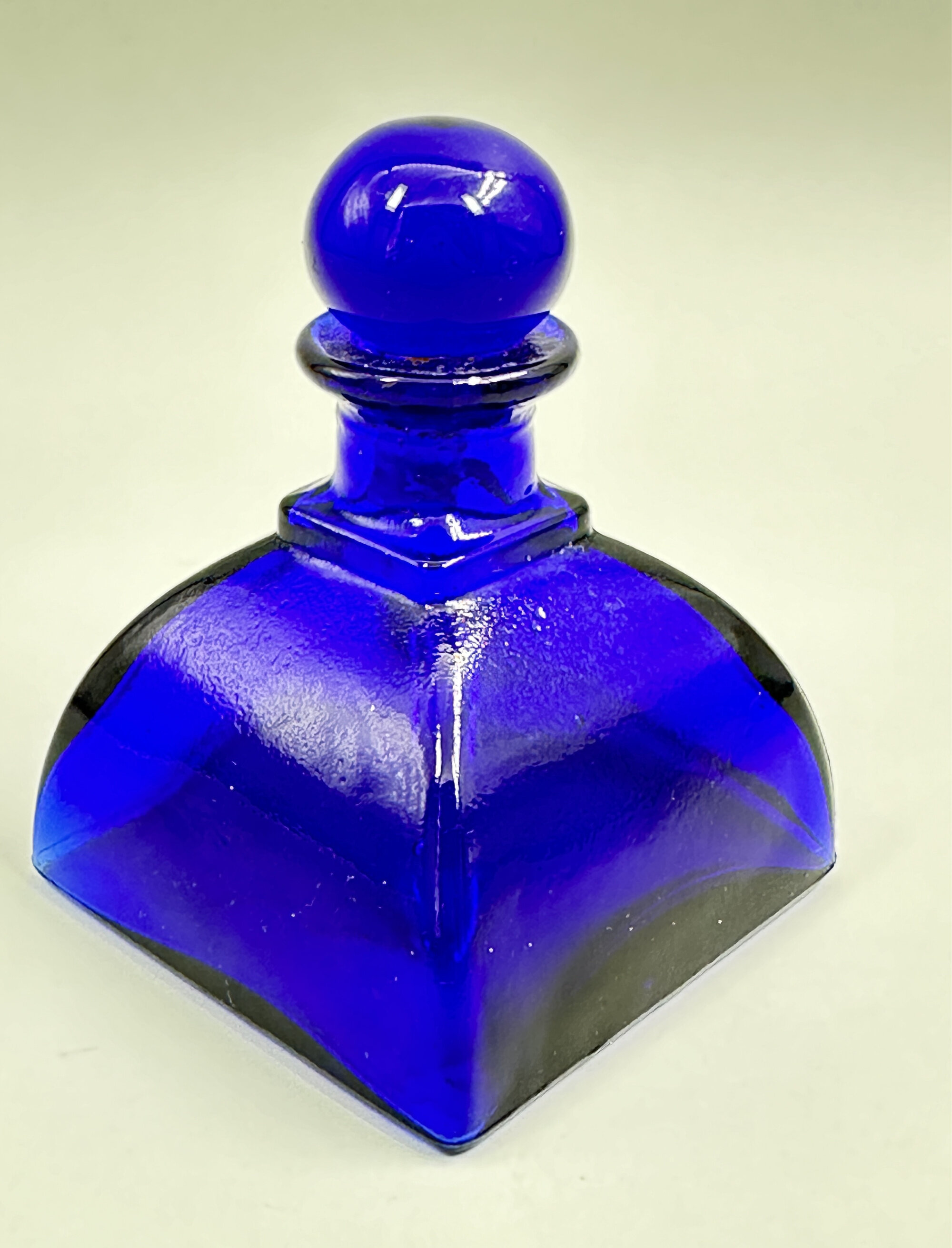
Vintage Cobalt Blue Glass Perfume Bottle and Stopper, 1930s
Price: £25
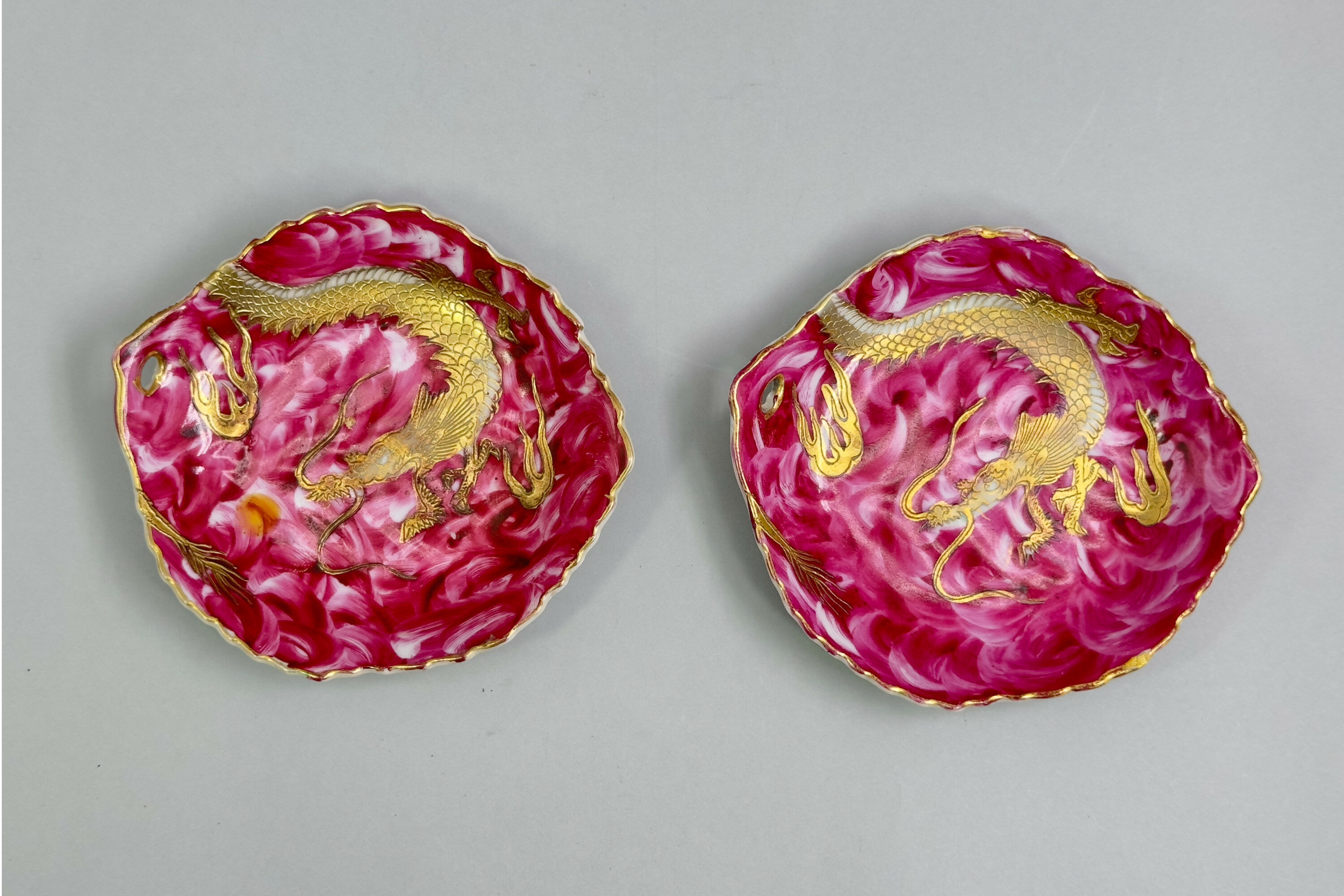
Pair of Japanese Shaped Saucer Dishes, Maruku China, 1940s
Price: £25The Maruku factory seems to have operated in Japan after the second world war producing modest but good quality wares for export, rather in the style of Noritake pieces. Usually their pieces are marked in addition ‘Made in Japan’ but for some reason not here. The forms, colourings and designs here are quite unusual and while modest, these are good quality decorative items suitable for a contemporary interior.
PLEASE NOTE THAT THERE IS FREE UK SHIPPING ON THIS ITEM. For international buyers the shipping cost will be reduced by the UK shipping cost, so don't worry if you are outside the UK, you still receive this benefit!
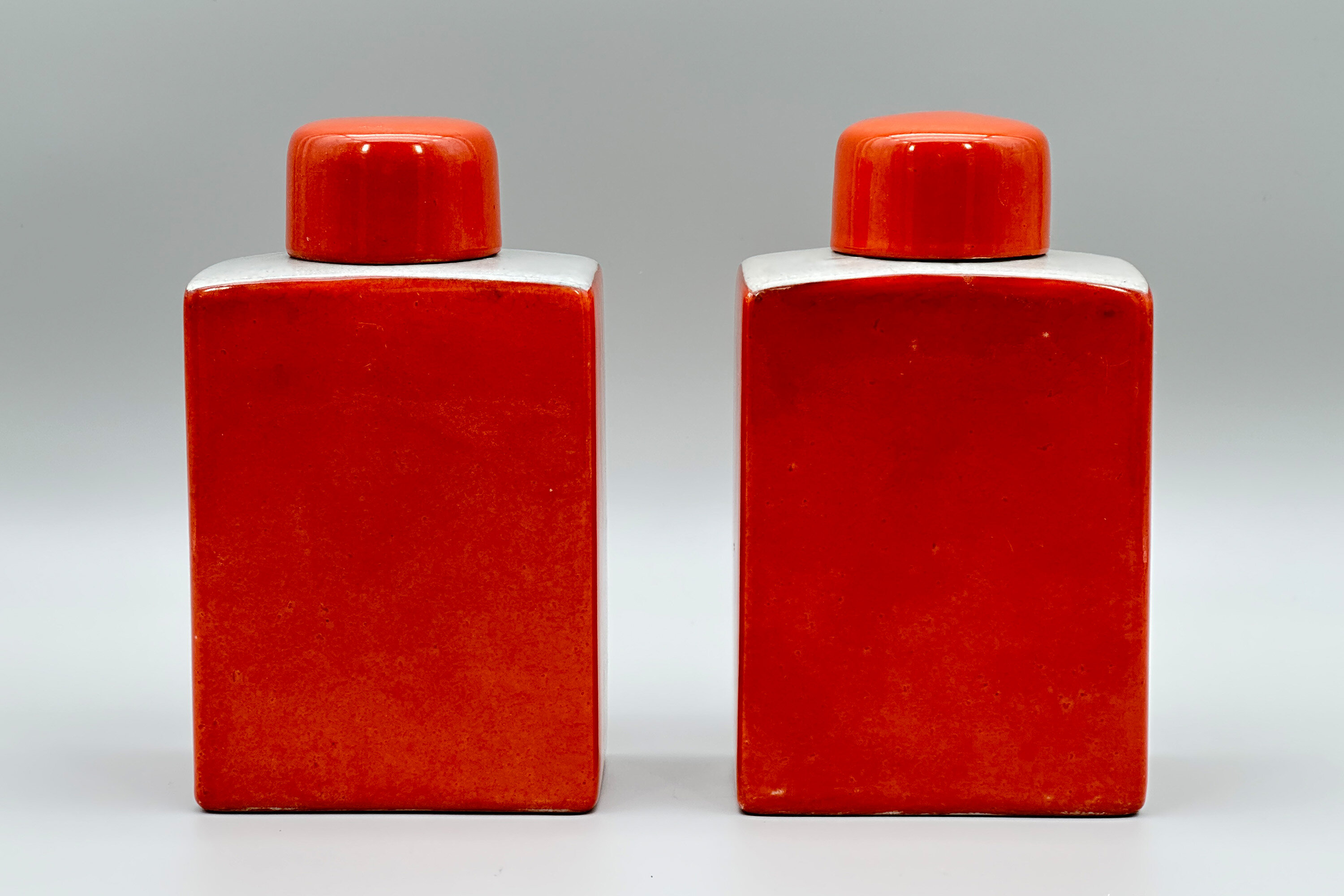
Pair of Orange Glazed Flasks and Covers, Fabienne Jouvin Paris, C20th
Estimate: £60 – 80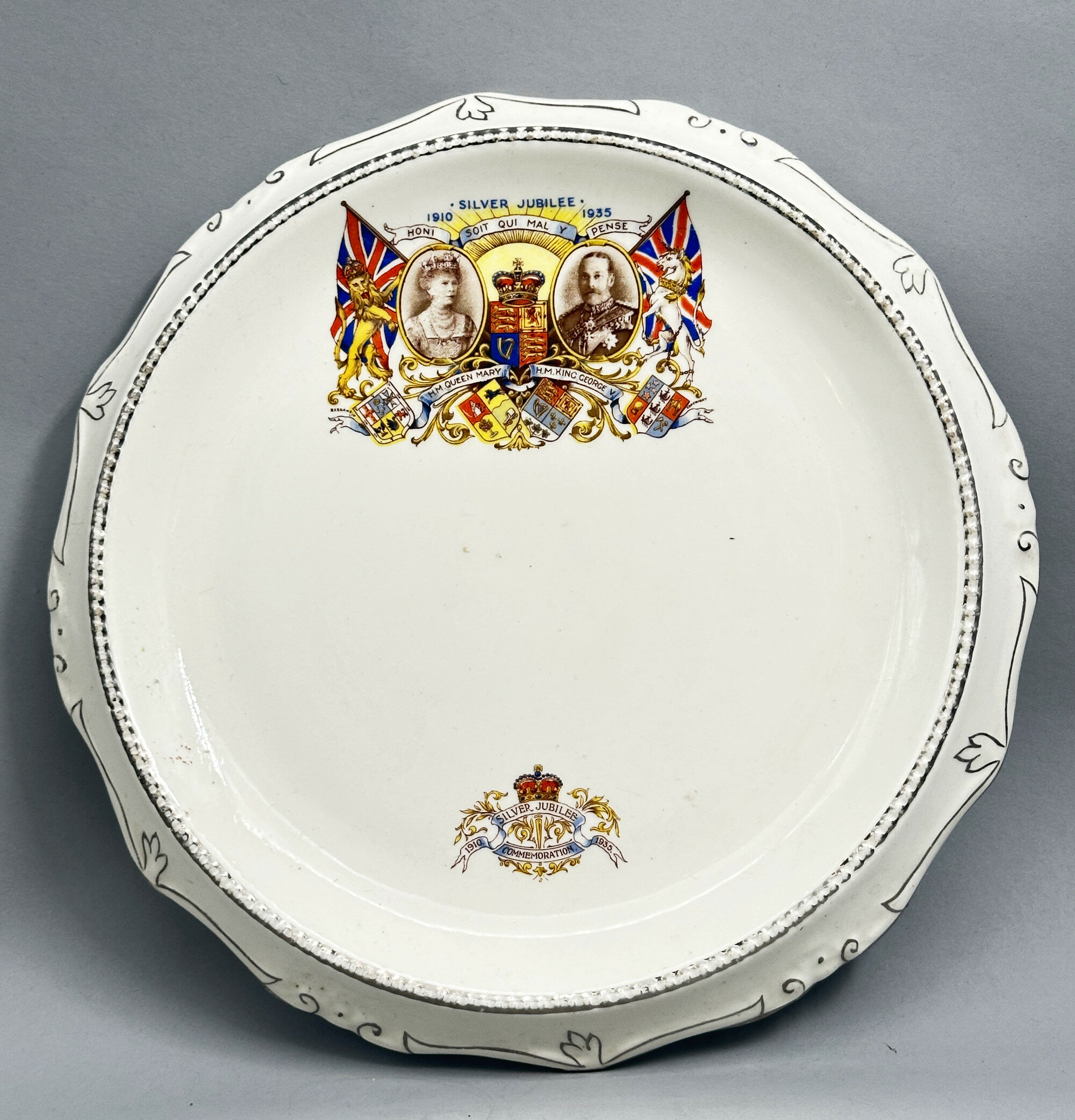
Commemorative Ware Silver Jubilee Plate, James Kent Ltd, England, 1935
Price: £35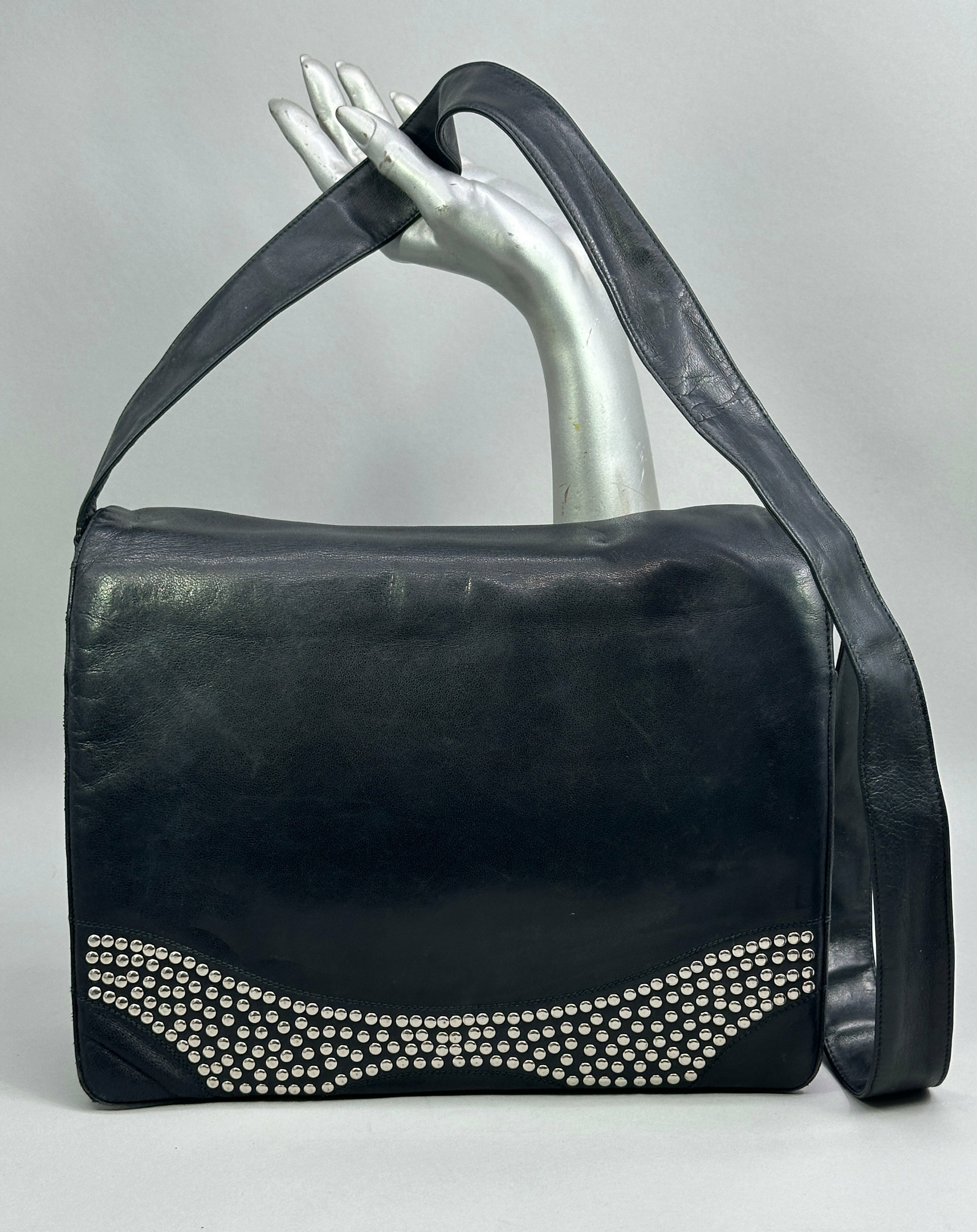
Maud Frizon Handbag c2000
Price: £150
Art Deco necklace with French Jet and paste stations
Price: £45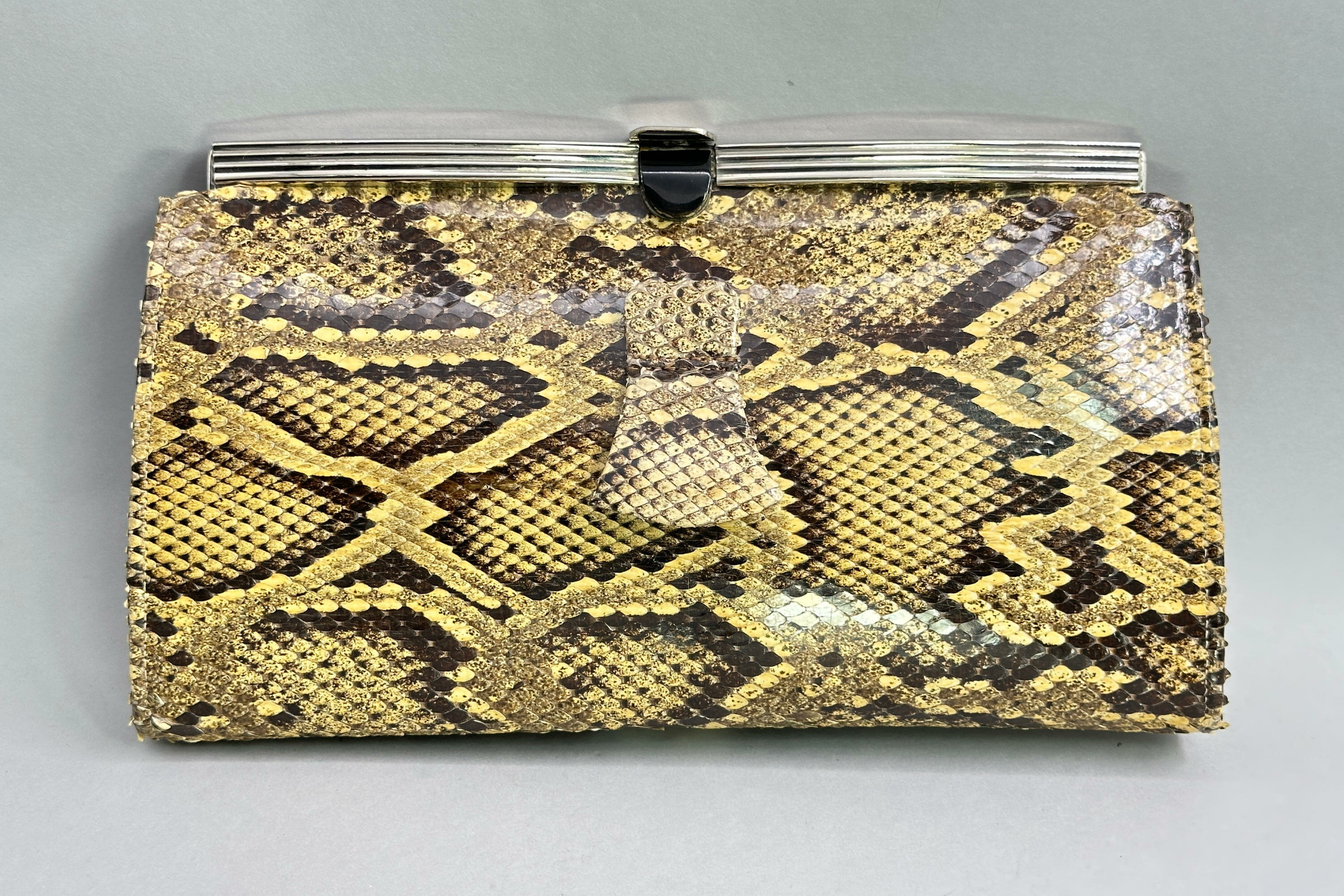
Art Deco Python Clutch
Price: £85
Outstanding Suede Lanvin Clutch in original box 1950s
Price: £250
Glossy brown crocodile handbag 1960s
Price: £65
Small suede handbag, England 1940s
Price: £25PLEASE NOTE THAT THERE IS FREE UK SHIPPING ON THIS ITEM. For international buyers the shipping cost will be reduced by the UK shipping cost, so don't worry if you are outside the UK, you still receive this benefit!
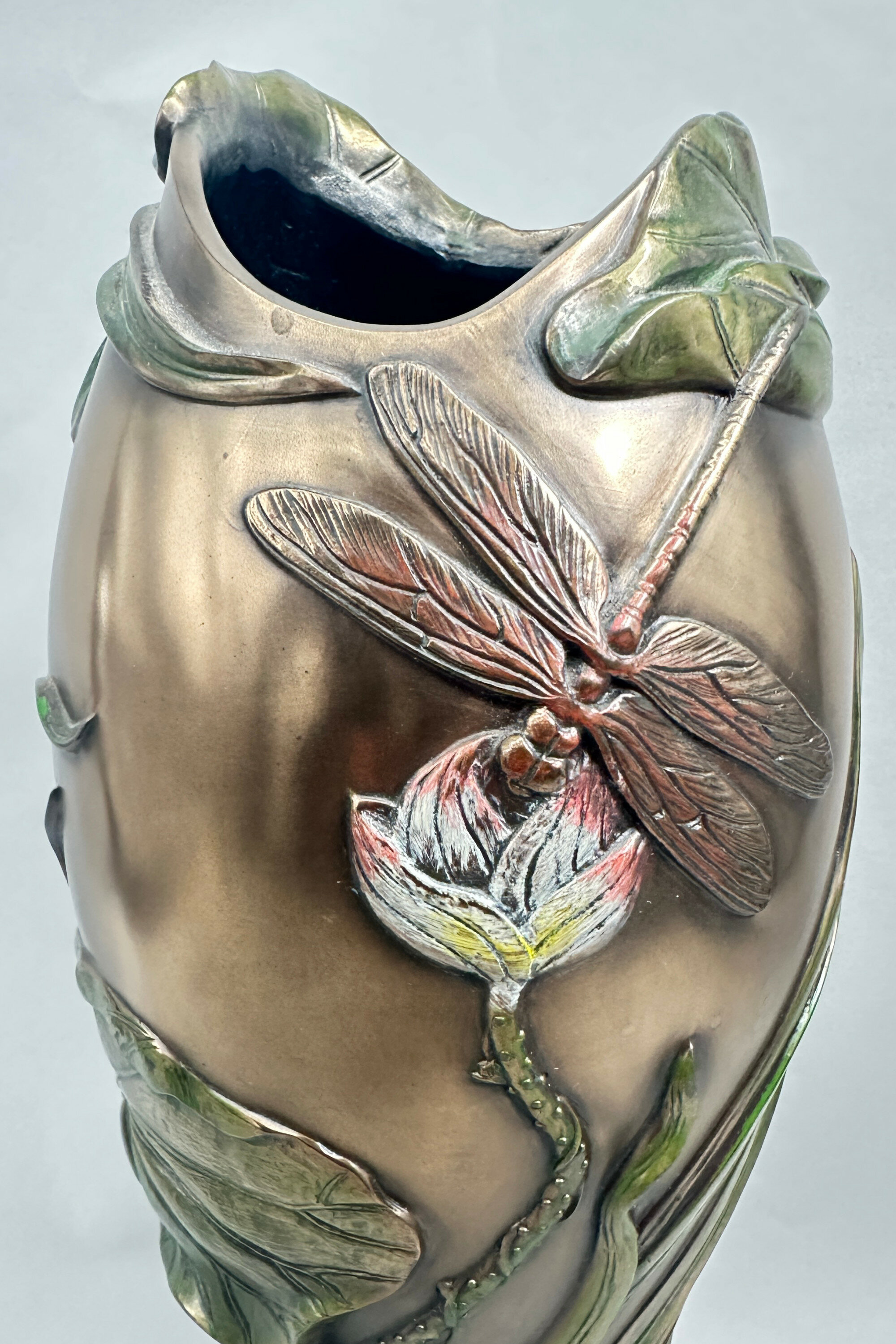
Past Times Art Nouveau Style Vase, Veronese Collection, 2004
Price: £45‘Past Times’ was founded in 1986 by John Beale, at first as a mail order company but then trading from physical stores and developing into a business which enjoyed enormous popularity with over one hundred shops in the early 2000s. The stock was focused on retro and vintage style items also including a wide range of licensed products, such as Harry Potter and Beatrix Potter merchandise. Badly impacted by the recession in 2008 it went into administration in 2012 and was bought by W.H.Smith a year later leading to the disappearance of its products from the marketplace.
This ‘Art Nouveau’ vase can be seen as an example of their range at its best. Manufactured with care it presents an appealing souvenir of the era it aims to recreate at a rather more affordable price than the authentic originals.

Japanese Fukagawa Jug and Stand decorated lotus, signed, circa 1900
Price: £45The Fukagawa kilns produced the best quality Imari items made in Japan in the late nineteenth century for export to the West. Their history starts with Ezaiemon Fukagawa who in 1856 became head of his family's porcelain business and in 1875 founded Koransha (The Company of the Scented Orchid) in Arita, Japan, to produce tableware for export. In 1894 the modern Fukagawa company was founded by Chuji Fukagawa, with the Fukagawa trade mark of Mount Fuji and a stream, as its trade mark. Dating of these pieces is therefore towards the end of the Meiji period (1868 - 1912) probably around 1900. While the decoration is similar to that found on other Fukagawa pieces there are few, if any parallels, and tea ware pieces by the firm are not very often seen.
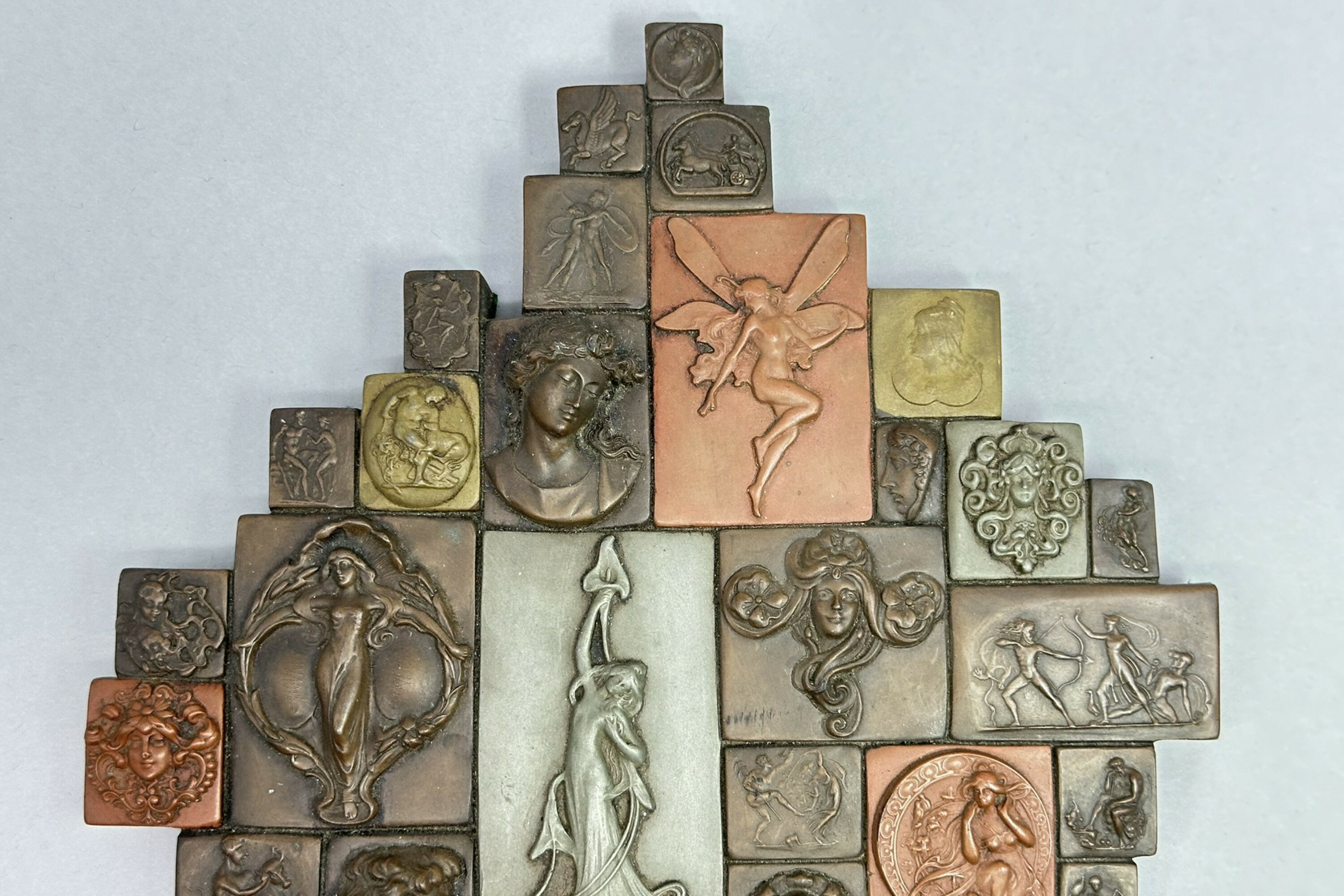
Wall plaque by Giovanni Schoeman depicting classical style figures, 1970s
Price: £75While Art Nouveau in style, Schoeman only perfected these techniques in the late 1960s, producing pieces in the style from a studio in Kentish Town which sold well in the London outdoor art markets. In the late 1970s, Schoeman moved to America with the intention of producing large scale art but the venture foundered and he died in 1981. This plaque, of which other examples are known, must have been one of his most popular designs in those London years and is a striking example of the techniques he developed and mastered.
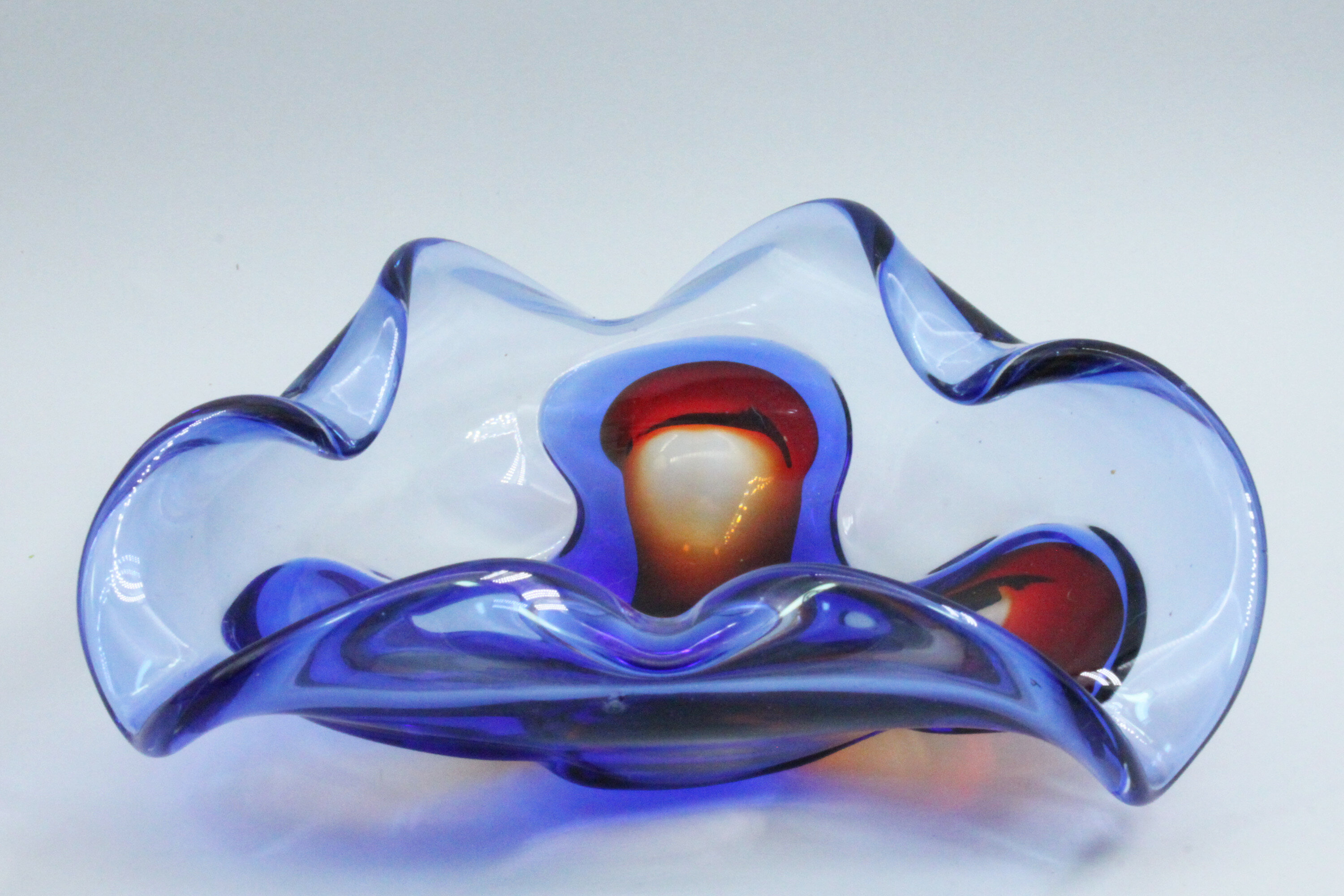
Murano Art Glass Dish, 1960s
Price: £45
West German Bay Keramik Pitcher with stylised floral designs, late C20th
Price: £45Founded by Eduard Bay in the 1930s and based in Ransbach Baumbach in the heart of the main West German pottery producing region, Bay Keramik grew to be one of the most prolific producers of ceramics in the ‘West German’ style and continued production into the 1990s. This piece retains its original paper label and the format of this allows dating to the 1970s/1980s. The jug has almost a slightly rustic feel and recalls much earlier German ceramic items. The numbers on the base indicate the form number but it has not been possible to identify this.
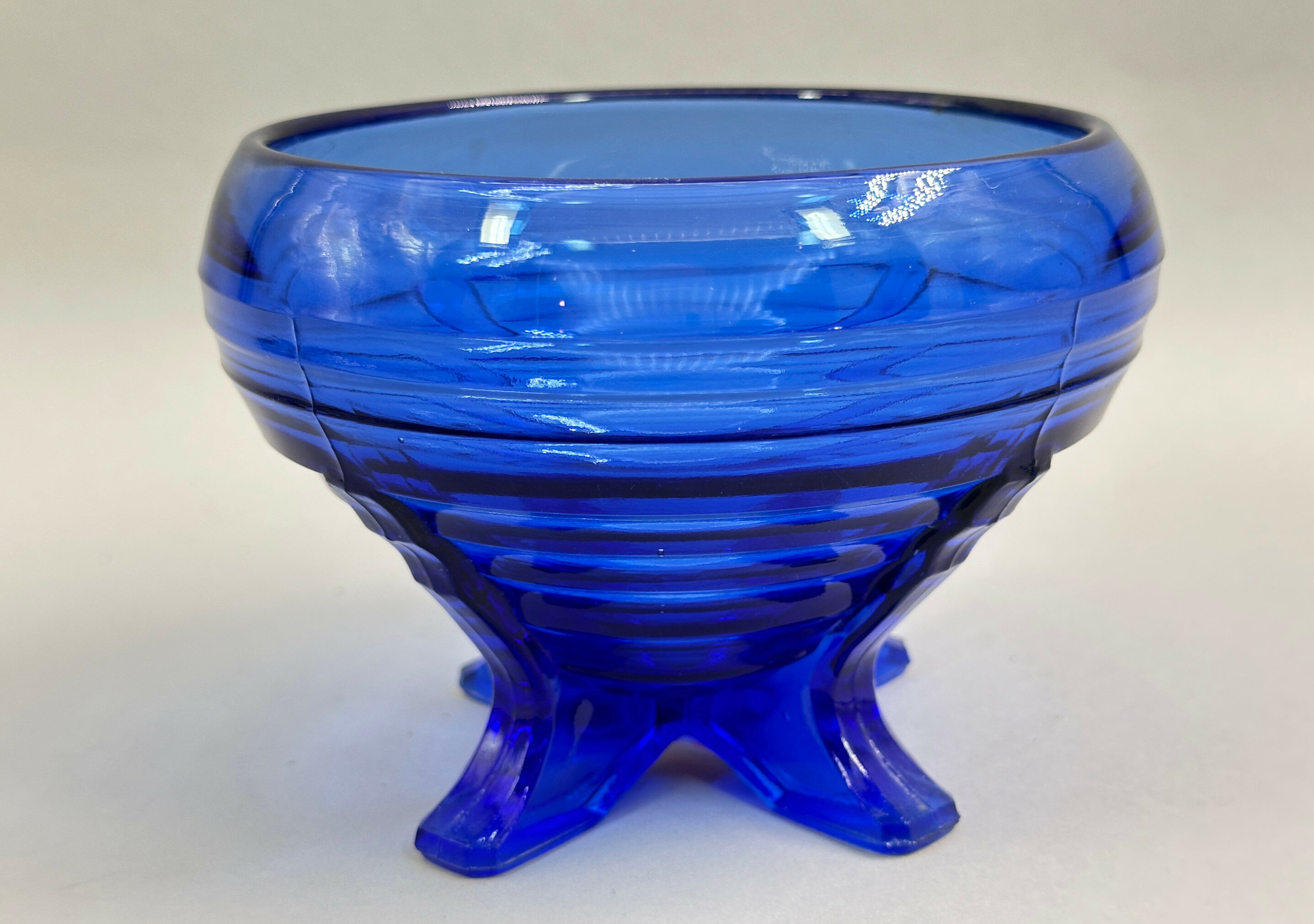
Sowerby Blue Glass Footed Bowl, 1930s/1940s
Price: £25The Sowerby family came from the North West of England near Carlisle and settled in Gateshead in the late eighteenth century. The firm Sowerby Glassworks is known from 1807 onwards and continued production until 1972, concentrating on pressed glass. Catalogues of their wares still exist and they produced pieces in a wide variety of styles and shapes which retain their popularity today.

Yellow ground Bursley Ware Dragon Bowl by Frederick Rhead, circa 1920
Price: £55

West German Keramik Jug with drip glaze, second half C20th
Price: £45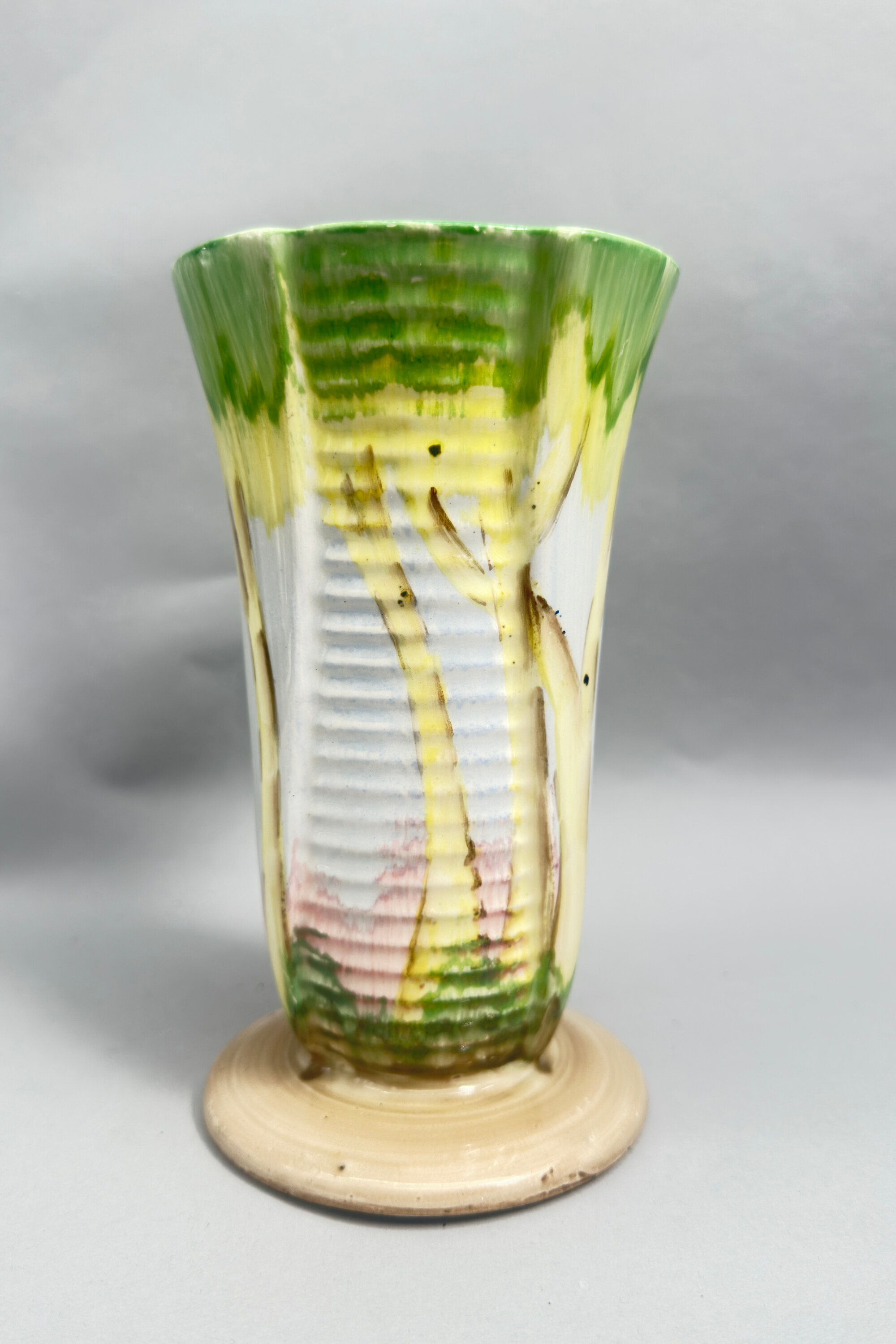
Art Deco style beaker form Vase, probably Beswick, mid C20th
Estimate: £20 – 30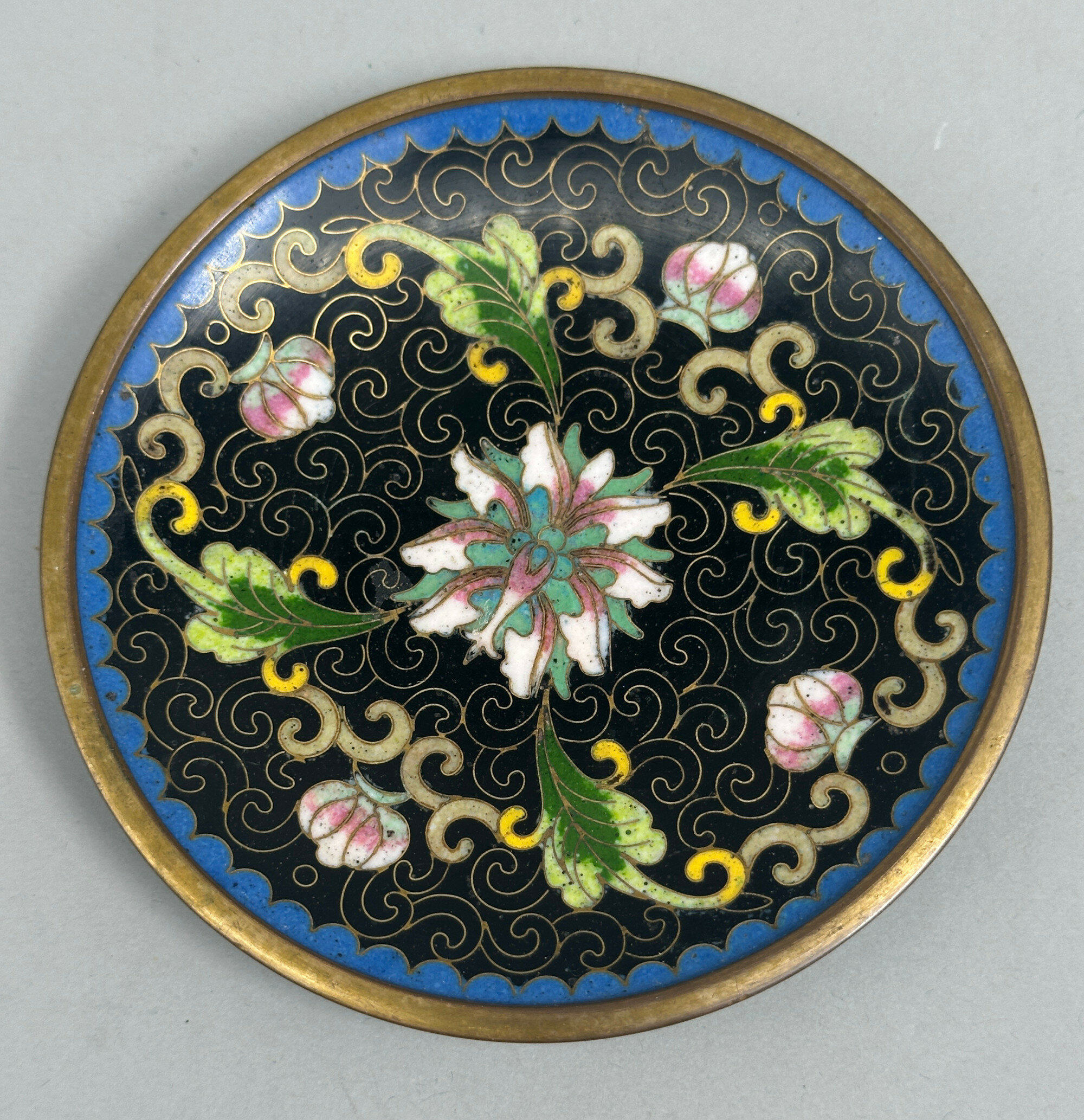
Small Chinese Cloisonné Dish decorated lotus, C20th
Price: £25
Chinese Straw Thread Picture on Silk, framed in original box, late C20th
Price: £45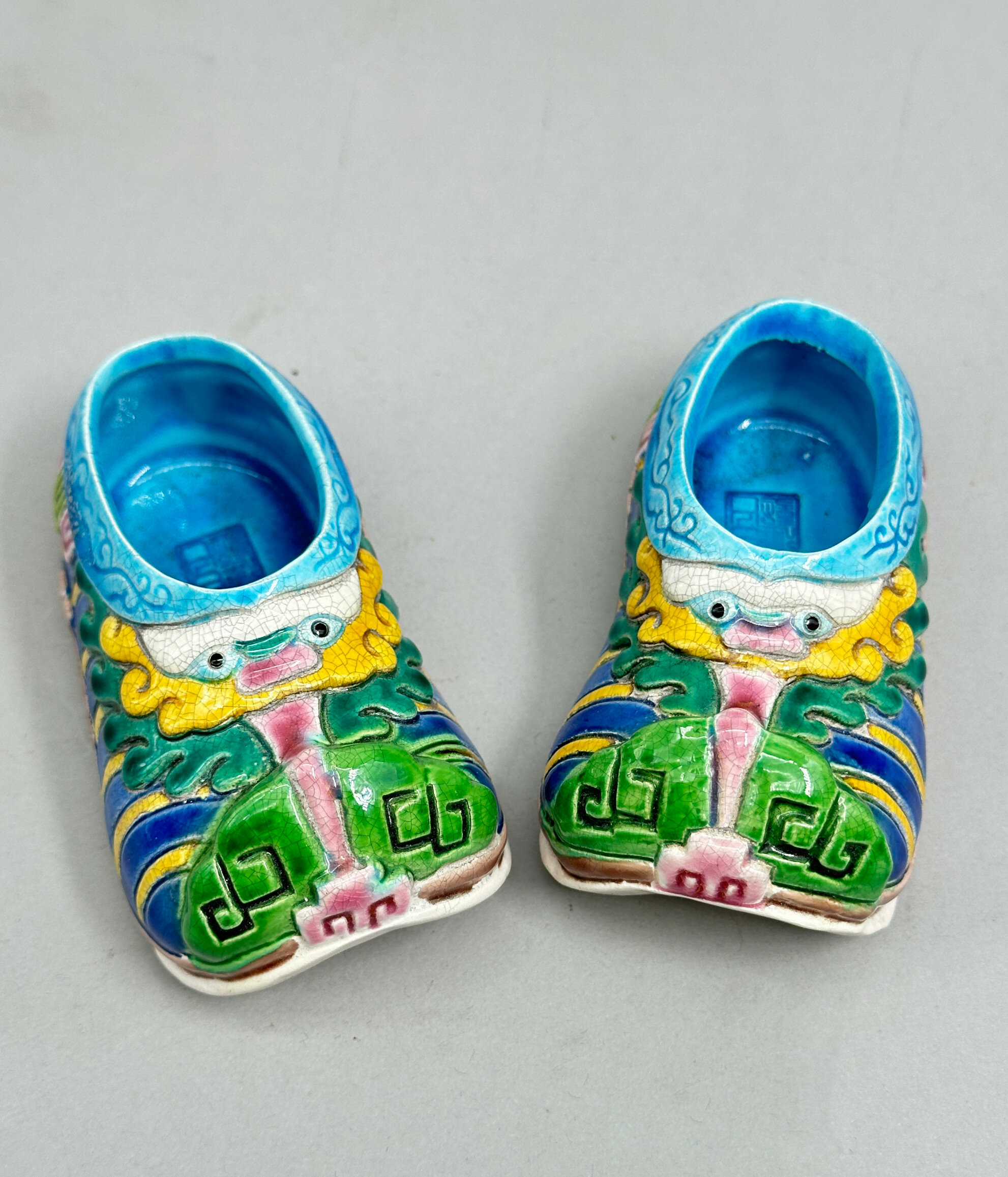
Pair of Chinese Ceramic Shoes, seal mark and with fitted box, C20th
Price: £55
Victorian ladies watch chain c1900
Price: £40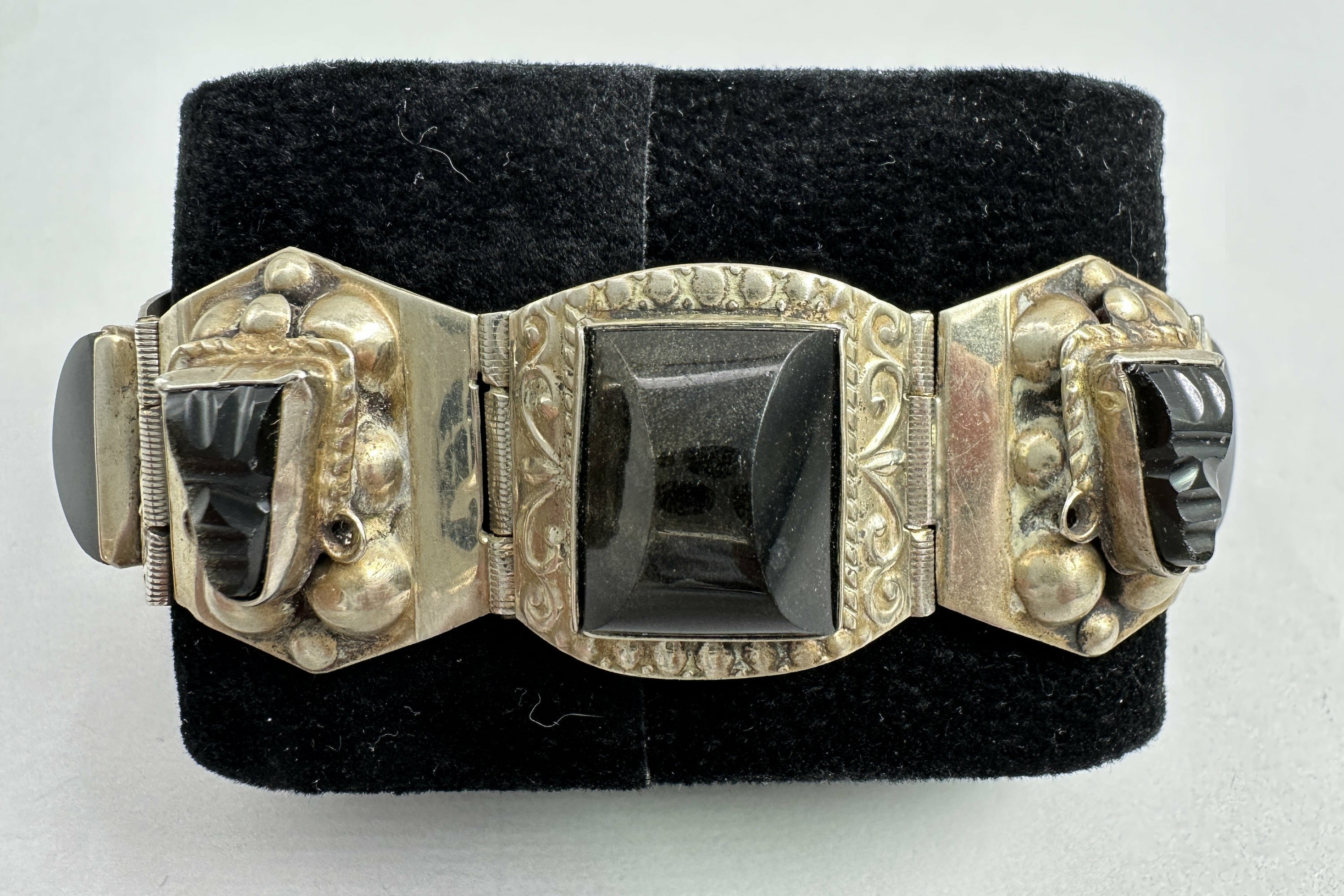
Taxco bracelet set with carved obsidian stones c1950
Price: £55
Fun vintage jade necklace with hook and ring closure c1980
Price: £25
Large Victorian Turquoise pendant c1900
Price: £95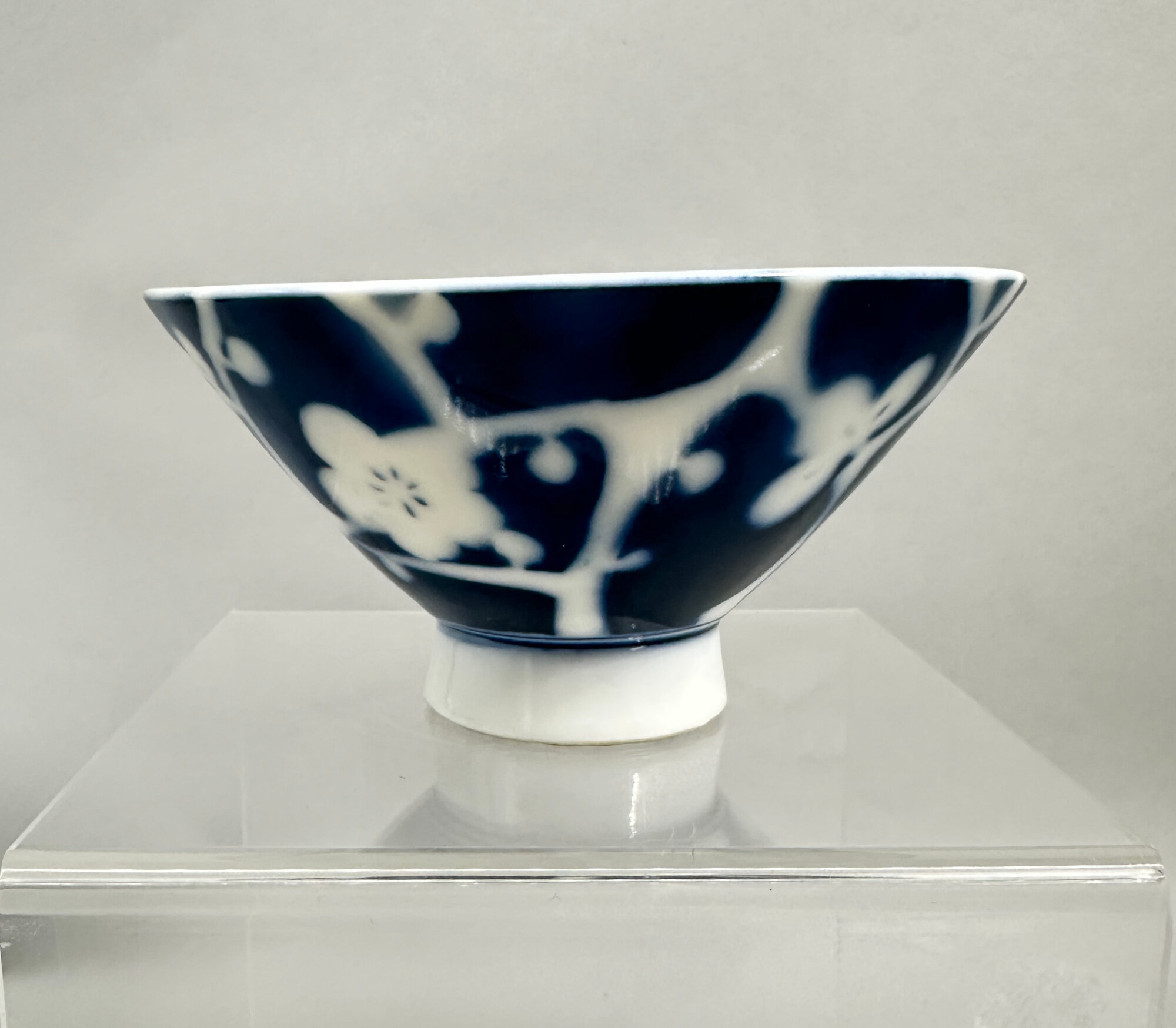
Japanese blue and white hat shape small Bowl with flowering prunus, C20th
Price: £25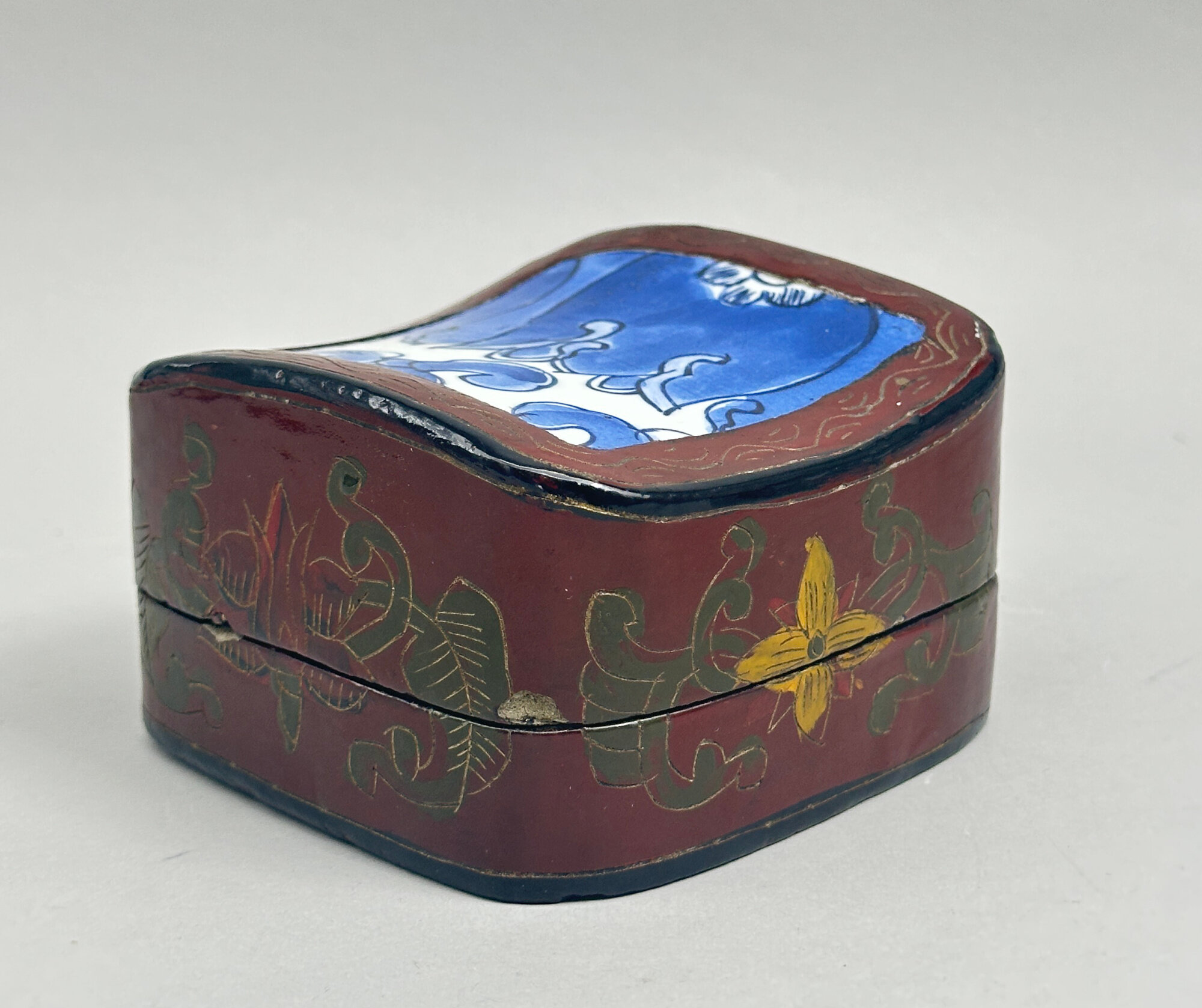
Vintage Lacquer Box with an inset ceramic Shard, probably Persian C20th
Price: £25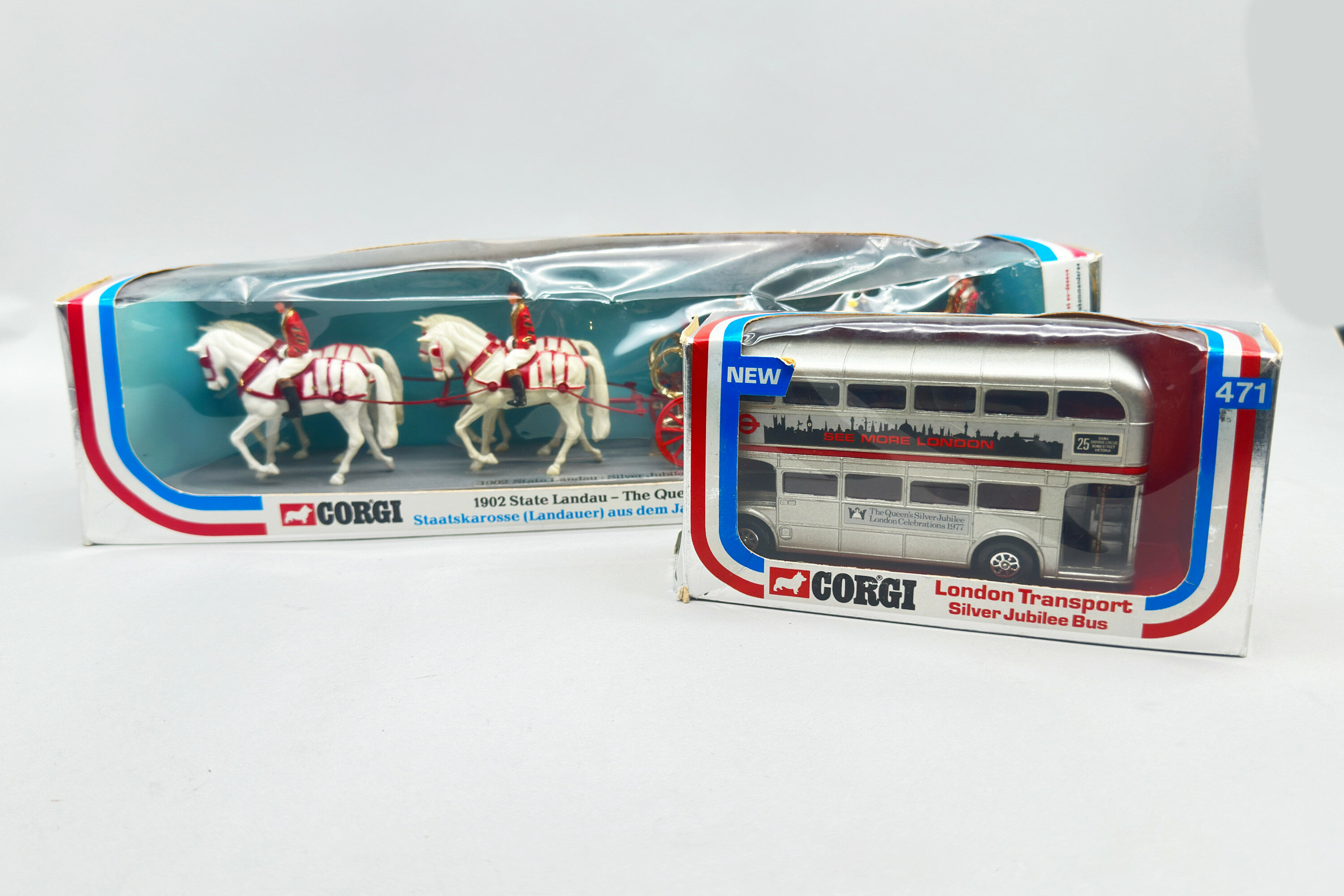
Two Corgi Silver Jubilee Toys Boxed, (41) State Landau, (417) London Bus, 1977
Price: £45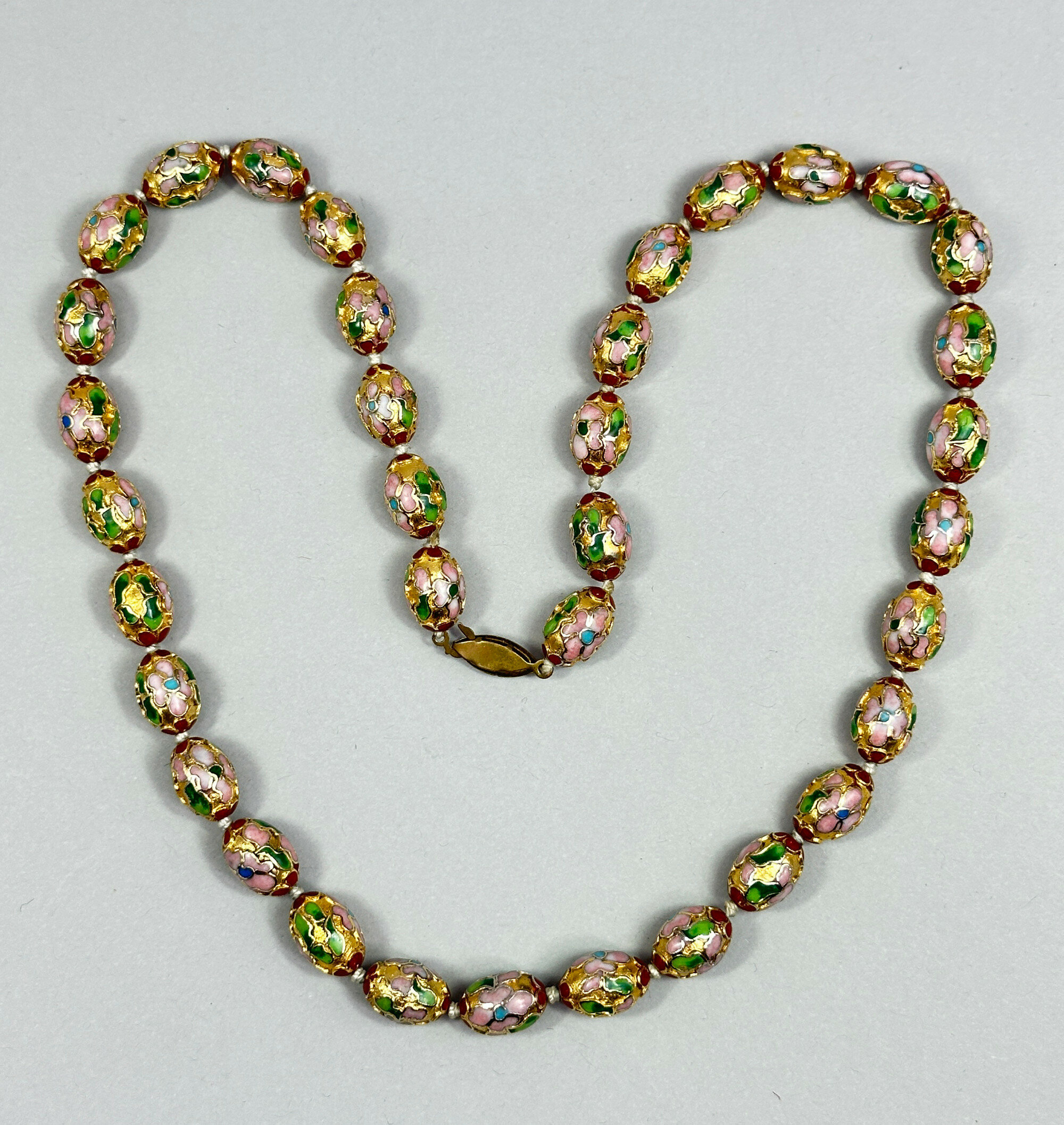
Vintage Chinese Cloisonne Bead Necklace, mid C20th
Price: £55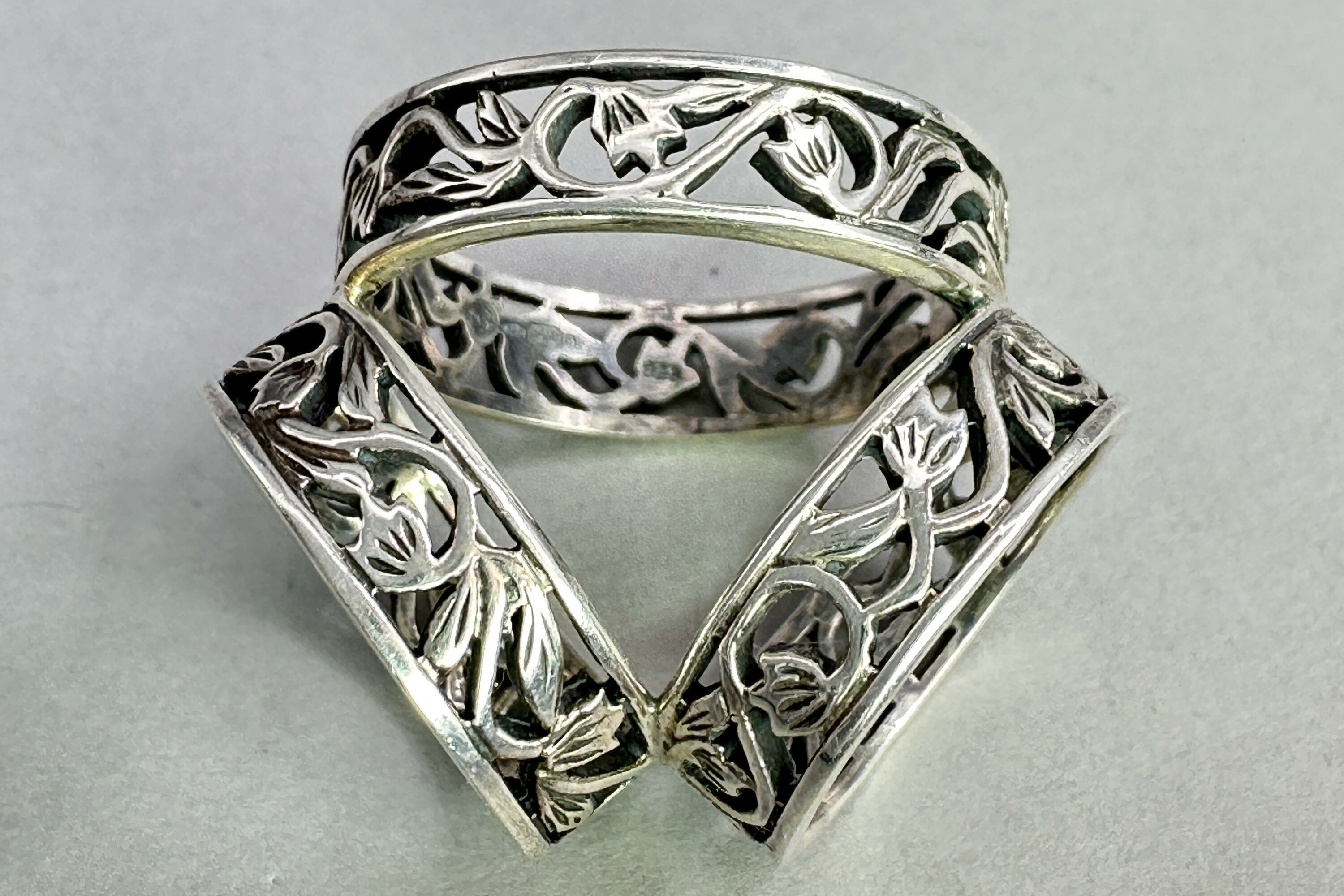
Rennie Mackintosh silver scarf ring with scarf included, c1990
Price: £45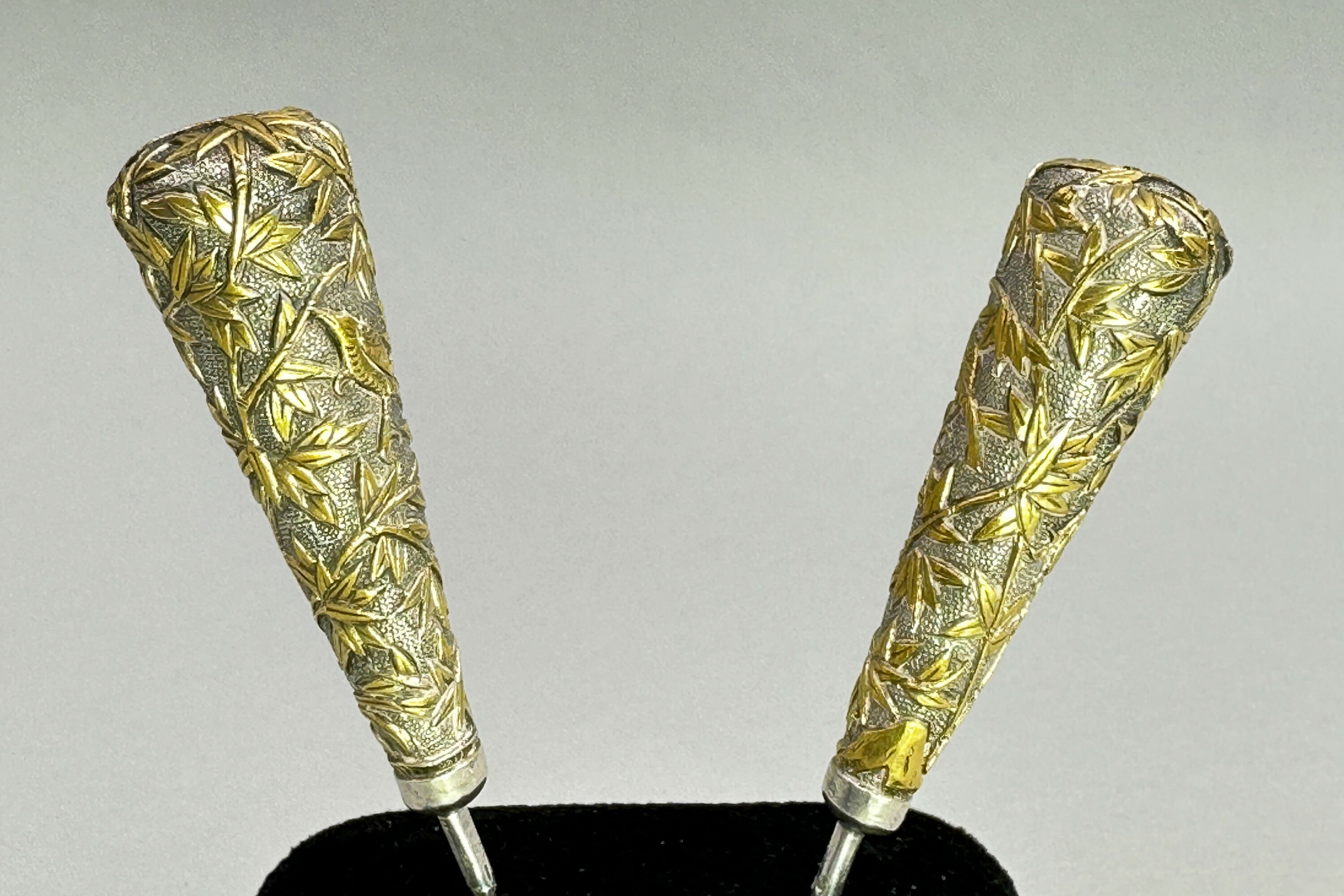
An Unusual Pair of Bradawl Form Sewing Tools, probably Persian C20th
Price: £45
Tigers Eye bracelet with a large central carved dragon bead, certificate for 2012
Price: £15PLEASE NOTE THAT THERE IS FREE UK SHIPPING ON THIS ITEM. For international buyers the shipping cost will be reduced by the UK shipping cost, so don't worry if you are outside the UK, you still receive this benefit!

Art Deco paste bracelet by Schreiber & Hiller c1930
Price: £75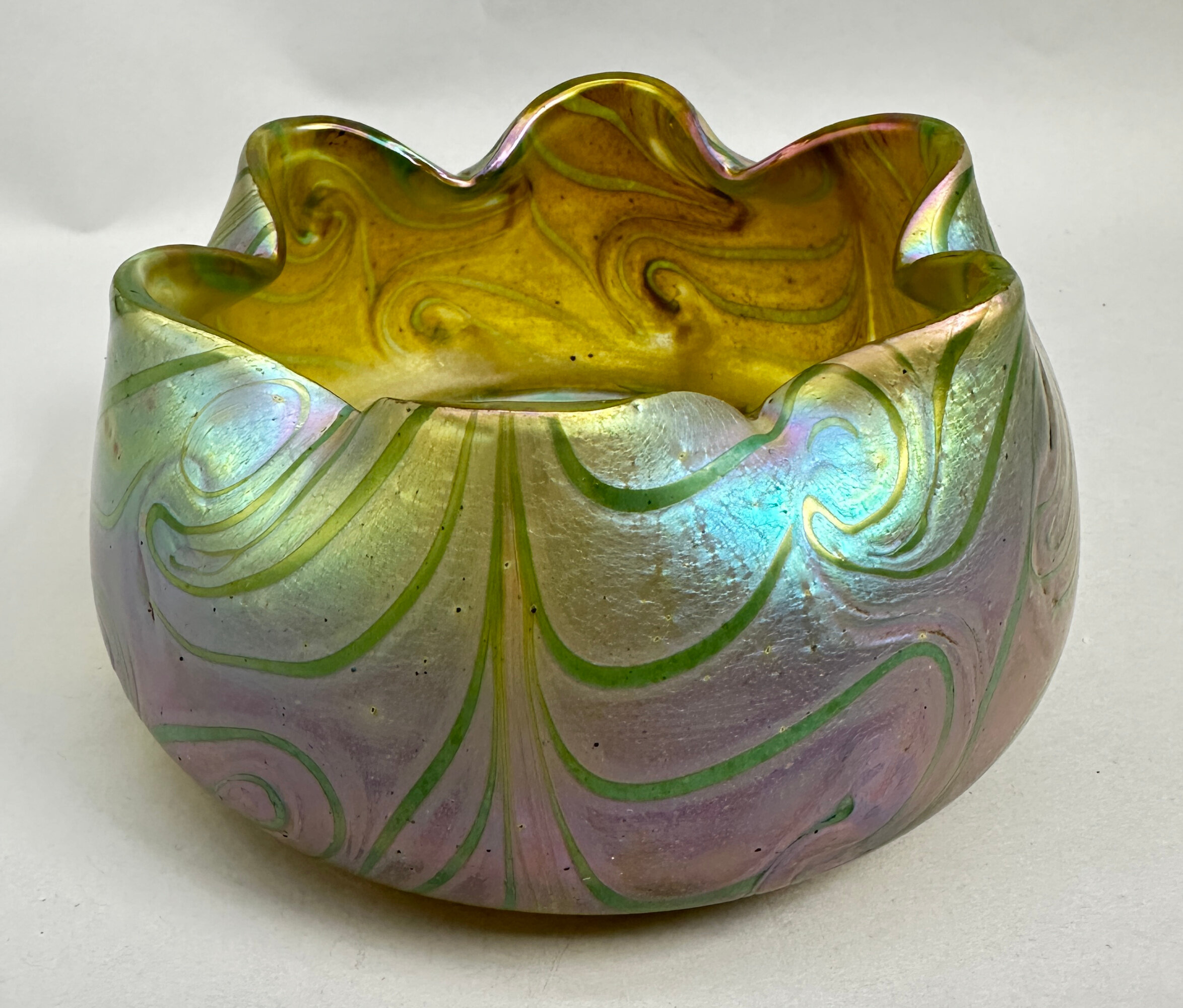
Loetz style glass Bowl, early C20th
Price: £110Most of the original Loetz pieces were not signed and there were many contemporary manufacturers making pieces in a similar style. There are, furthermore, modern reproductions. The attribution ‘Loetz’, is, inevitably, generously and loosely applied but sometimes true certainty is hard to achieve. Much information and assistance can be obtained from the website Loetz.com. On that basis this attractive bowl with its crimped rim and wavy line design on a purple ground is best regarded as Loetz style but probably contemporary with the output of the Loetz factory itself. It has great decorative appeal nevertheless.
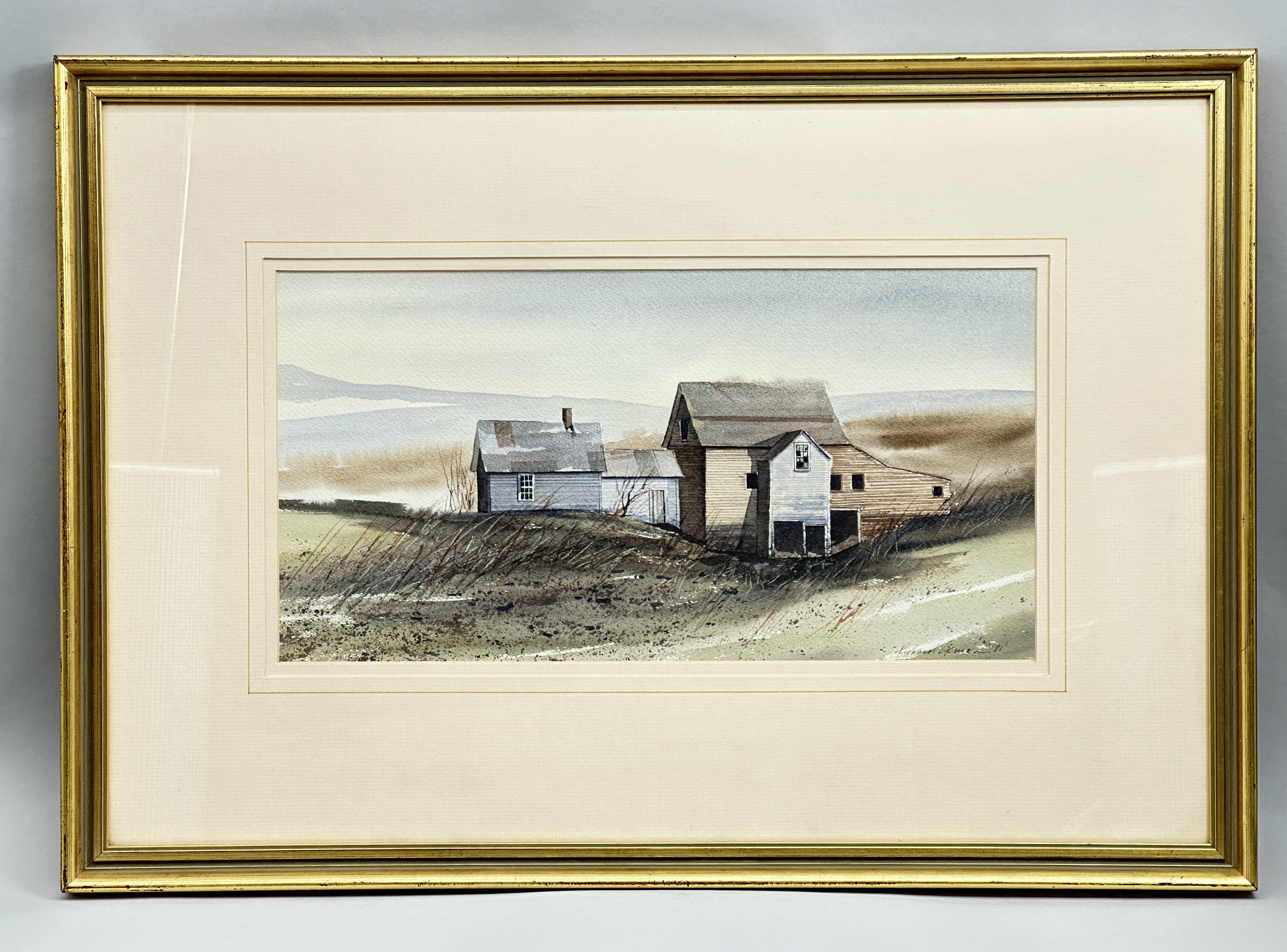
Signed Watercolour of Farm Buildings, Richard Akerman (1942-2005), dated 1981
Price: £110..............................................................................…………………………………………………………………………………………..............................…
Richard Akerman was born in London in 1942. He attended the Hornsey College of Arts and Crafts in the early 1960s, studying a general fine art course which incorporated printmaking and sculpture. His first exhibition was at the Obelisk Gallery in Crawford Street, London, where his work was displayed alongside works by famous surrealists such as Man Ray and Salvador Dali, implying that the style of his early work matched that of his more famous contemporaries. Years of travel followed in both Europe and the Far East and this seems to have turned him to painting in a more coventional style. A succession of watercolours was to follow with subjects ranging from still life and flowers to garden and architectural subjects. His work became immensely popular through the prints made from his original paintings, indeed such was the demand for them that he rivalled Monet as a subject for reproduction in this medium becoming, in a sense, quite a household name with exhibitions of his work internationally.
The path to success, however, was not straightforward and one account of him, written by his son Marcus, mentions running a hot dog stand alongside joining the artists with their weekend displays of works for sale on the railings at Kensington Gardens. Convivial and outgoing (a self portrait captures him well : see image 9), Akerman was married with three children and spent the latter years of his life in Spain where he sadly died after an accident in 2005.
But his work survives him and the prints produced in his lifetime can still be obtained today, giving an accesible overview of his output. The style is approachable with an attractive use of colour and often slightly impressionistic brushwork. But there are works executed in a more precise style, for example a signed watercolour ‘Hot House Flowers’, exhibited by the Edinburgh Gallery in 1994 (see image 10) and this is seen in the work we have on offer. The location of this group of farm buildings is uncertain but Akerman painted similar scenes which appear to be located in Kent and this may well be the case here. Original watercolours by Akerman are not so easily found but what increases the rarity and interest of our picture is that the artist’s signature, done in a slightly more precise hand than the signatures found in the reproduction prints, has the date in addition (’81). We have been unable to find any other example of this and it leads to the possibility that this is a work which the artist painted for himself. Certainly there are no reproductions of it. If so, then it is of particular interest and more than worthy of inclusion in a collection C20th British watercolourists with the addition of being an original creation by an artist who enjoyed such great popularity with the general public.
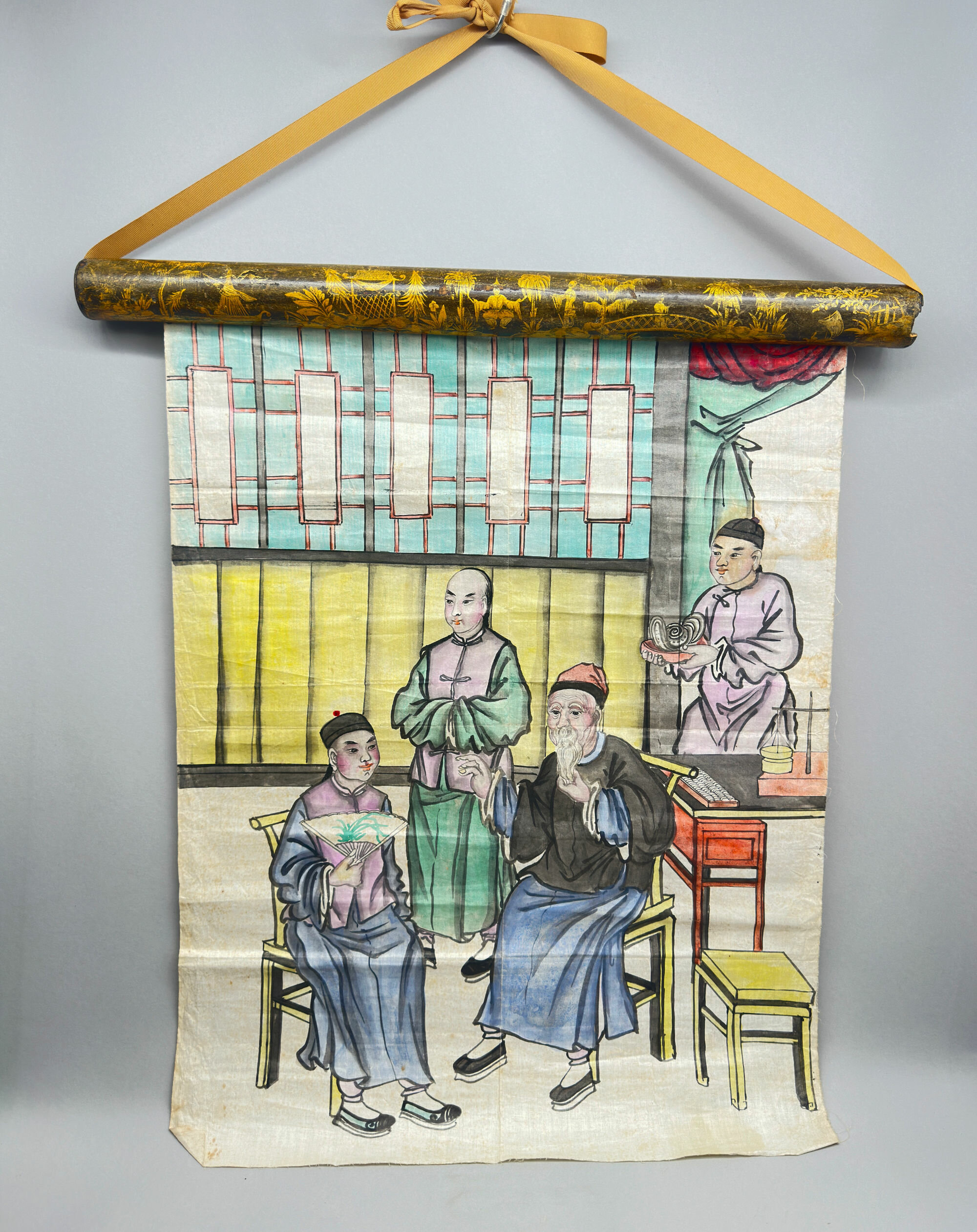
Chinese Scroll Painting of a Merchant and his Client, C20th
Price: £45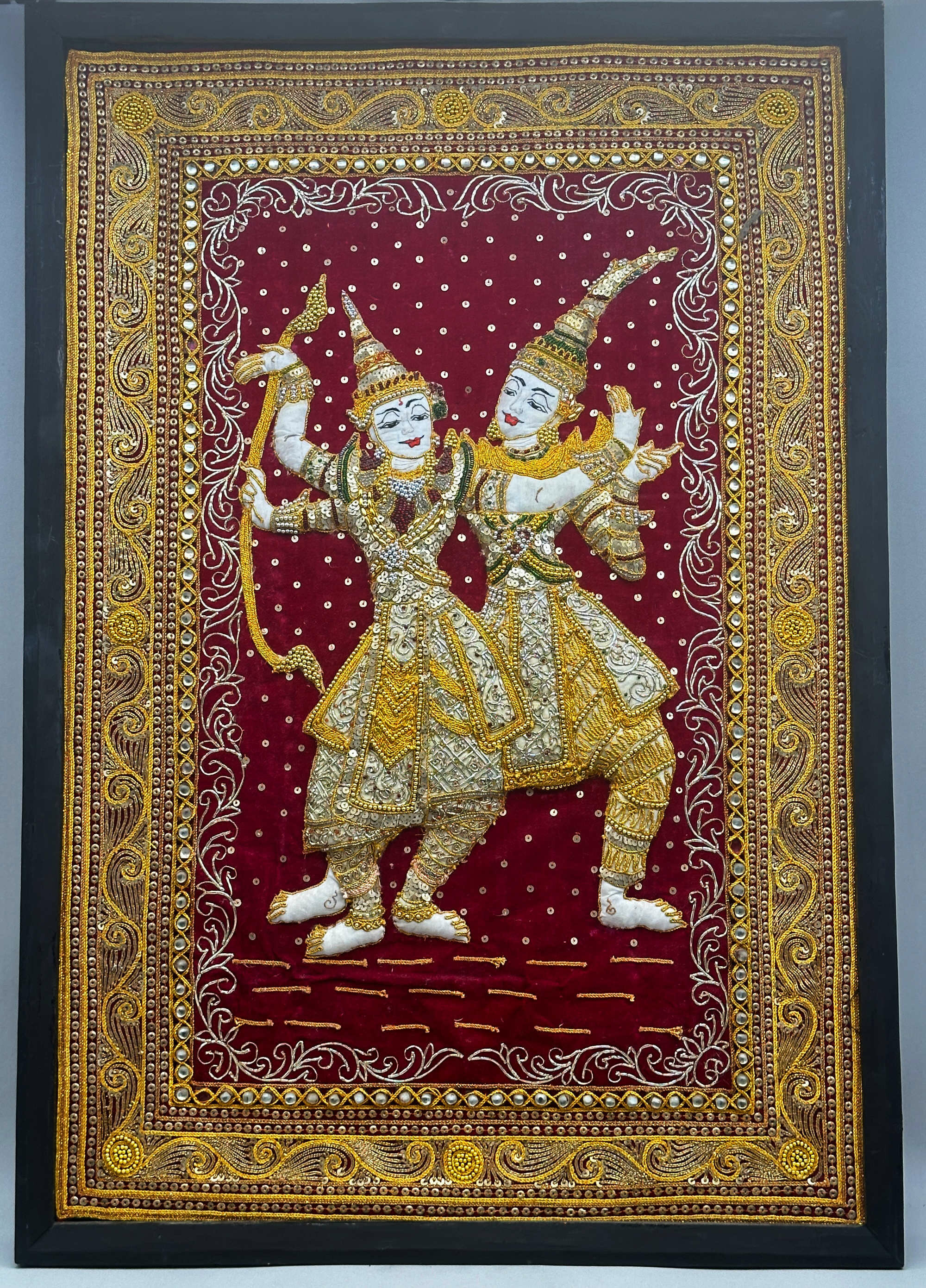
Large Burmese Textile with two dancing figures, probably second half C20th
Price: £110The distinctive style of embroidery and applied work here is typical of Burmese work known as ‘Kalaga’ which means ‘curtain’ in Burmese and is used to refer to heavily embroidered appliqué tapestry sewn with a technique called ‘shwe gyi do’. First produced around 150 years ago, Kalagas are generally linen, silk, cotton or velvet background fabrics embellished with sequins, embroidery, beads, coloured stones, tiny pearls, coral, braids and metal threads, the choice of materials depending in part on the client’s budget. Cotton padding was used to produce the ‘3D’ effect seen here and on many other examples of the work. The elaborate decoration meant that some of the larger pieces could take many months to produce which is likely to have been the case here. Dating is difficult and a mid C20th attribution here is probably sensible but an earlier period of manufacture is quite possible. The hanging has been recently mounted on board and fitted with a simple frame making it ready for display in a contemporary interior.

Pair of Italian faux tortoiseshell earrings, 1980s
Price: £15PLEASE NOTE THAT THERE IS FREE UK SHIPPING ON THIS ITEM. For international buyers the shipping cost will be reduced by the UK shipping cost, so don't worry if you are outside the UK, you still receive this benefit!

Nesting Set of Four Small Brass Trays with an engraved designs of Bats, Chinese C20th
Price: £30
Stunning rope and tassel necklace, signed, c1990
Price: £45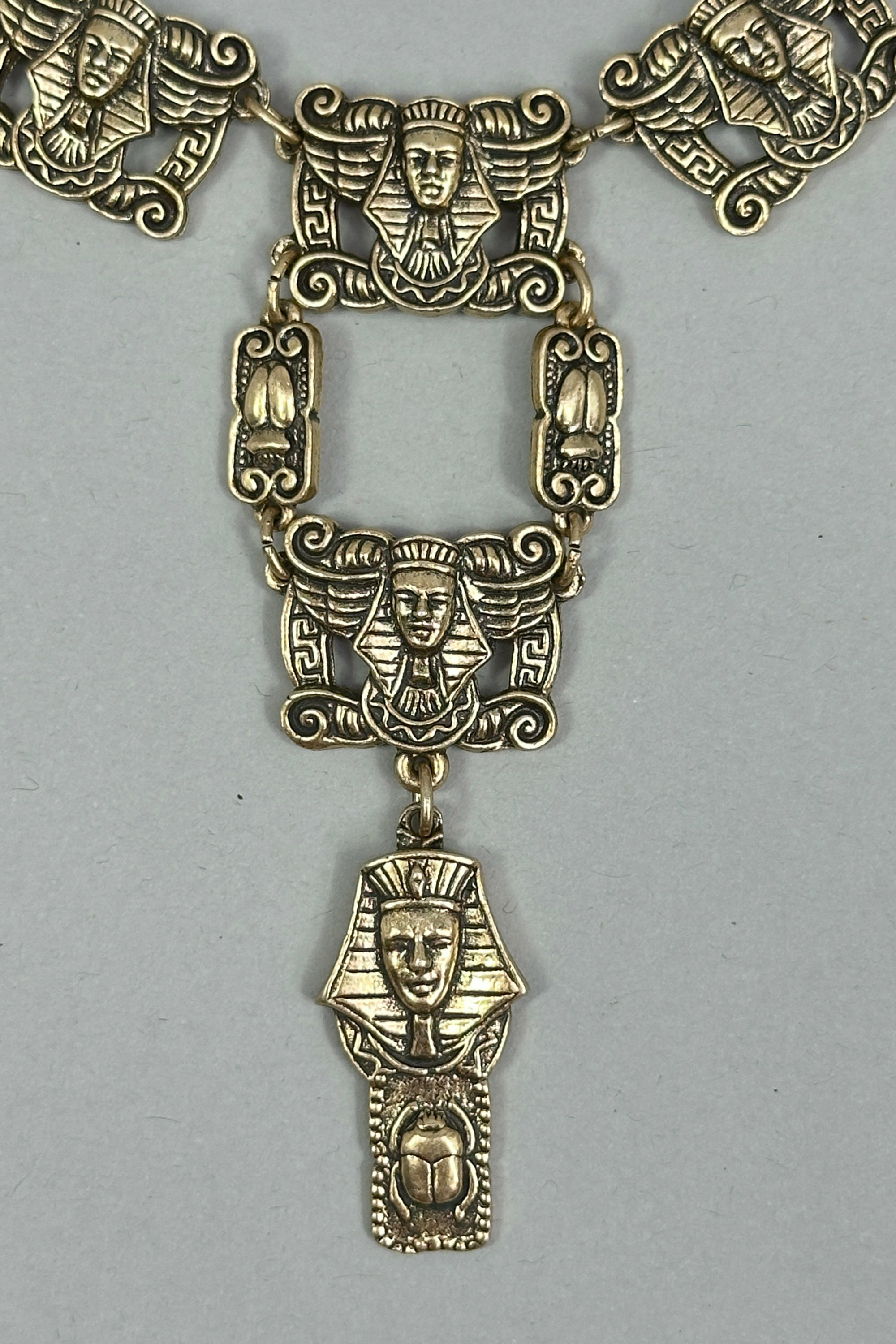
Egyptian Revival necklace depicting Tutankhamun c1980
Price: £45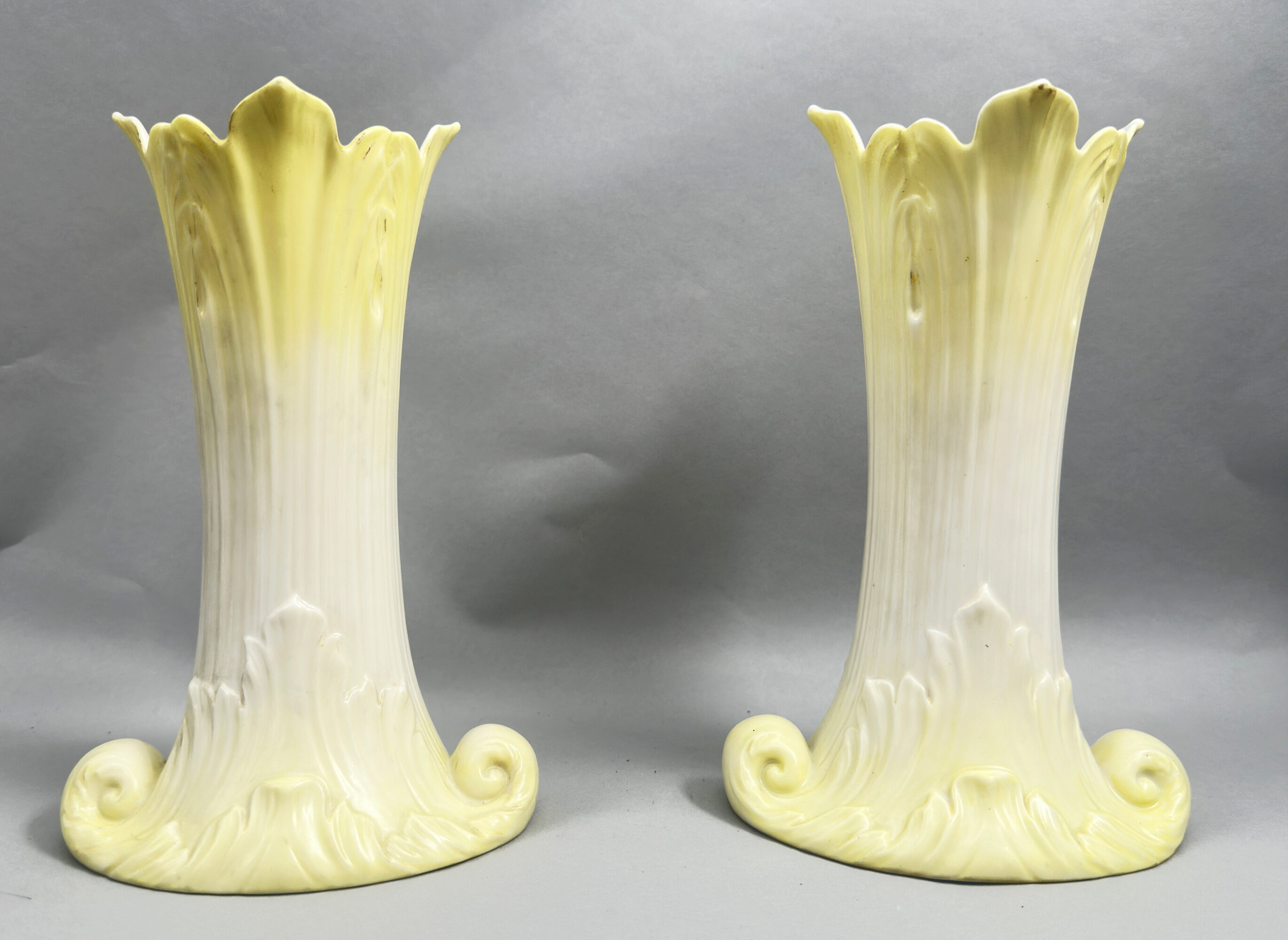
Pair of Royal Worcester Grainger and Co Vases, date mark for 1902
Estimate: £80 – 120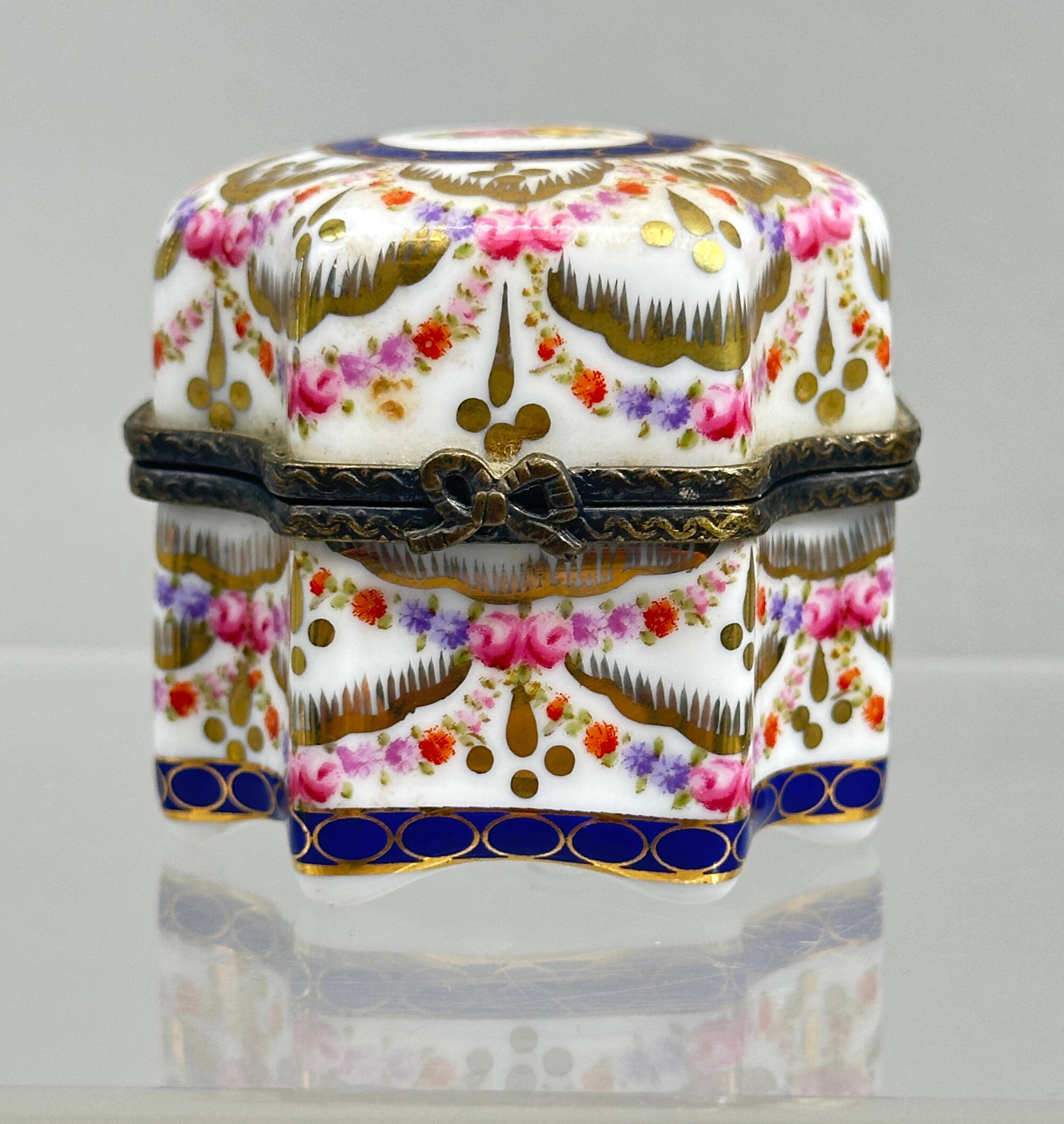
Reproduction Limoges Porcelain Box with Scent Bottles, Modern
Price: £25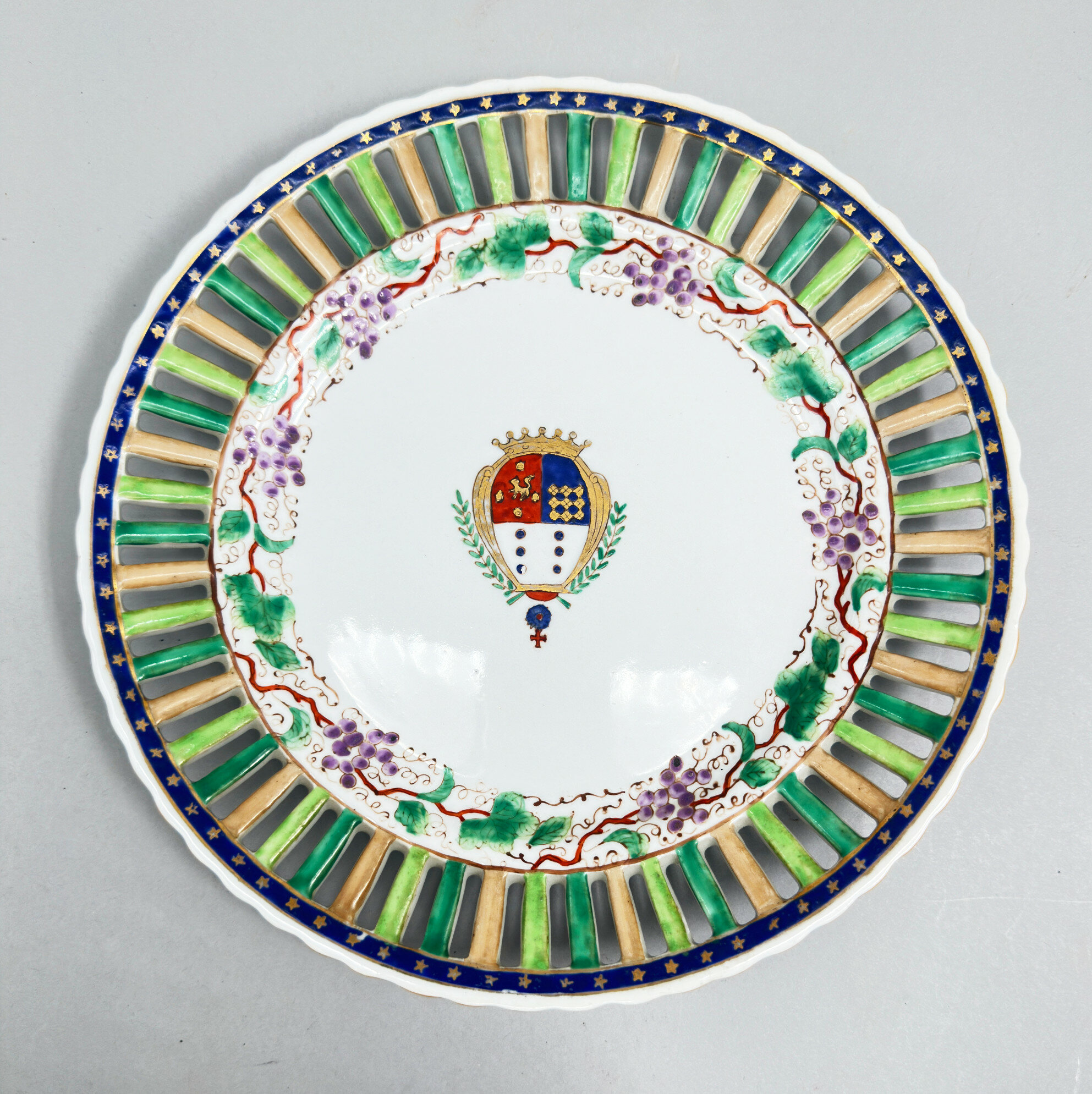
Compagnie des Indes style reticulated edge Armorial Plate, Chinese C20th
Price: £45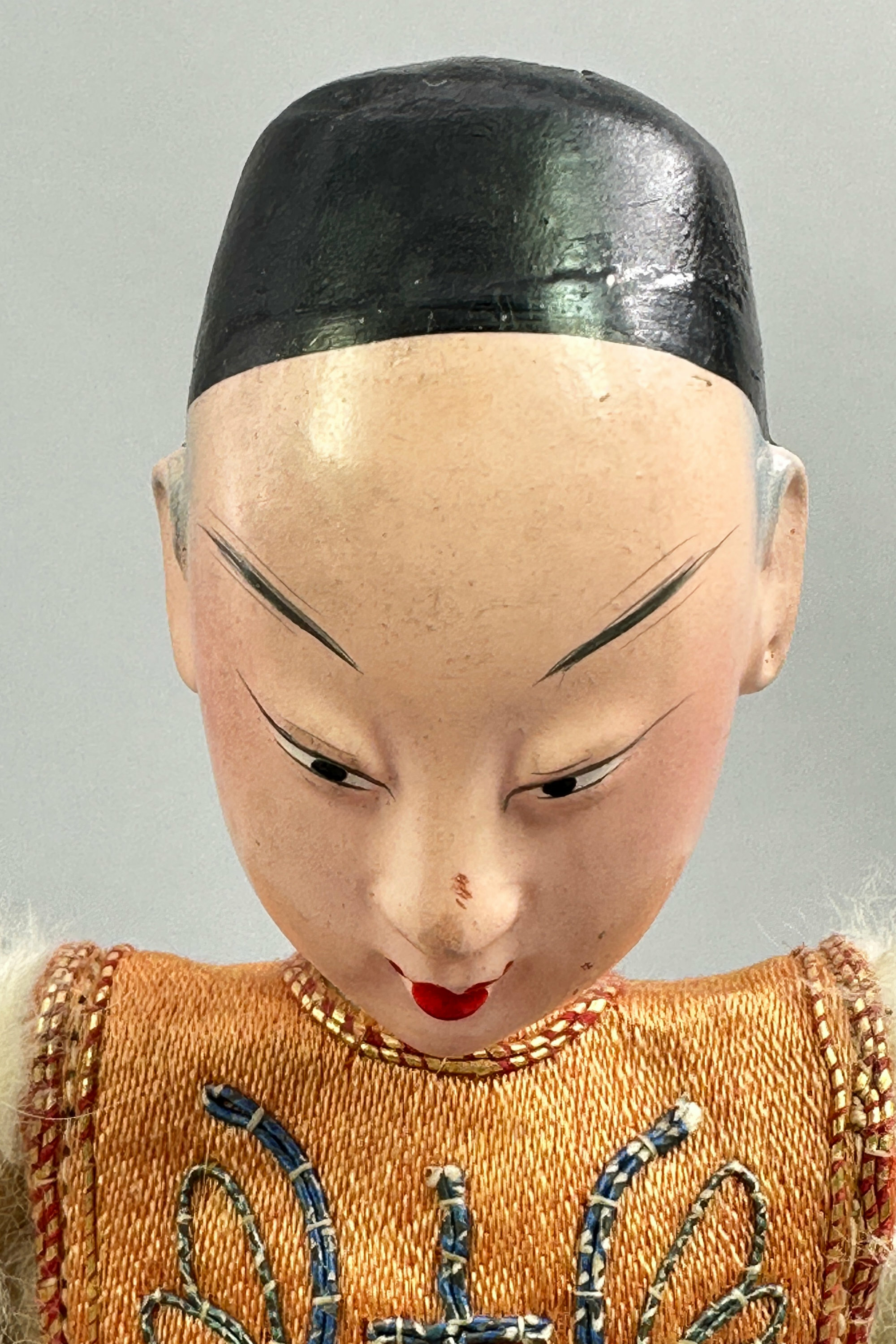
Chinese Doll of a man dressed in traditional costume, early C20th.
Price: £95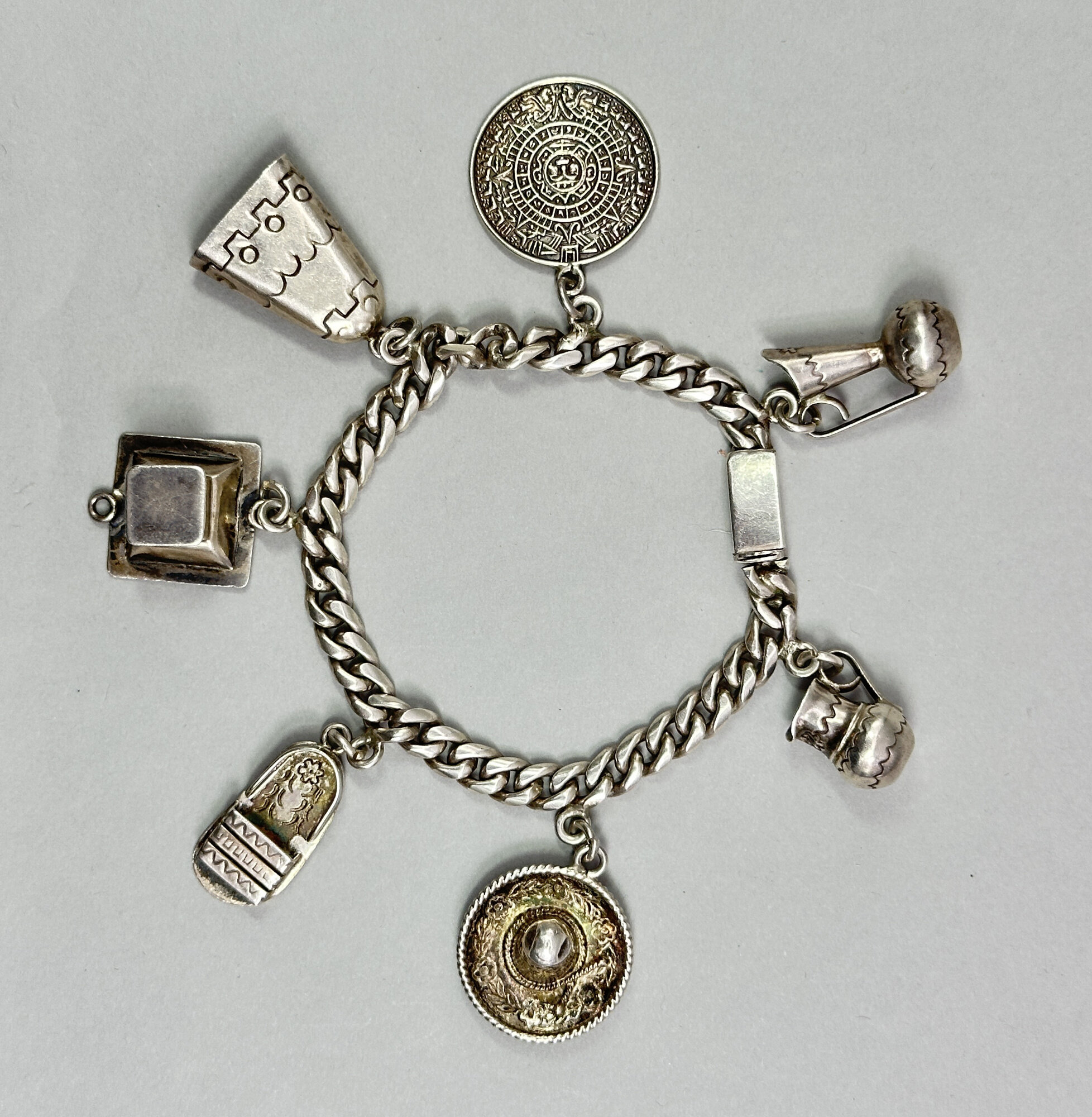
Taxco charm bracelet, makers mark Castelan, 1950s
Price: £85
Japanese Kutani Shell Shape Dish, circa 1880
Price: £55Kutani (the word means 'nine valleys') porcelain was made at various factories in the former Kaga province of Japan. The earliest pieces were in a completely different style employing a palette of colours emphasising green, the so called 'Ko Kutani'. Production of this ceased around 1730, and manufacturing was not revived until the early nineteenth century when the more familiar colourings of iron red and gold were introduced. Many pieces were exported to the West in a variety of forms including vases and wall plates. This shell dish is more unusual; the shape is more normally found in Chinese ceramics. Perhaps one of an original pair, this dish, like its Chinese counterparts, was probably intended as a serving dish and could even be used as such today although it can well stand as a decorative item.

Ceramic and Bronze figure of a Blue Tit, Albany Worcester, late C20th
Price: £35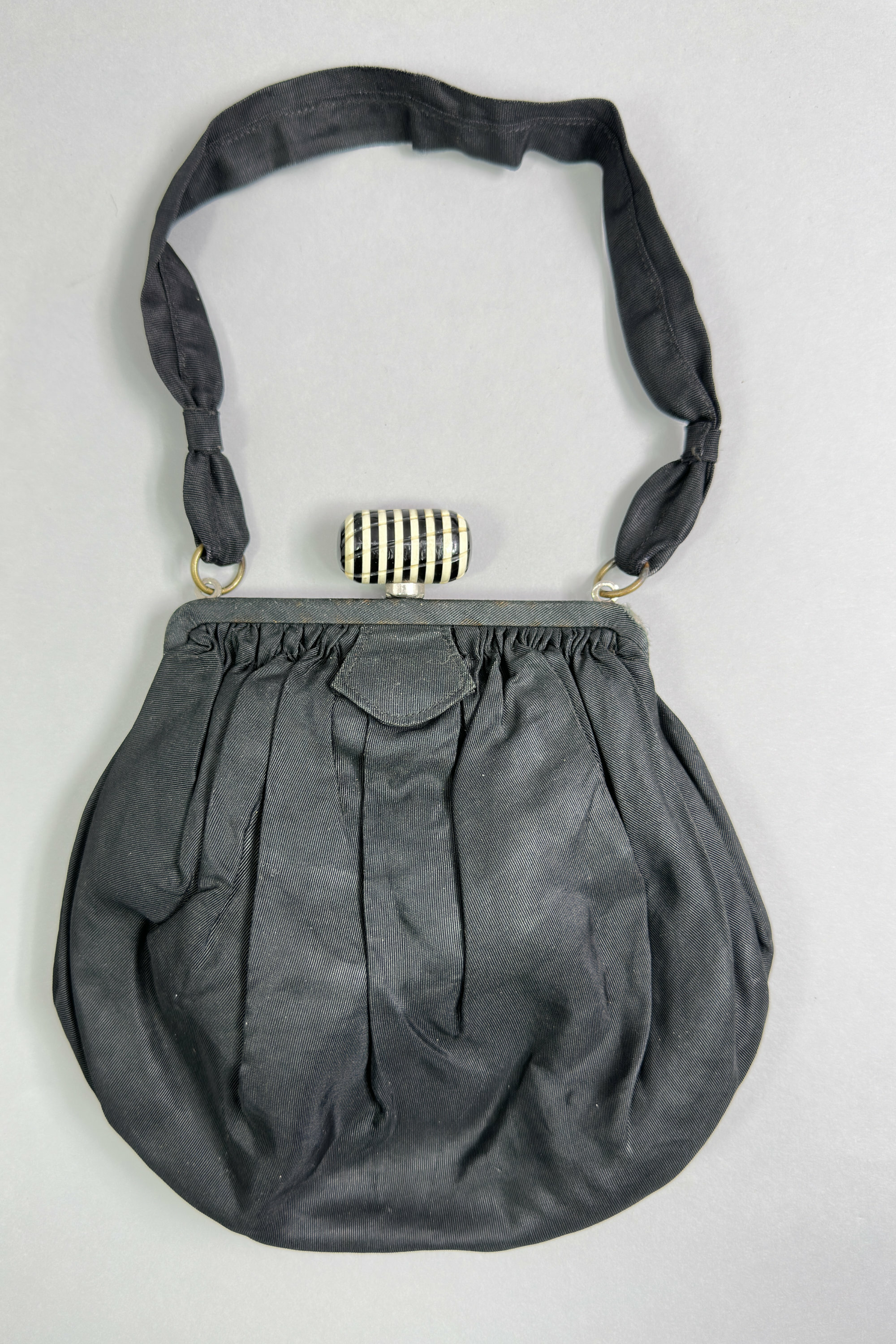
Small Art Deco wrist bag with Bakelite closure, French 1920s
Price: £35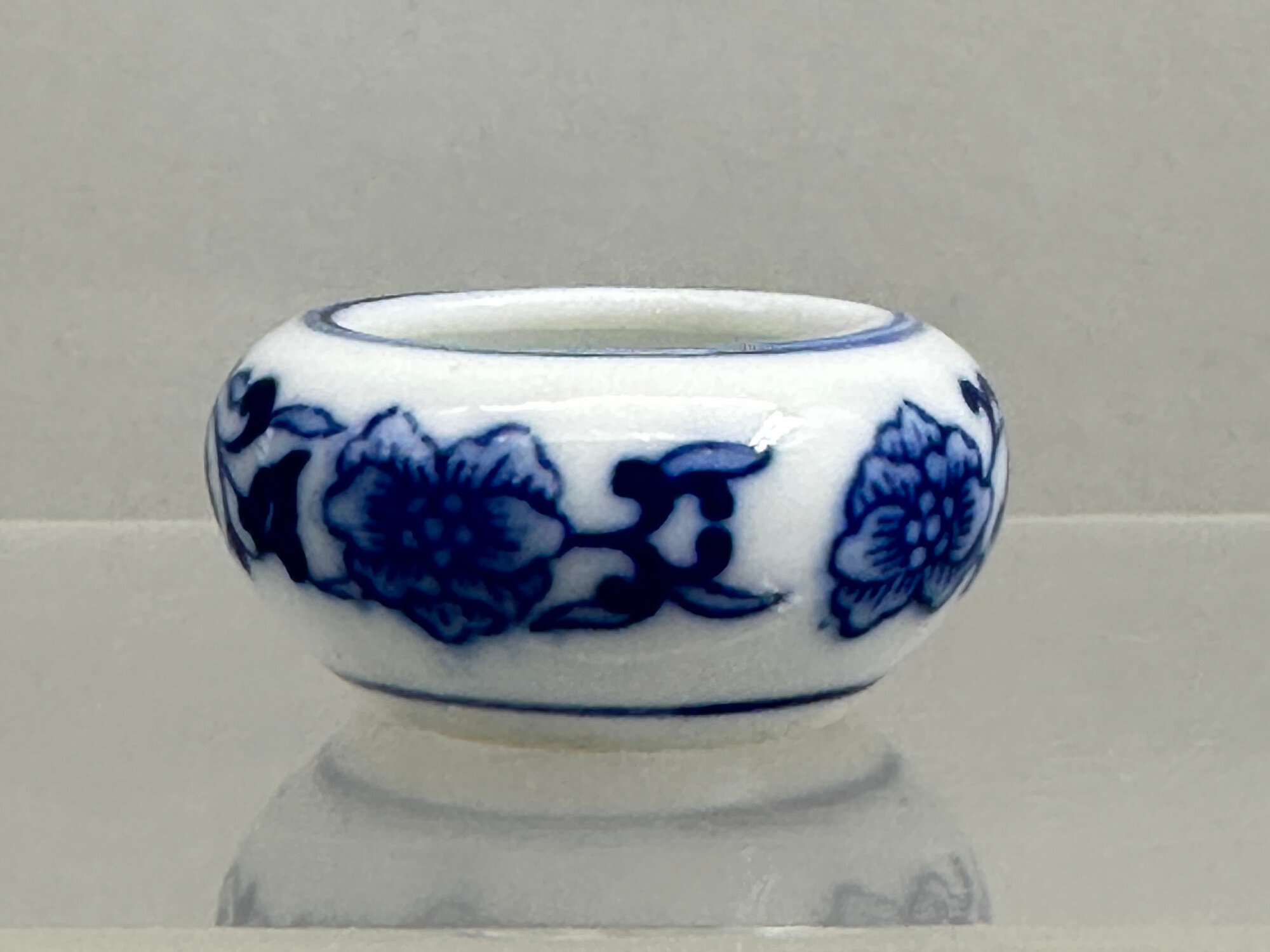
Small Chinese Blue and White Brushwasher, C20th
Price: £25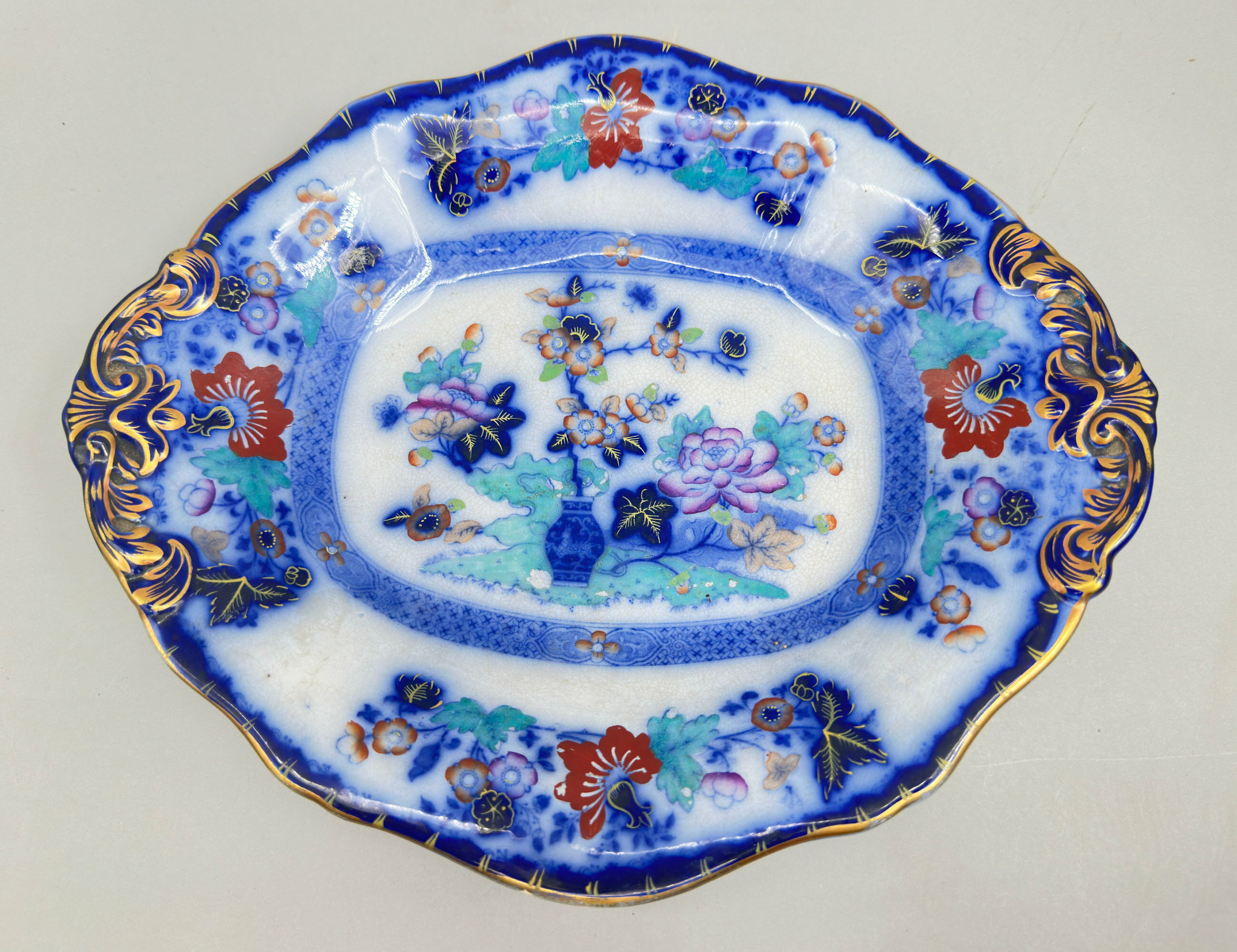
Bombay Japan pattern deep Dish, Minton or Samuel Alcock, English mid C19th
Price: £25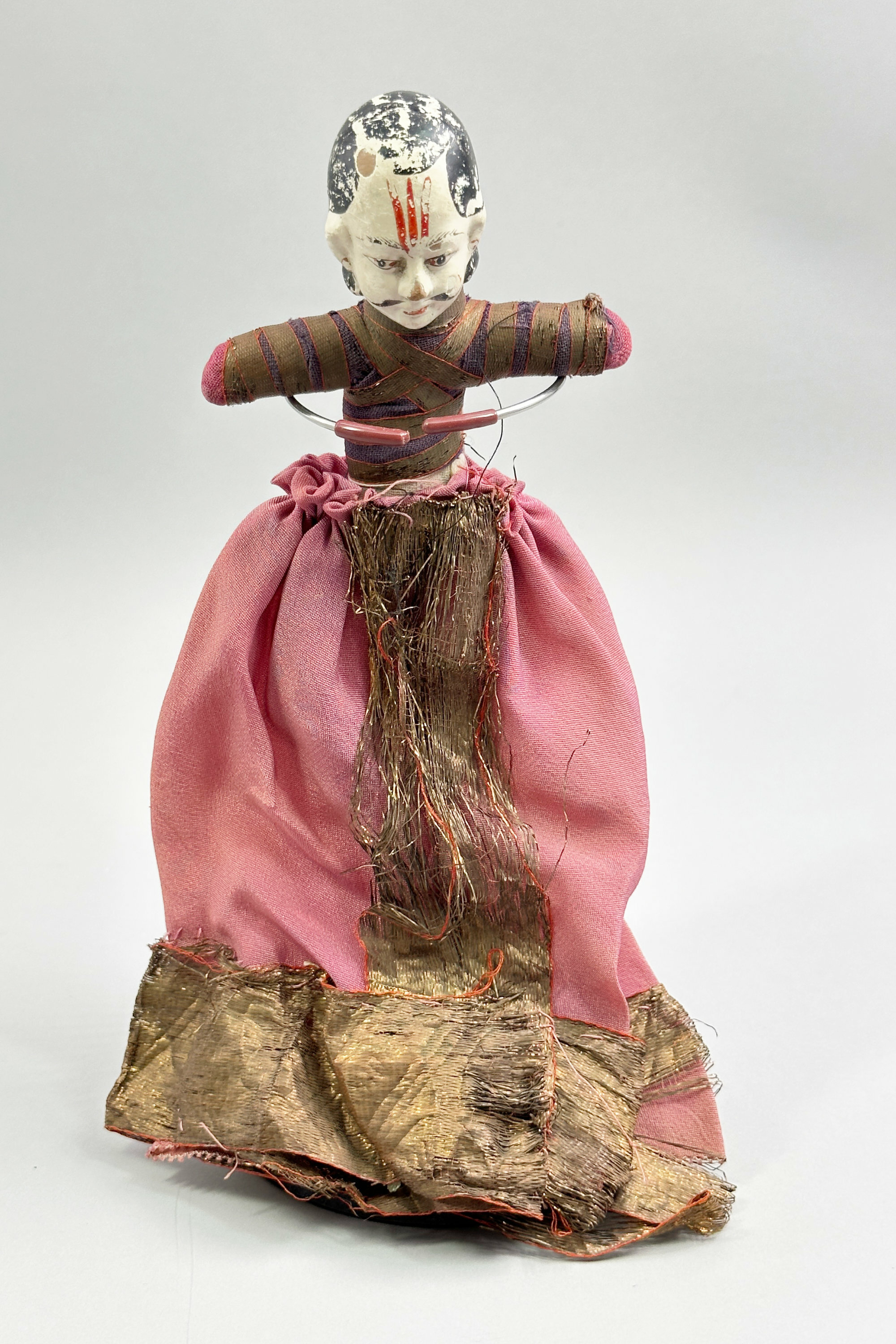
Burmese doll figure of a Priest, C20th
Price: £45
Striking continental silver modernist bracelet c1960
Price: £55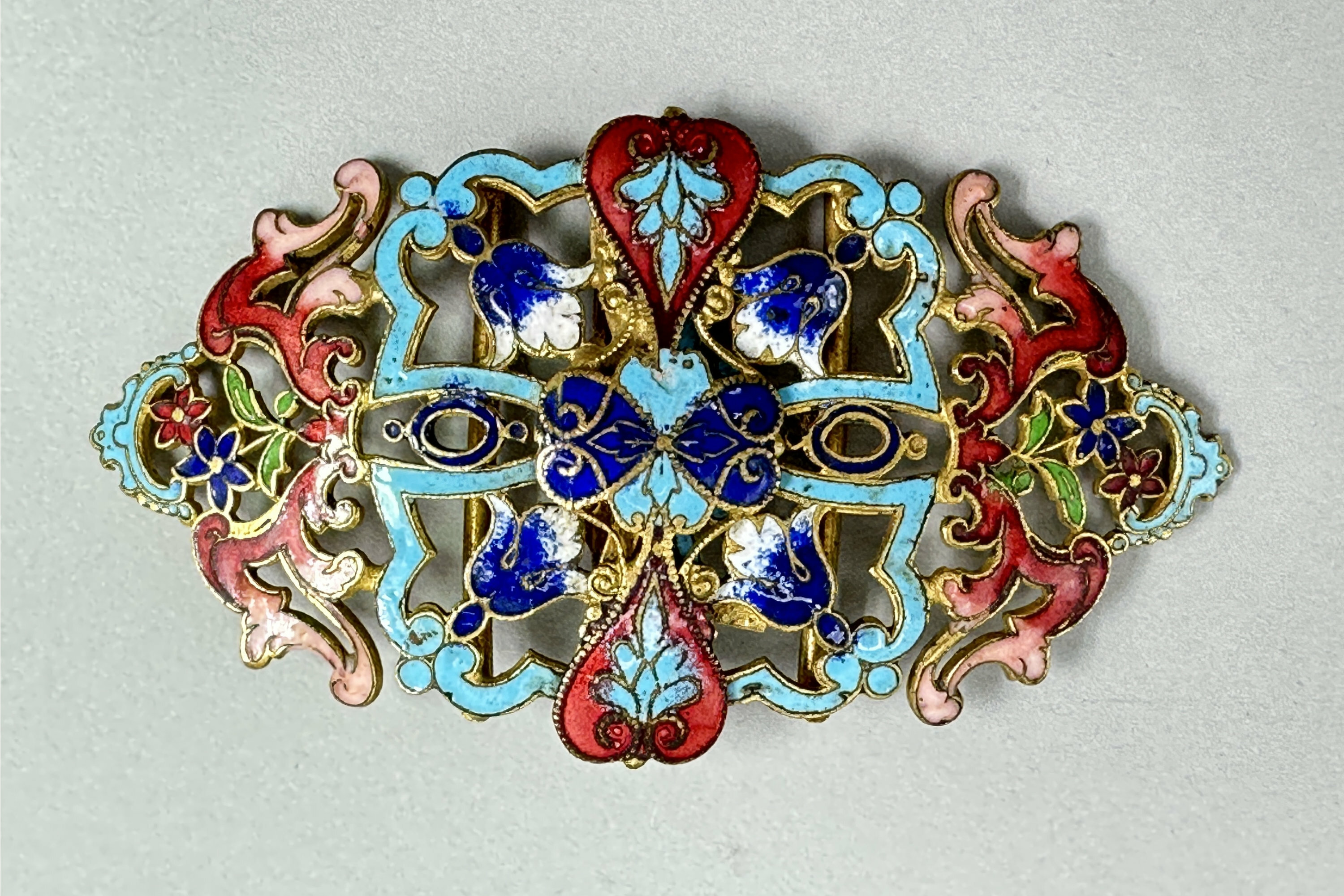
Victorian enamel buckle c1900
Price: £45
Paris tourist novelty bracelet c1950
Price: £35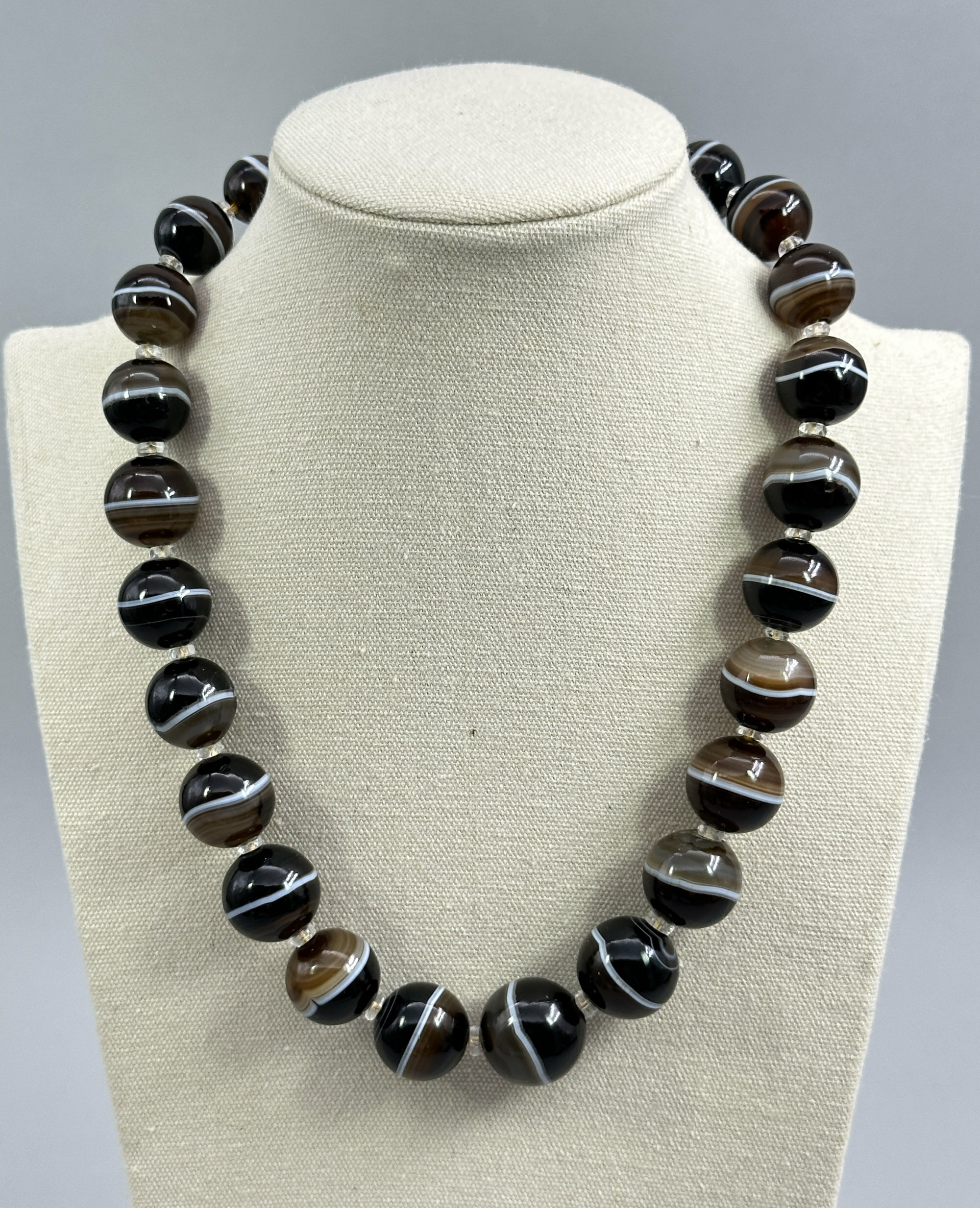
Victorian set of matched Scottish agate beads c. 1880
Price: £450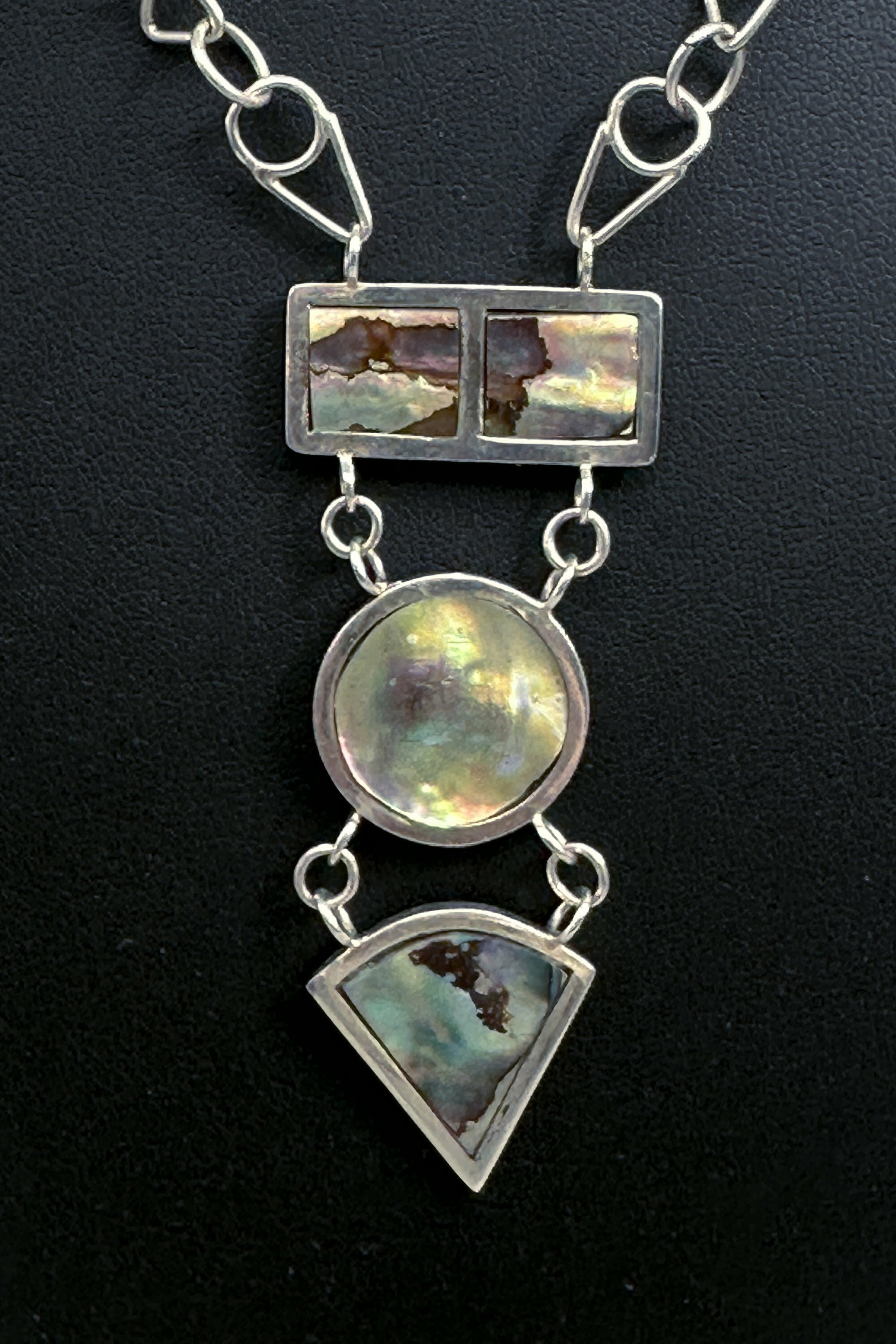
Abalone and silver modernist design Necklace, modern
Price: £60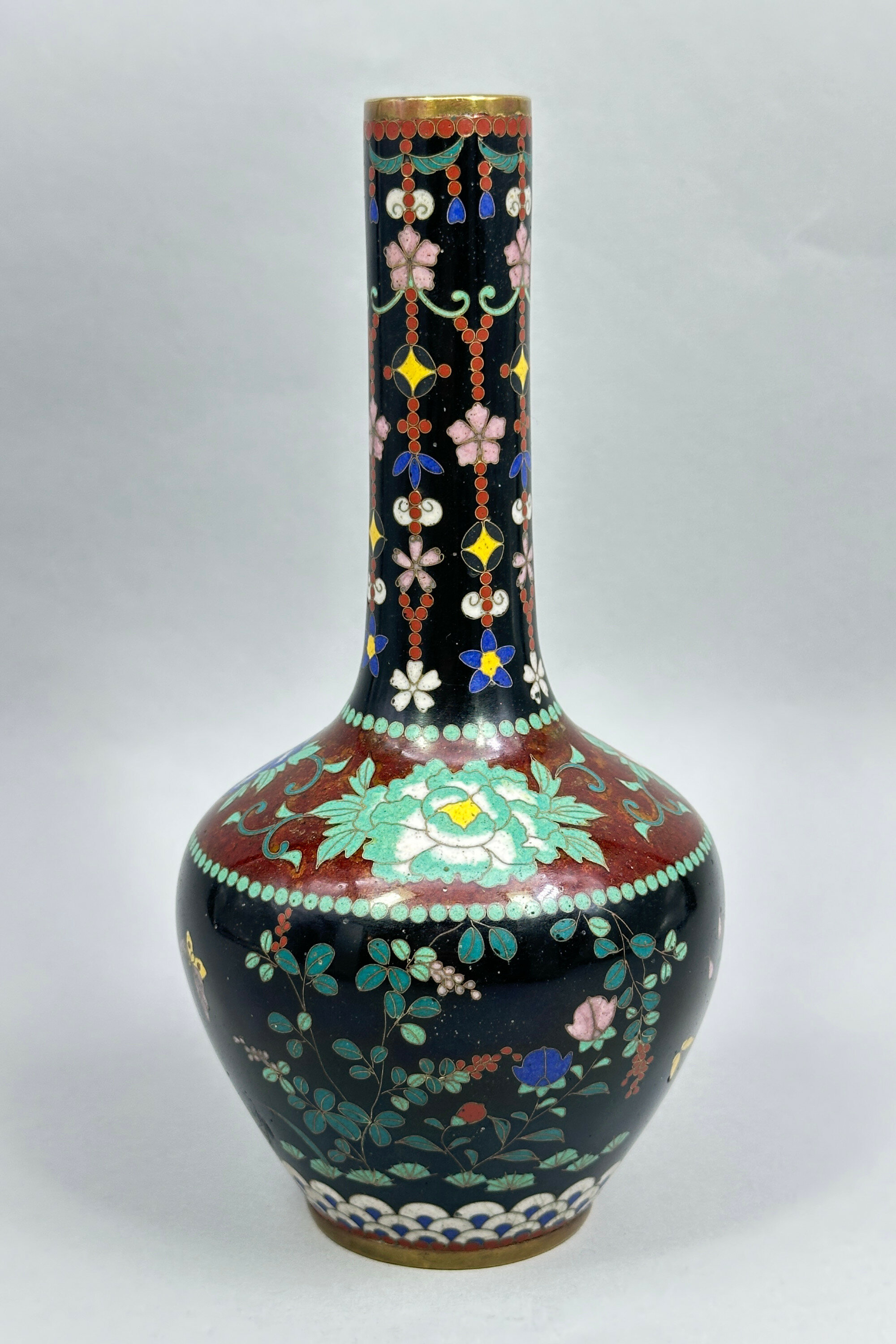
Fine quality Japanese Cloisonne bottle form Vase with black ground, late C19th
Price: £45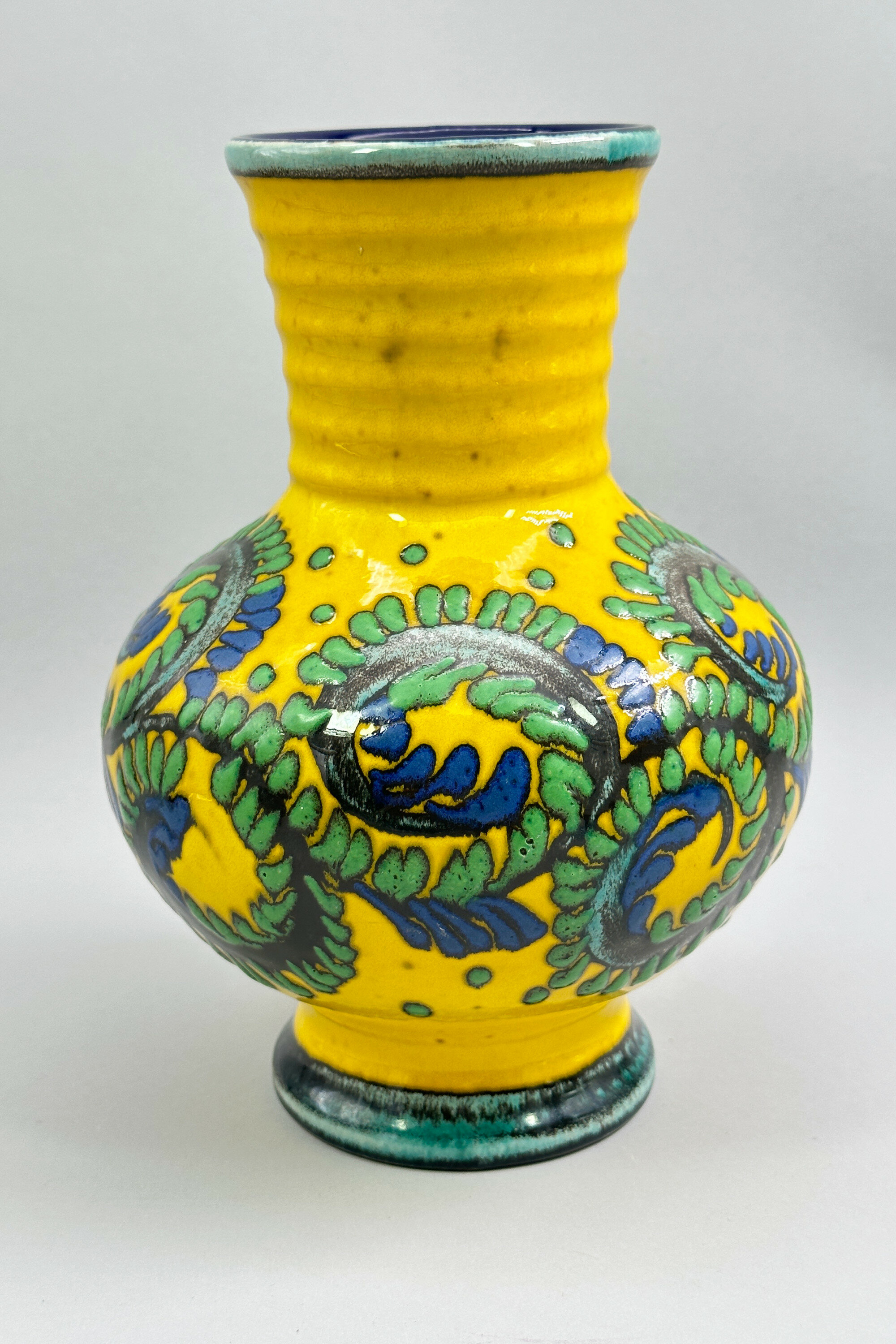
West German Ceramic Vase, Marei, 1970s
Price: £45While not stamped with a maker's mark, vases of this type are attributed to the West German Ceramics factory Marei which produced pieces from 1949 to 2016. Marei was the commonly used abbreviation for the firm's name which was Majolikafabrik Rheinbach Jean Fuss and Sohn. The pieces are distinguished by the use of a reddish clay but this was sometimes more brown or dark brown depending on the suppliers used. Marks are usually impressed into the base although these are often just pattern numbers, as here. Many pieces are unmarked and some are stamped 'MADE IN GERMANY' or 'W.GERMANY'. The pattern number here is '7104'and is found on similar pieces with the same shape but different decoration. This vase was probably made in the 1970s and is typical of the striking designs the firm produced.

Doulton and Slaters Patent Jardiniere circa 1890
Price: £750The Doulton factory began production in 1815, first at Vauxhall and later moving to Lambeth. In 1882 it opened an additional factory at Burslem, Stoke on Trent in the centre of the English pottery. Known at first mainly for utilitarian works it began to develop decorative wares more extensively in the 1860s and soon gained a reputation for its distinctive designs. As the mark indicates, this piece was made at the Lambeth factory and the absence of ‘England’ in the Doulton mark, which has the typical design of interlocking ‘D’ at its centre, indicates that it dates to before 1891. The decorative technique, employing impressed designs was known as ‘Chine’ ware and protected by the patent ‘Doulton and Slaters Patent’ which is clearly marked underneath. Pieces of linen, lace, net or other fabrics were pressed onto the unfired soft clay shortly after potting, leaving a corresponding pattern behind. This piece has elaborately modelled lotus strands in addition as well as gilt flower heads, an unusual combination which does not seem to often occur. On the base are found stamped numbers and letters which should indicate the pattern number and artist decorator but it has not been possible to identify these accurately. Dating though is confirmed and this was clearly a deluxe item amongst the range of pieces produced at that time.
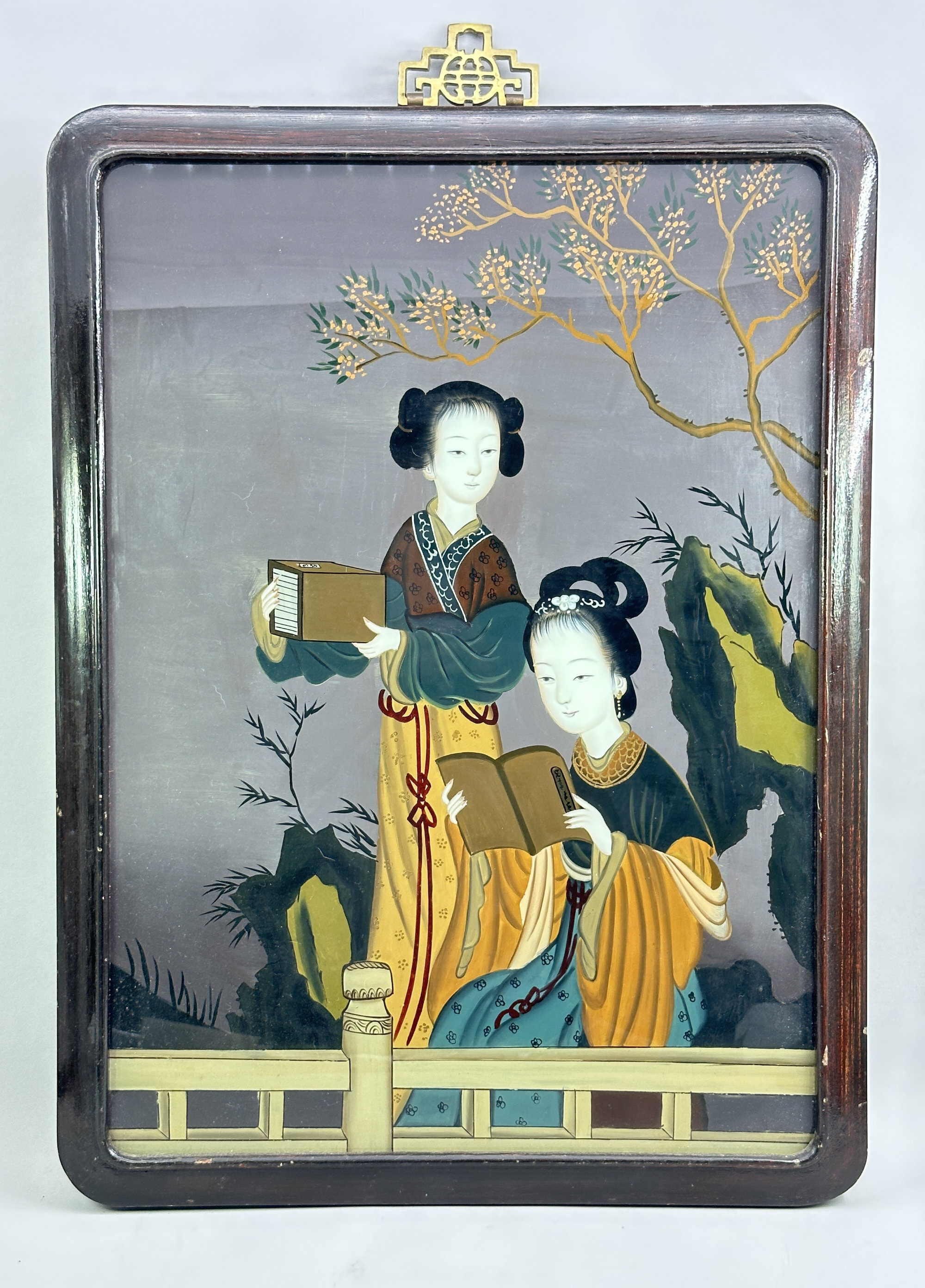
Chinese Reverse Glass Painting of Two Ladies on a Garden Terrace, first half C20th
Price: £240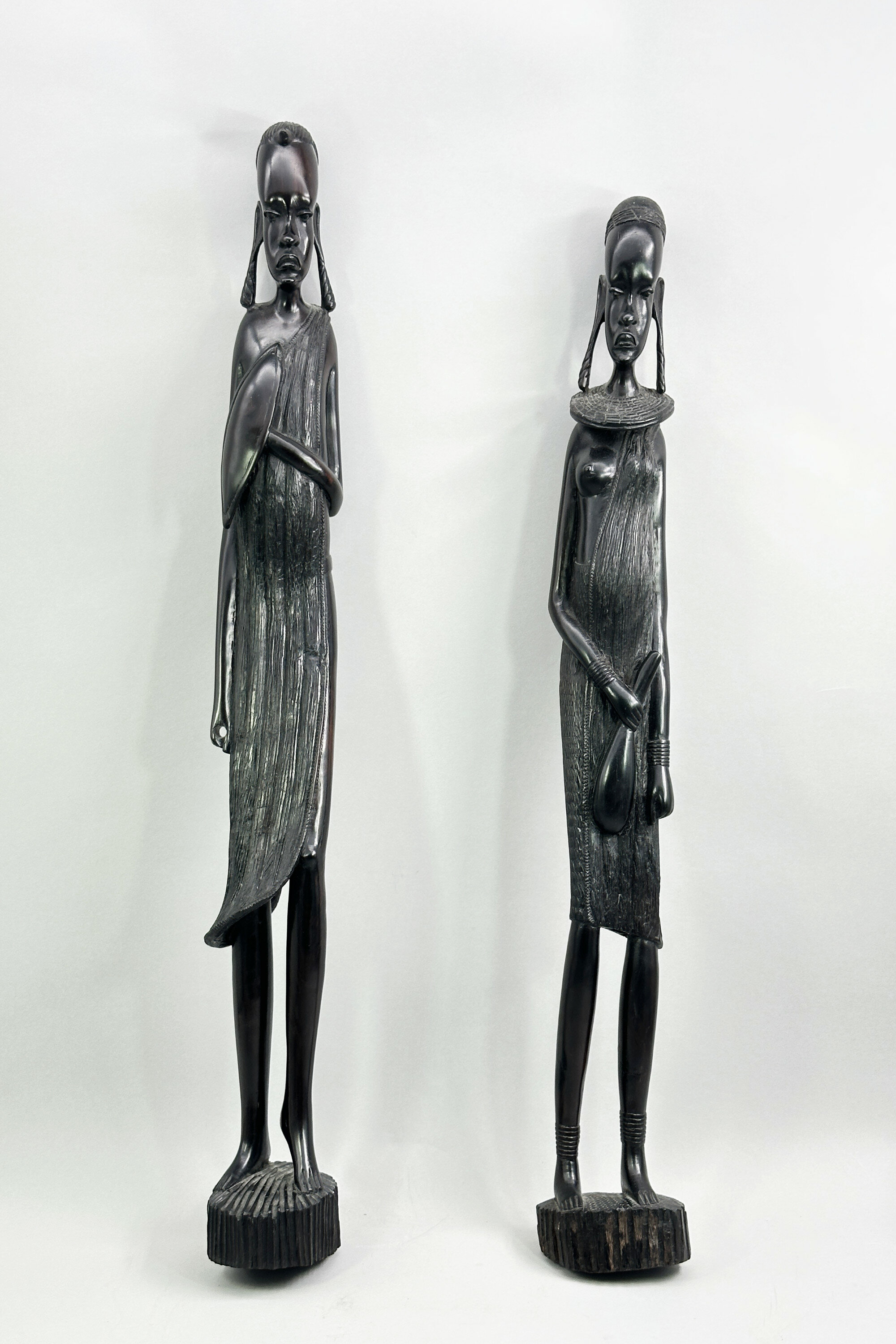
A Pair of African Ebony Wood Makonde Style Carved Figures, probably late C20th
Price: £55Maasai and Makonde are ethnic terms used to describe African peoples who live in Tanzania, Mozamique and Kenya, with their own distinctive languages, culture and art. This pair of figures is typical of the wood carvings produced by their craftsmen in the second half of the twentieth century but their quality and size is well above average, the ebony wood finely rendered with much attention to detail and finished with a highly attractive glossy patina. The two figures complement one another well, their heads slightly turned to face one another with their legs turned slightly outwards and their robes flowing almost in mirror image. The abstract style makes them well suited to a contemporary interior where they could prove a striking accessory.

Vintage Carved wood bust of a Lady, Bali, Indonesia, second half C20th
Price: £75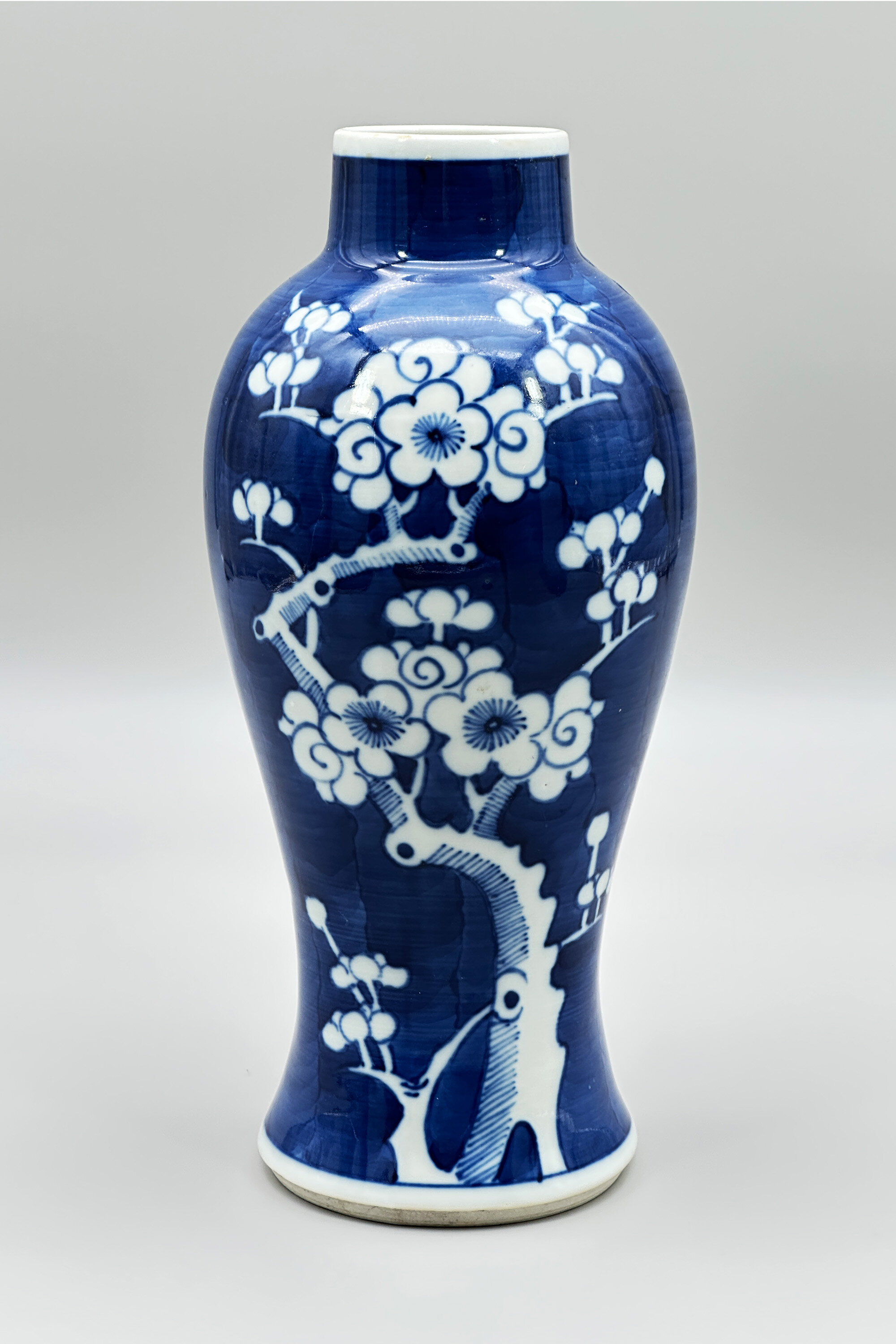
Chinese Blue and White Vase decorated with flowering Prunus circa 1900
Price: £55Flowering prunus or plum blossom is one of the most iconic of the decorative designs used by Chinese potters and first appears in the Kangxi period (1662-1722). Kangxi ginger jars in the pattern were highly prized by Victorian collectors with one example, the legendary ‘Huth’ jar, fetching 5900 guineas, a little over £6000, at auction in 1905, a price equivalent to over a quarter pf a million pounds today. The tree symbolises perseverance and renewal and was usually shown against a pattern of ‘cracked ice, representing the end of Winter and the beginning of Spring. Branches of plum blossom convey the ‘Five Blessings’ : longevity, wealth, health, love of virtue and a peaceful death. The number five was an auspicious number for the Chinese and is reflected in the five petal form of the prunus flower.
Once evolved, the design was continuously repeated by Chinese potters and is even produced today. Many of late nineteenth century pieces display a rather more slapdash interpretation of the pattern as here where the ‘cracked ice’ of the eighteenth century pieces is replaced by the repeated brush strokes of a blue wash ground and the painting of the tree itself is sketchy. The style of decoration and the paste of the foot indicate a circa date to around 1900, but this modest interpretation of centuries old pattern still possesses a charm of its own.
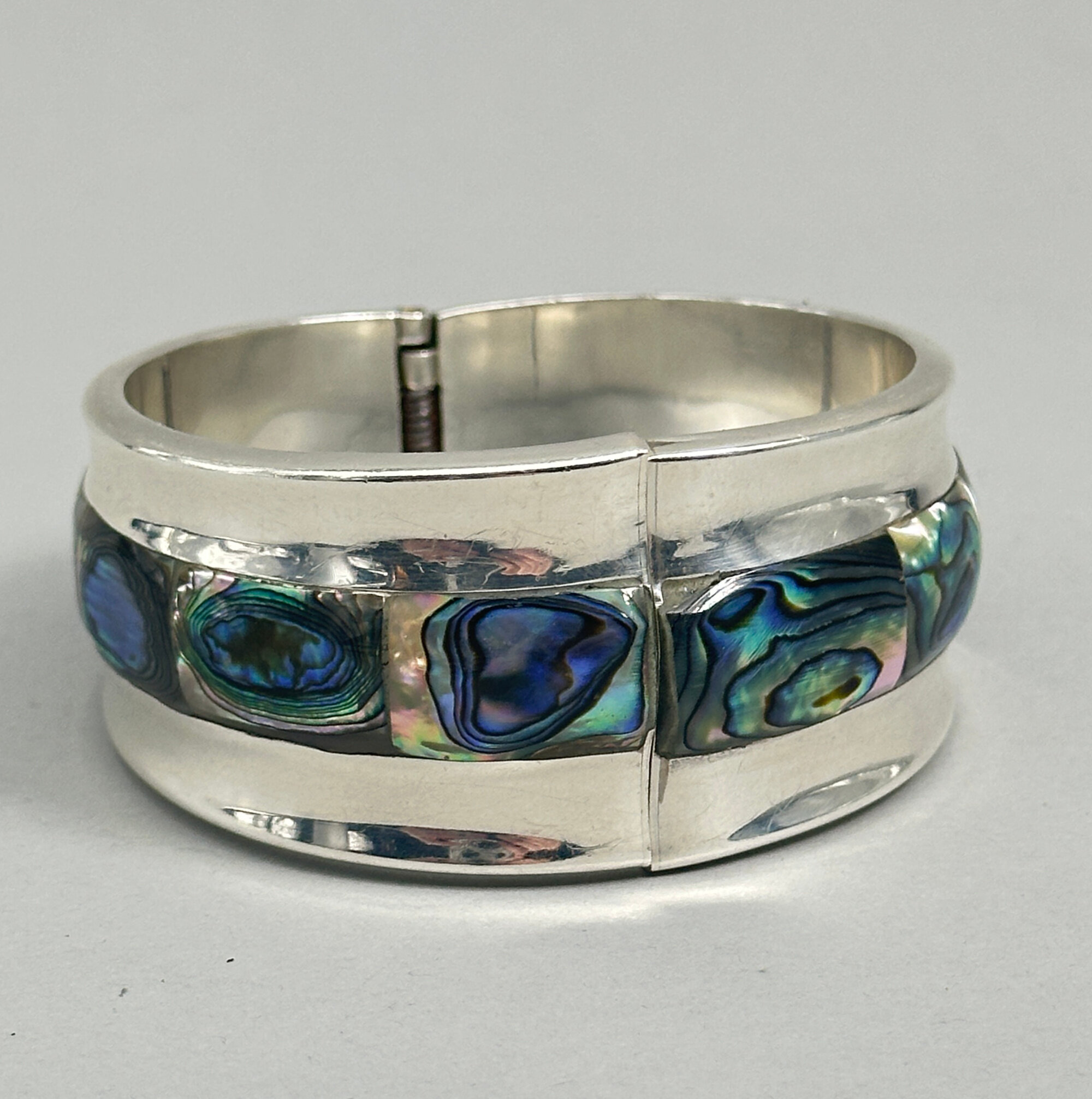
Outstanding Taxco silver and abalone Bangle c1980
Price: £200
Chinese Straw Thread Picture on Silk, framed in original box, late C20th
Price: £45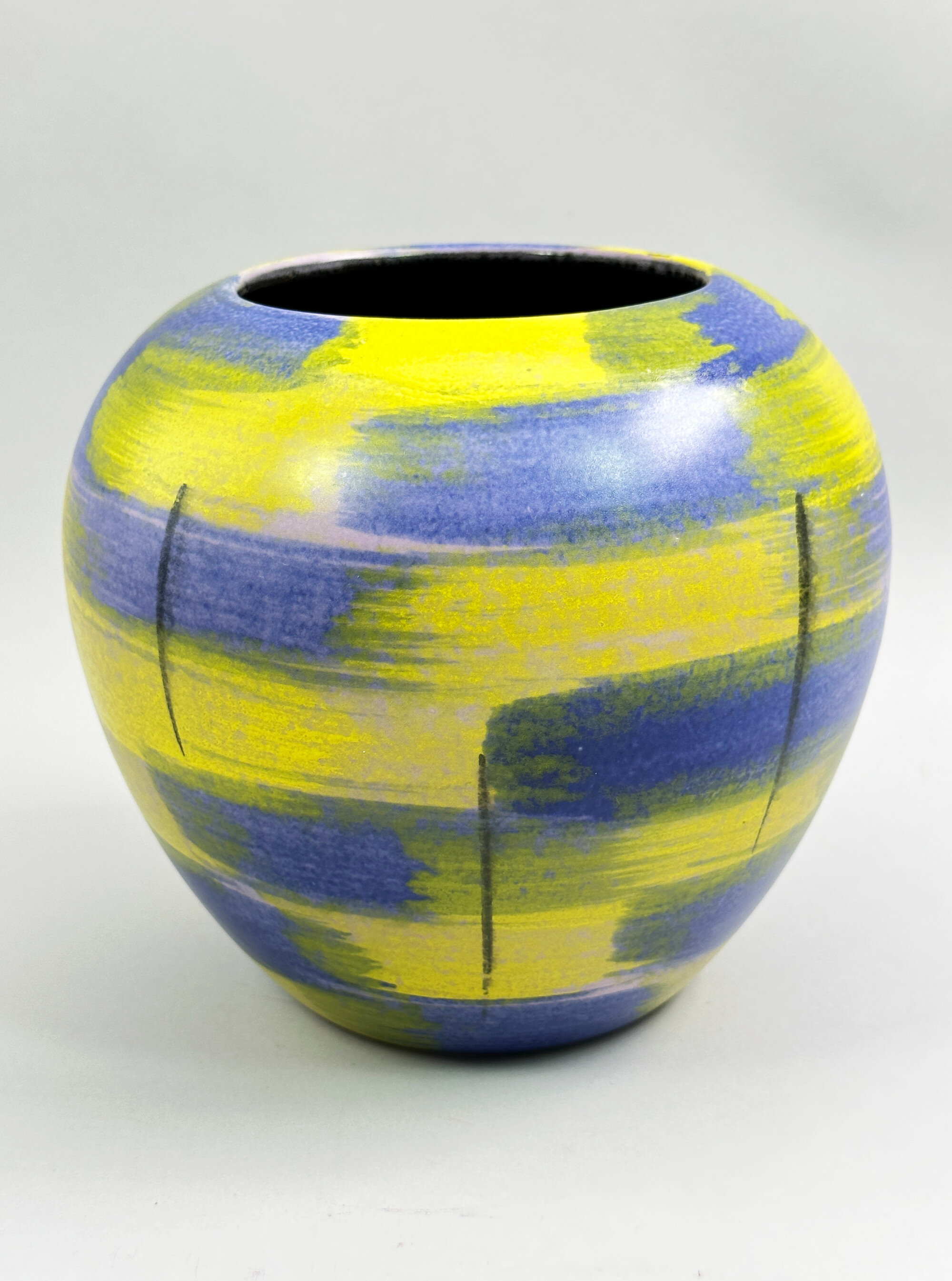
East German Ceramic Vase, VEB Haldensleben, 1950s
Price: £35The factory mark, a shallow dish superimposed over the letter 'H' inside a circle, is that of the East German pottery VEB Haldensleben. VEB stands for 'Volkseigener Betrieb', meaning a people-owned enterprise and used in relationship to the state owned workplaces in the GDR. Haldensleben is a town in Saxony-Anhalt, Germany and a ceramics factory was created there in 1945 with the nationalization of the Carstens Uffrecht plant that followed the division of Germany at the end of WWII. Halsdenleben focused primarily on the manufacture of vases. Its output tended to be of superior quality and employed more restrained glazes than those used by its West German counterparts. Upon the reunifucation of Germany in 1990, the factory was returned to its original owners, the Carstens family. The pattern number here is found on other pieces with the same shape but the abstract decoration used is quite individual and evocative of 1950s and early 1960s designs.

Classic black crocodile handbag 1940s
Price: £75
Vintage Brass Pocket Case with a lid, probably a Vesta case for Matches, circa 1900
Price: £55
Vintage Brass Vesta Case in the form of a Violin, circa 1900
Price: £55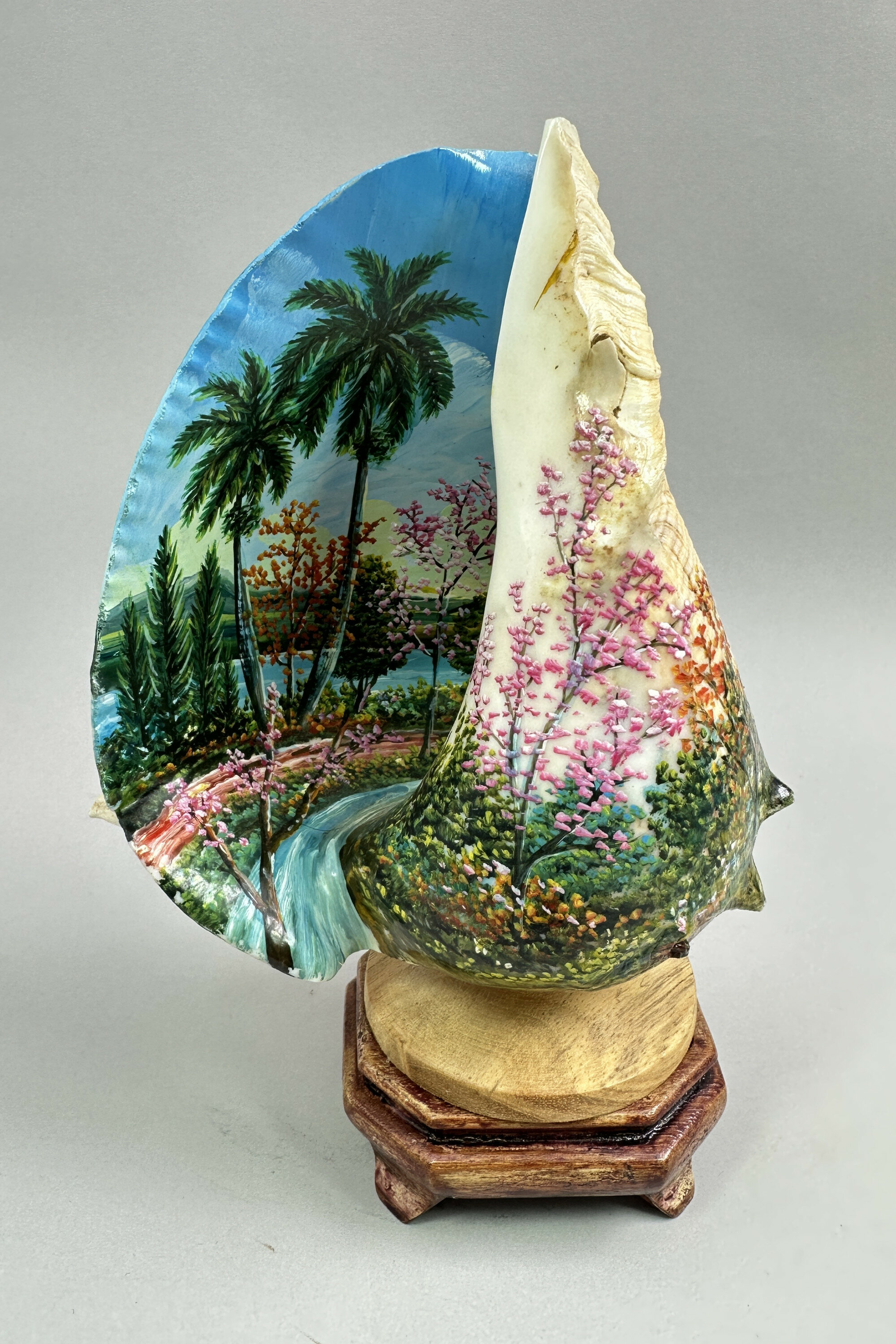
Kitsch Style Conch Shell with painted landscape decoration, C20th
Price: £45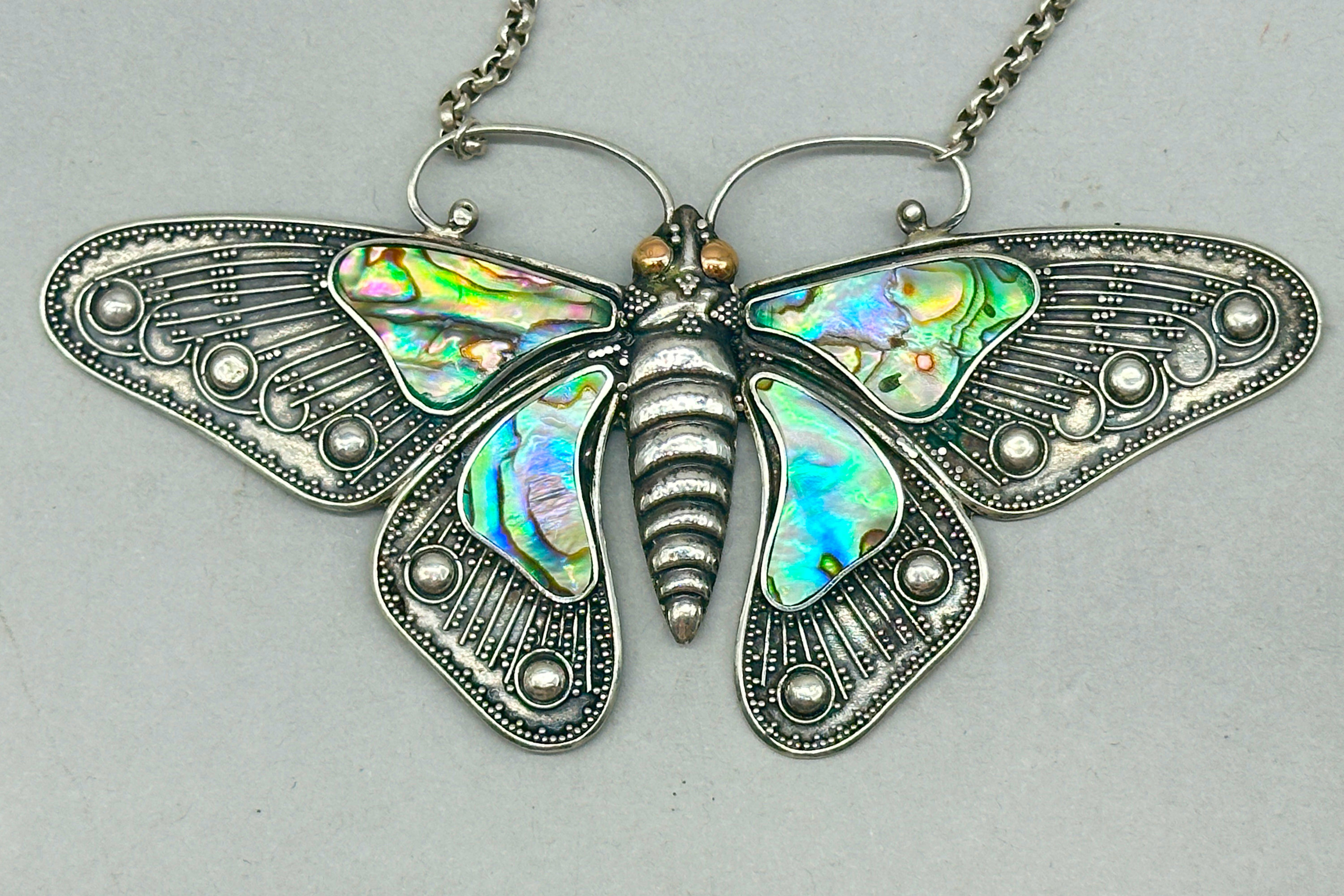
Silver Butterfly form Pendant set with Abalone, Bali, C20th
Price: £95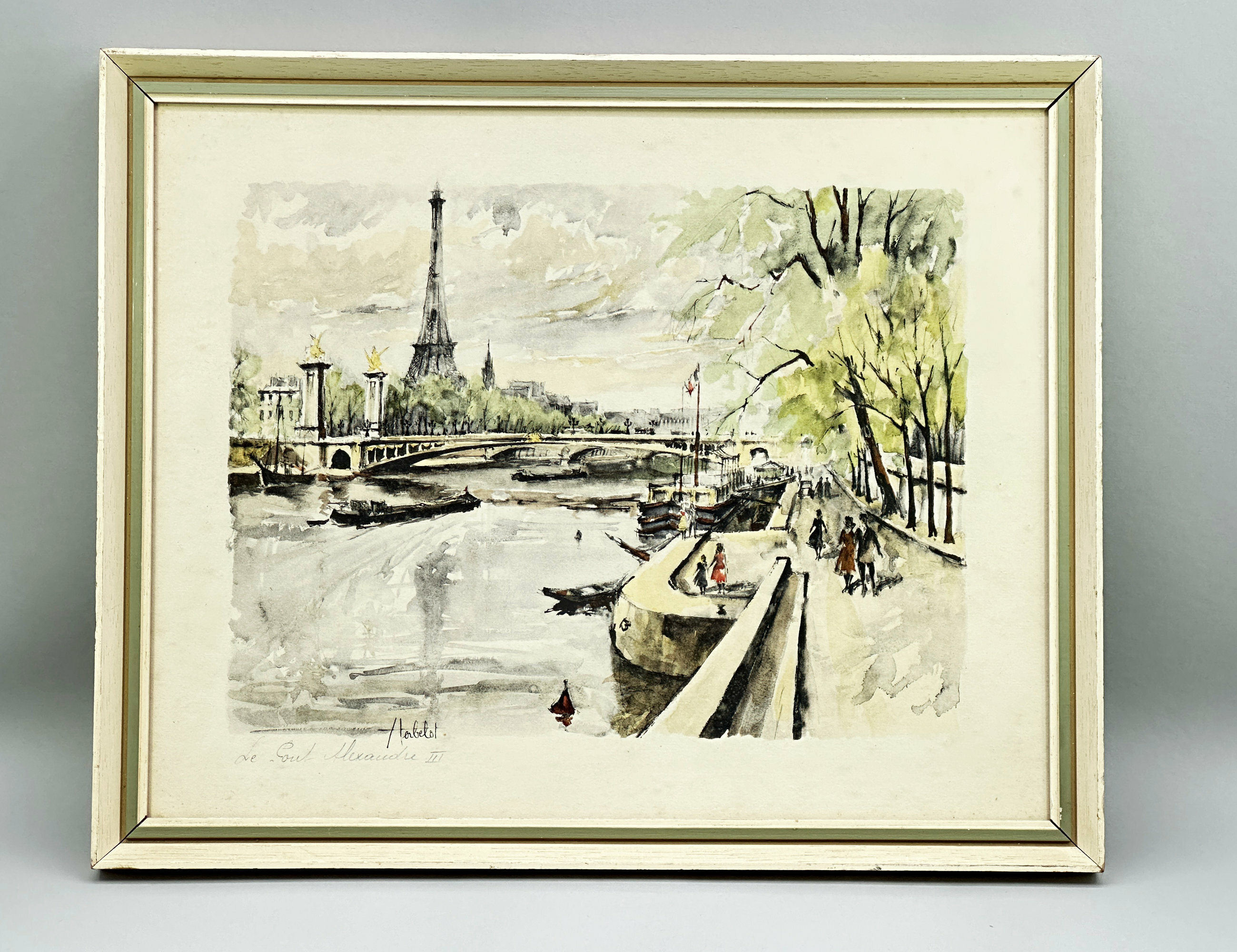
Lithograph Print, Le Pont Alexandre III in Paris, signed Herbelot, 1950s/1960s
Estimate: £30 – 40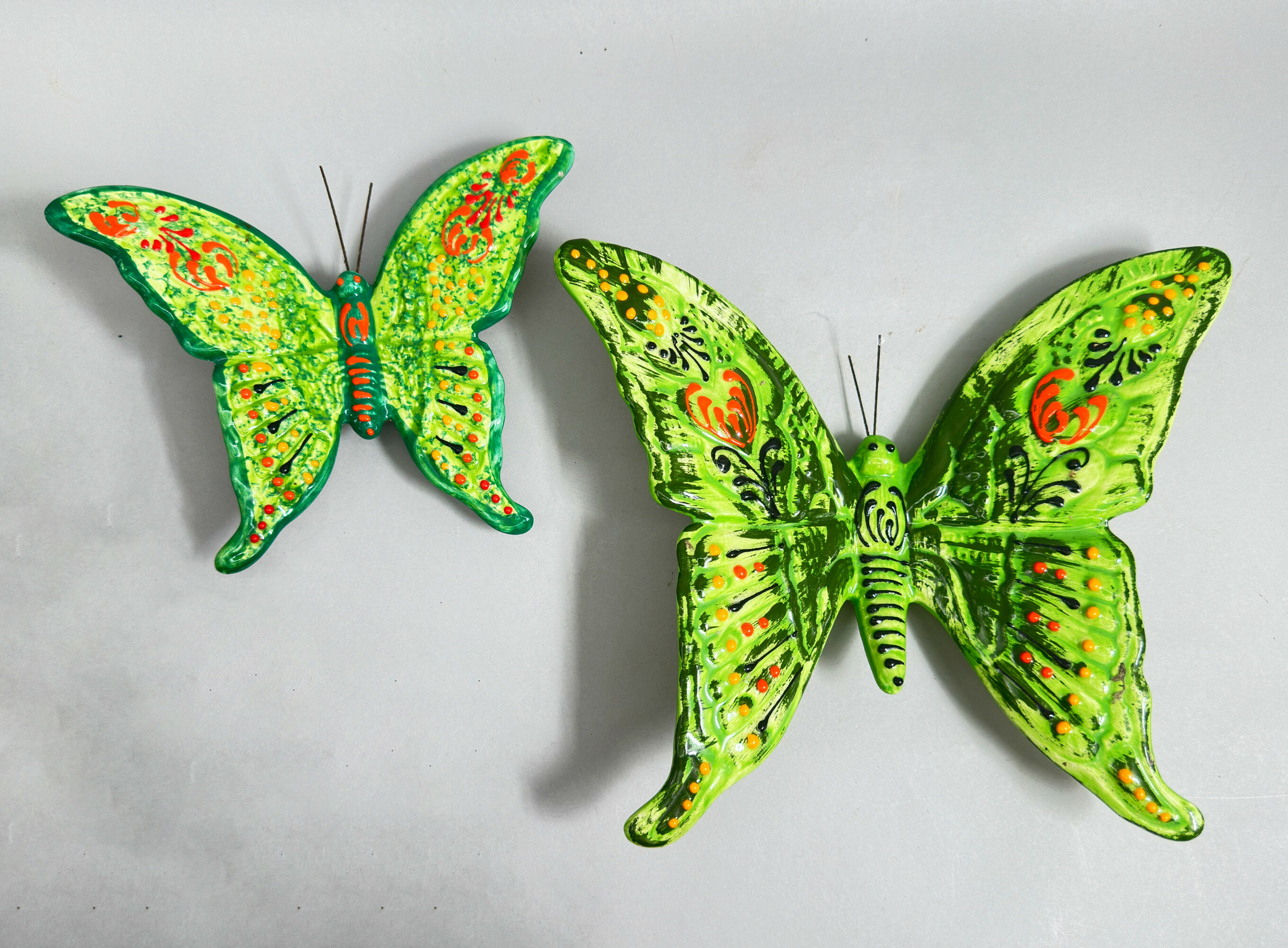
Pair of Ceramic Wall Hanging Plaques, Butterflies, probably continental 1960s
Price: £40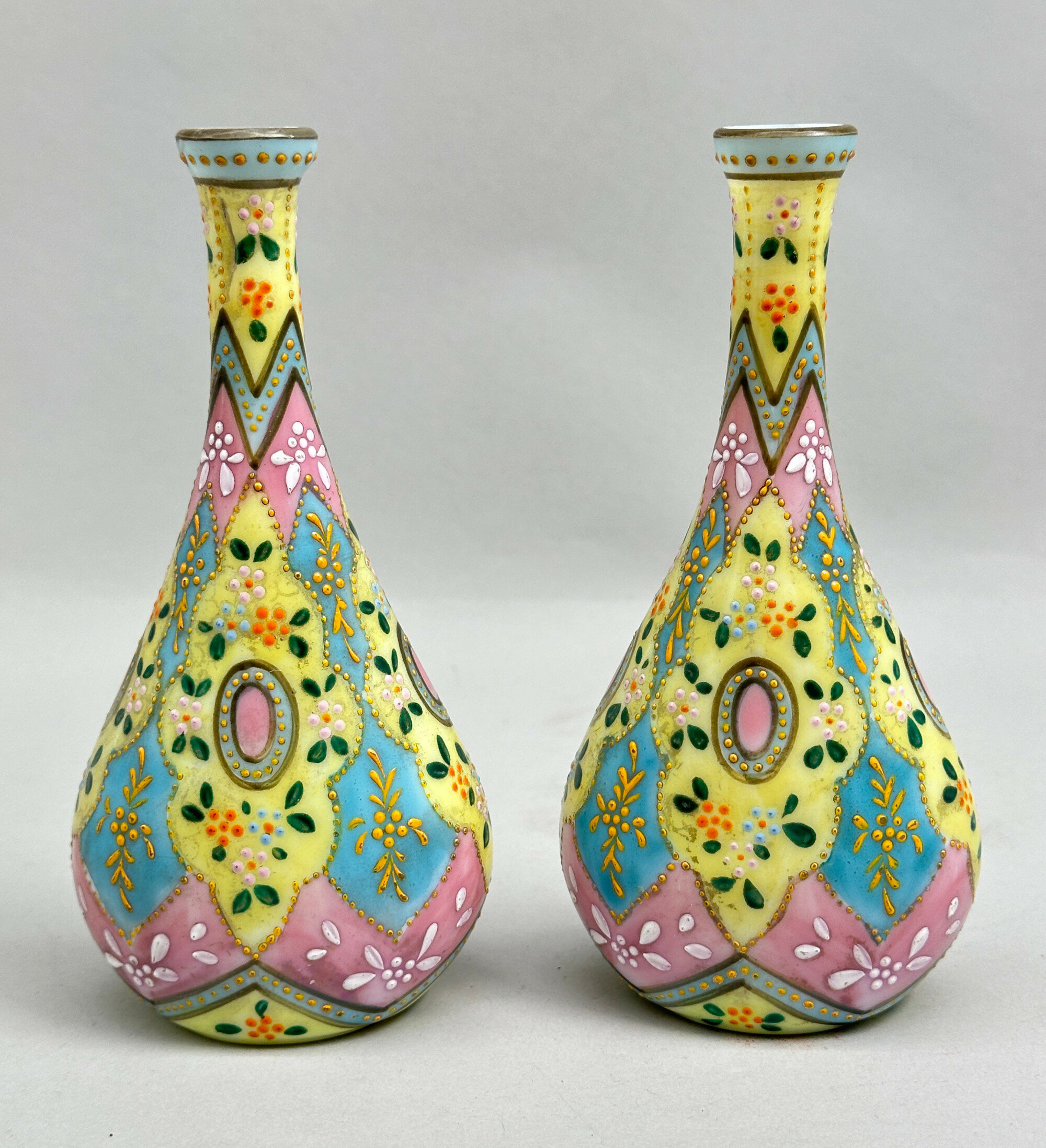
Pair of Bohemian Harrach Glass Vases, Morocco pattern, second half C19th
Price: £95The Harrach glassworks is named after Alois Raimund von Harrach (Count Harrach), on whose estate it was founded in Bohemia, in the early eighteenth century. Managed at first by one Elias Muller, the firm traded under a variety of names becoming known as Harrach in the nineteenth century and Harrachov, the name eventually given to the town where the factory was situated, in the twentieth. These opulent vases were a popular part of its range in the nineteenth century, the pattern being produced in a variety of similar shapes and always as shelf ornament pieces. The decoration here is particularly lavish with an attractive use of colour and has survived in excellent condition making these a desirable addition for collectors of Bohemian glass or admirers of nineteenth century glass style generally.
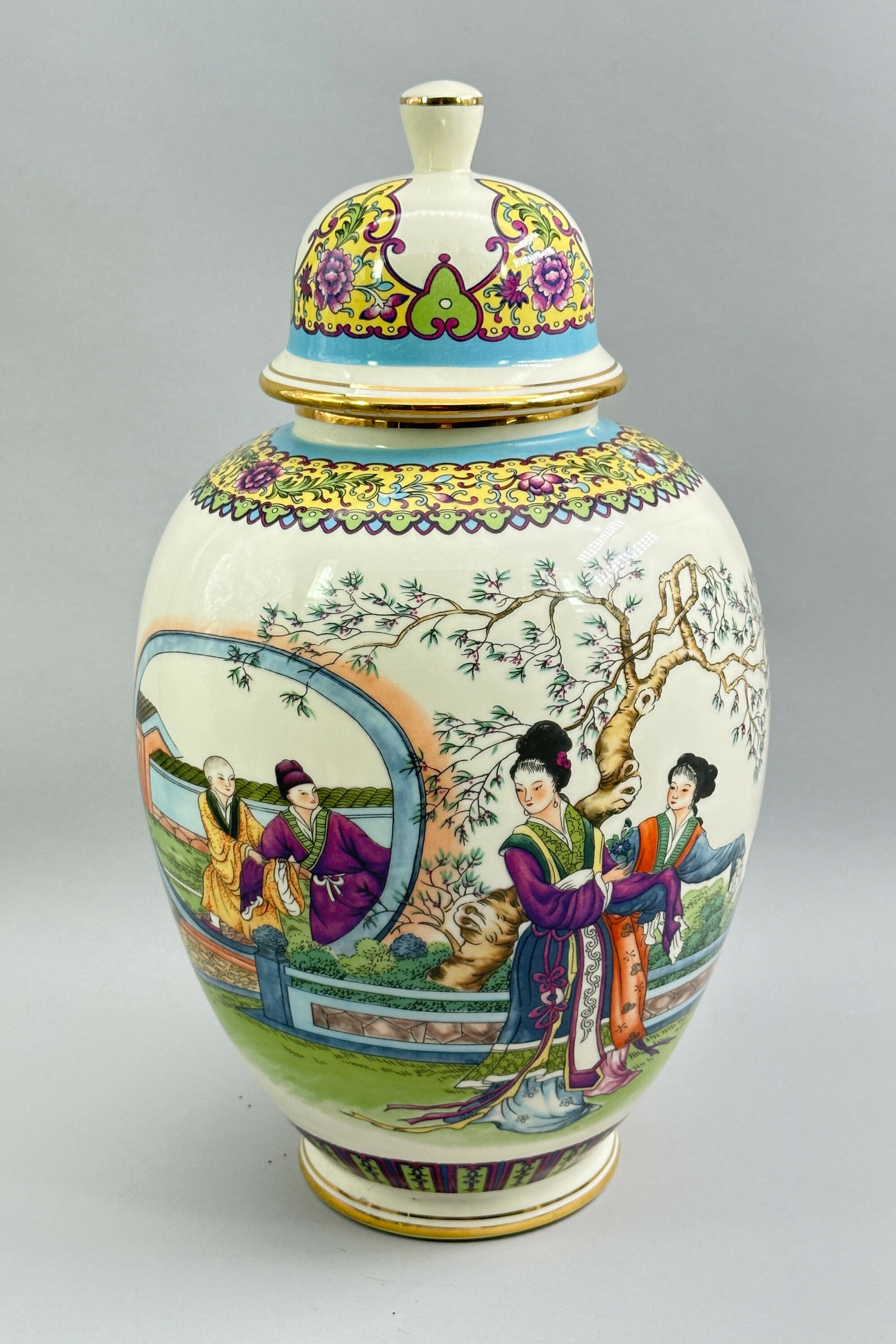
Chinese style Vase and Cover decorated with ladies and courtiers in a garden scene, C20th
Price: £55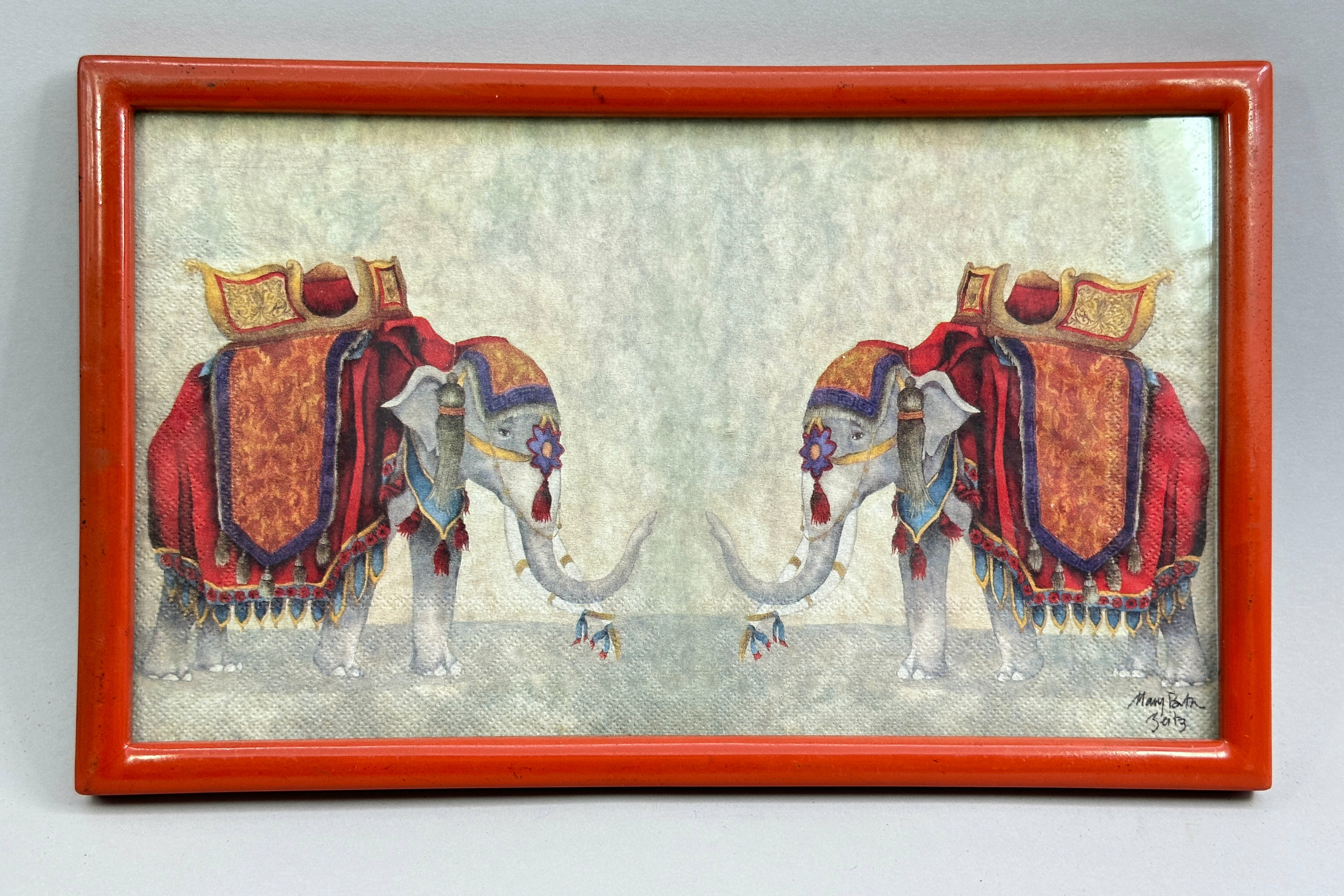
Framed Picture of Two Elephants signed Mary Beth Zeitz and dated 2003
Price: £25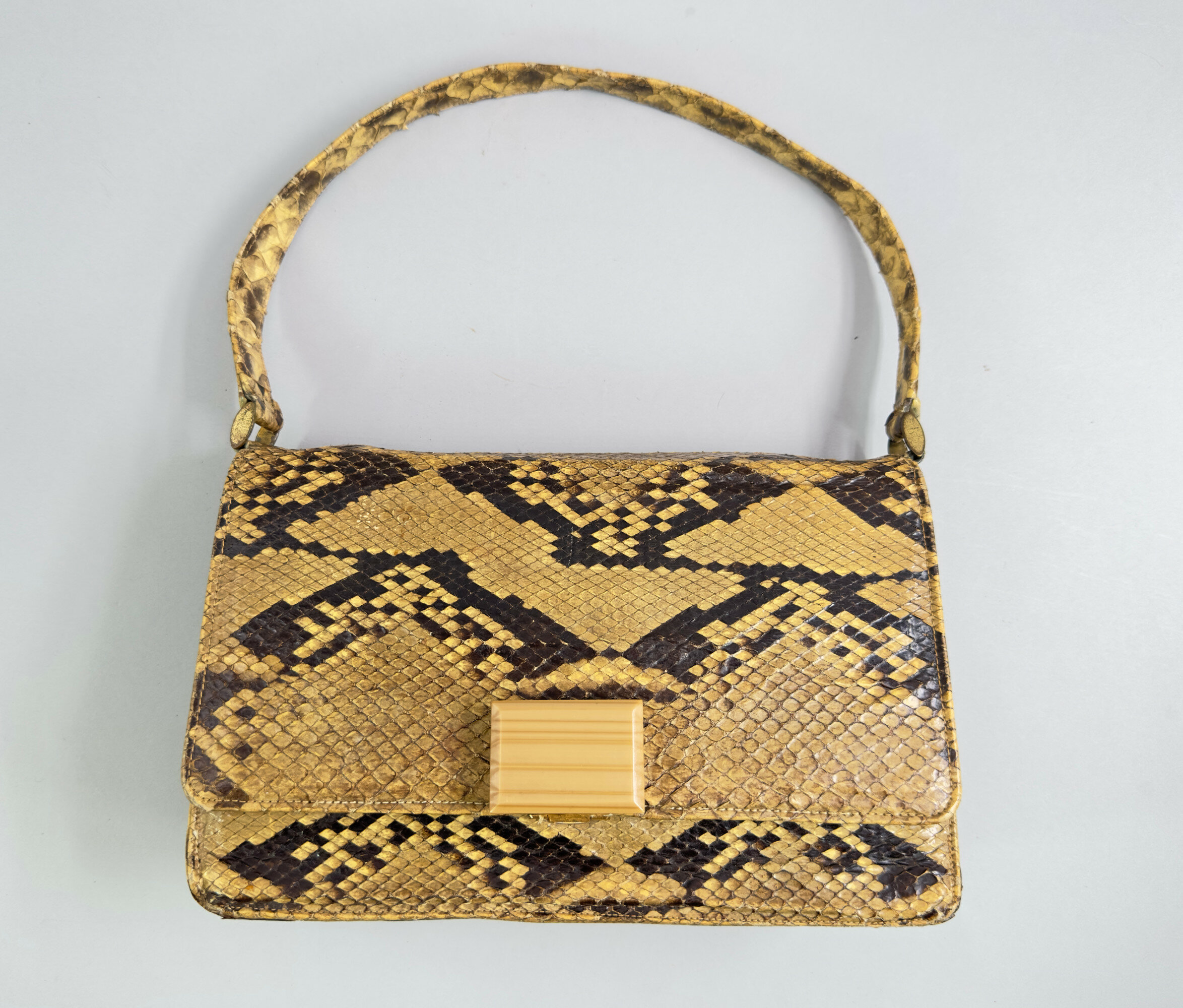
Large python handbag with wood closure detail 1930s
Price: £125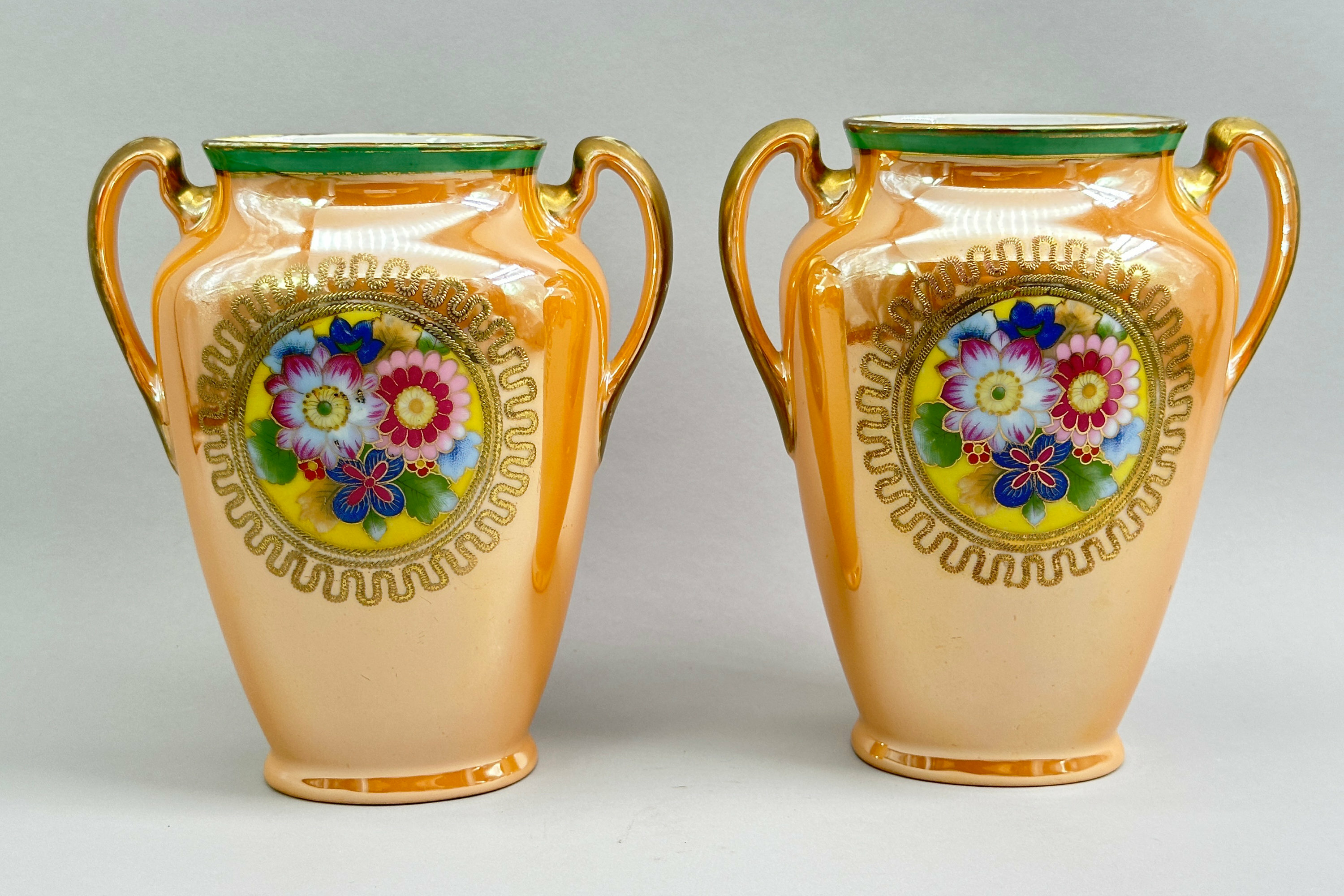
Pair of Japanese Noritake Vases, early C20th
Price: £35The Noritake compnay was set up by the Morimura family at Noritake near Nagoya in the early twentieth century. Called at first 'Nippon Toki Kaisha Ltd' on its founding in 1904, the business soon changed its name to 'Noritake' and began the manufacture of porcelains for the domestic and export markets. The mark seen here is interesting. It comprises a 'Komaru' symbol, crowned with "Noritake" and with the mark 'Made In Japan'. The centre symbol said to be taken from the Japanese character "Komaru", meaning "overcoming difficulties". According to the Noritake company tradition this mark was designed when contact with the different culture of the west early in the 20th century caused problems of adaptation. It is also known as the 'tree crest mark' which is the clan crest of the Morimura family. This mark is said to have been registered in London for the UK market by 1908. The curled up ends of the Komaru symbol seen here distinguish this mark from later versions and allow a dating of this piece to the early twentieth century.
Noritake porcelain became synonymous with finely potted tea and breakfast services made in great quantities for export. These vases are a rather more unusual production and show the factory capable of producing high quality pieces with decorative potential.
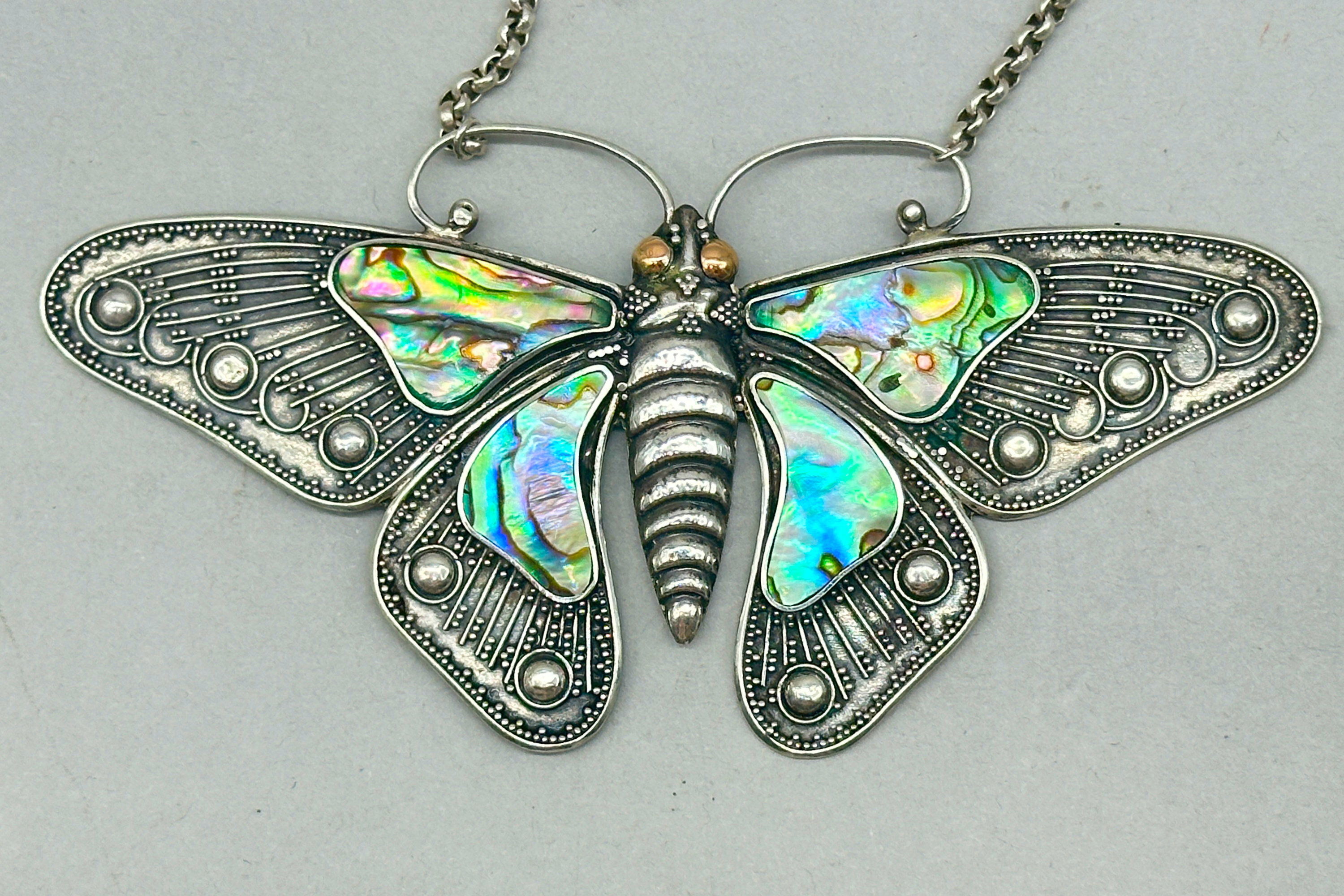
Silver Butterfly form Pendant set with Abalone, Bali, C20th
Price: £95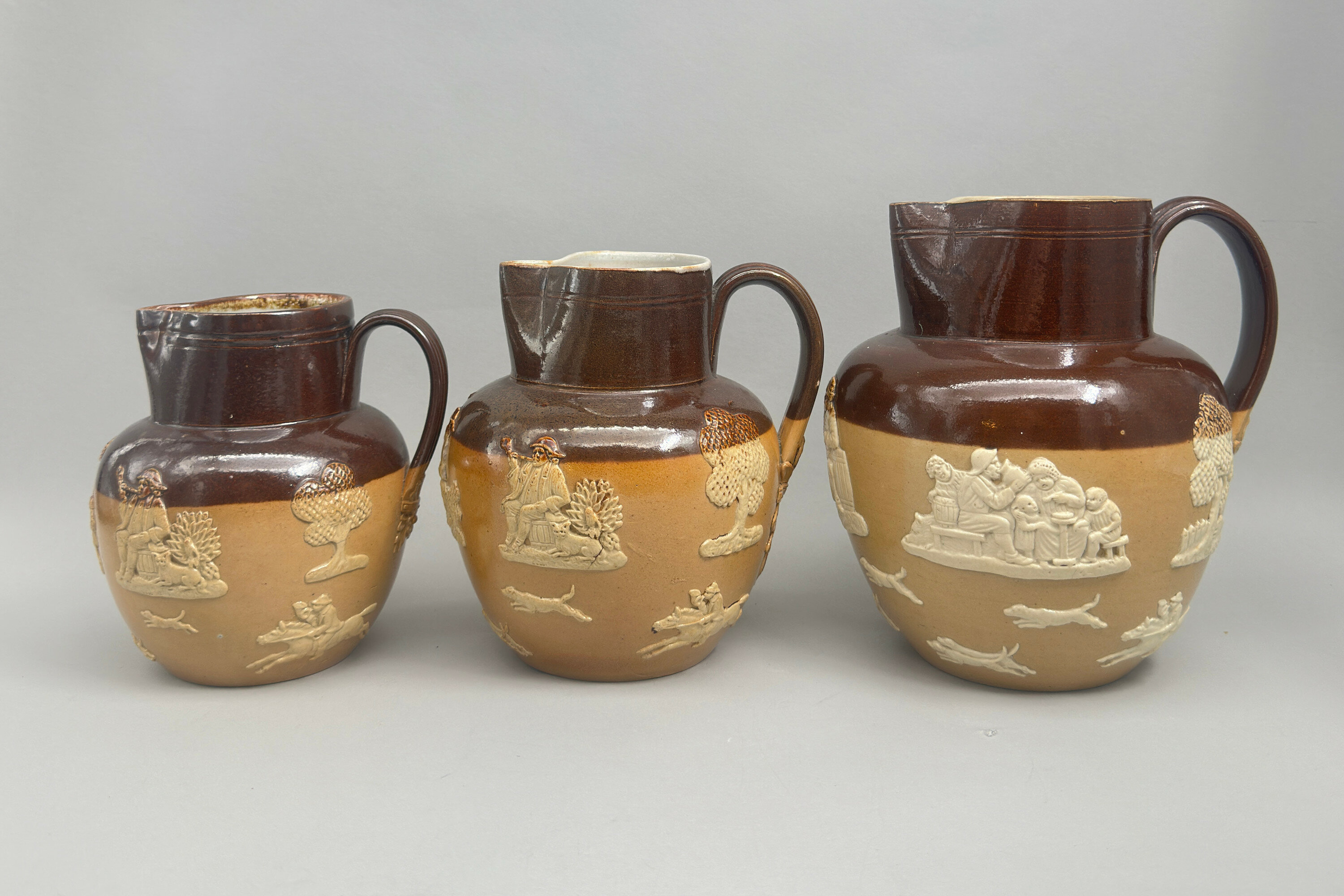
Graduated set of three Royal Doulton Harvest Pattern Jugs, early C20th
Price: £150While this model, often called the ‘harvest pattern’, is found quite often, it is very unusual to see a graduated set of three, all matching. The form of the mark, where the lion does not sit above a crown, was used between 1922 and 1927 which gives us the dating here. The largest jug carries the letter ‘a’ which was a decorator’s mark and stands for Louisa Ayling. Perhaps she worked on all three, but this must remain a guess although the quality of the work on all three is quite consistent producing a highly decorative and attractive ensemble.
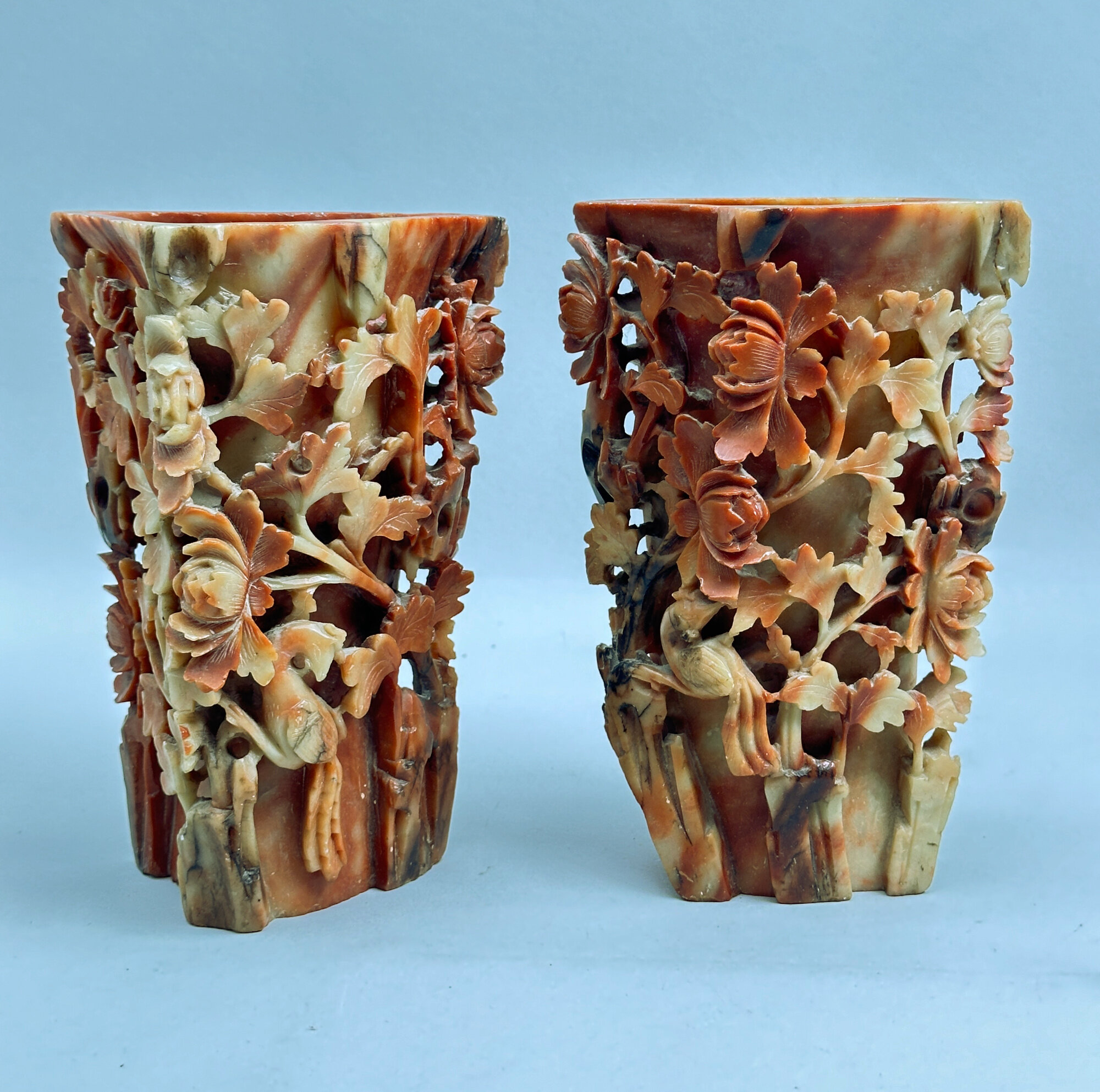
An unusual Pair of Chinese carved Soapstone Vases, circa 1900
Price: £110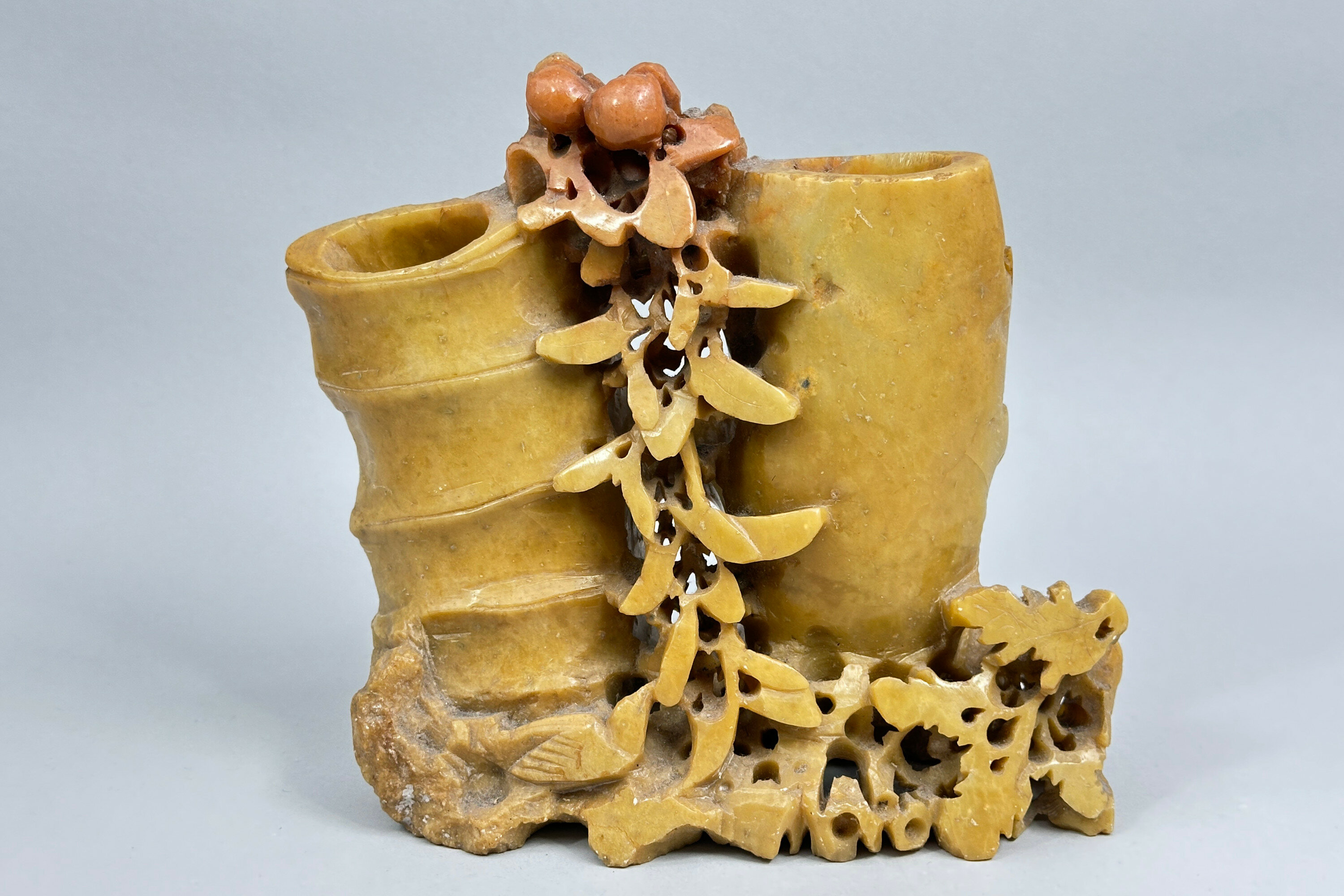
Chinese Soapstone Double Brushwasher, C20th
Price: £45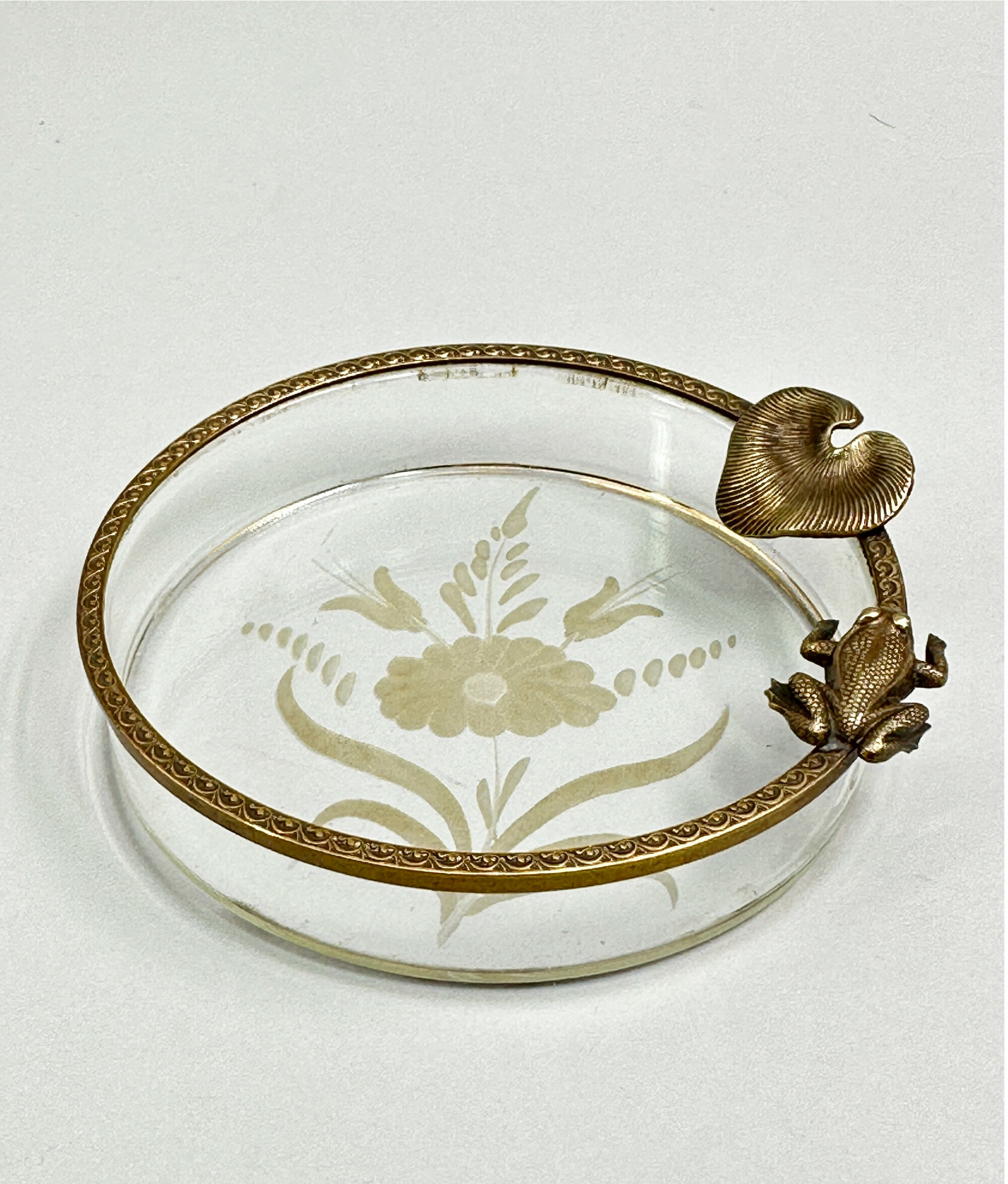
Fine Quality engraved French Glass Dish with naturalistic Ormolu Mounts, early C20th
Price: £25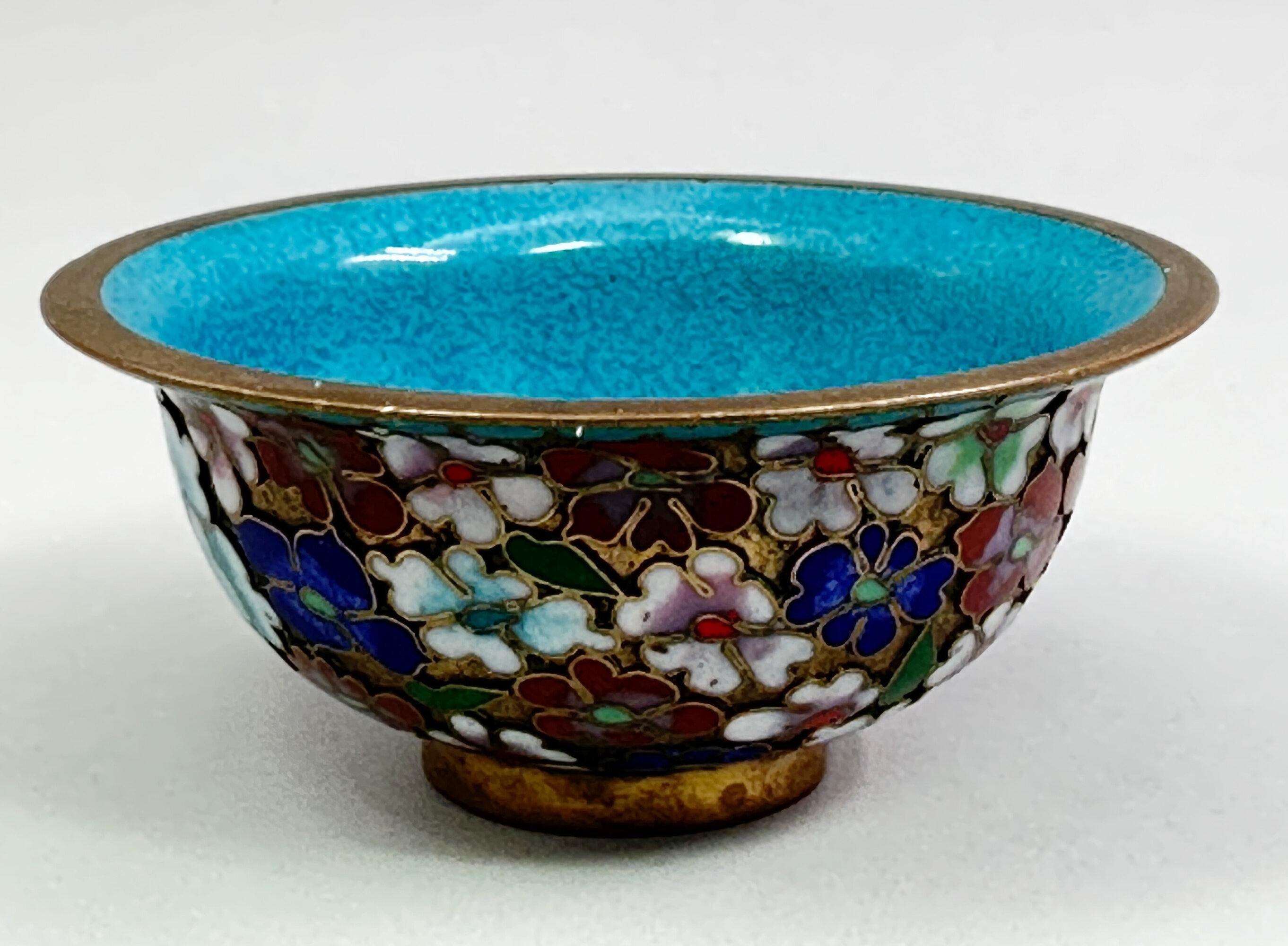
Small Chinese Gilt Ground Cloisonné Bowl, C20th
Price: £35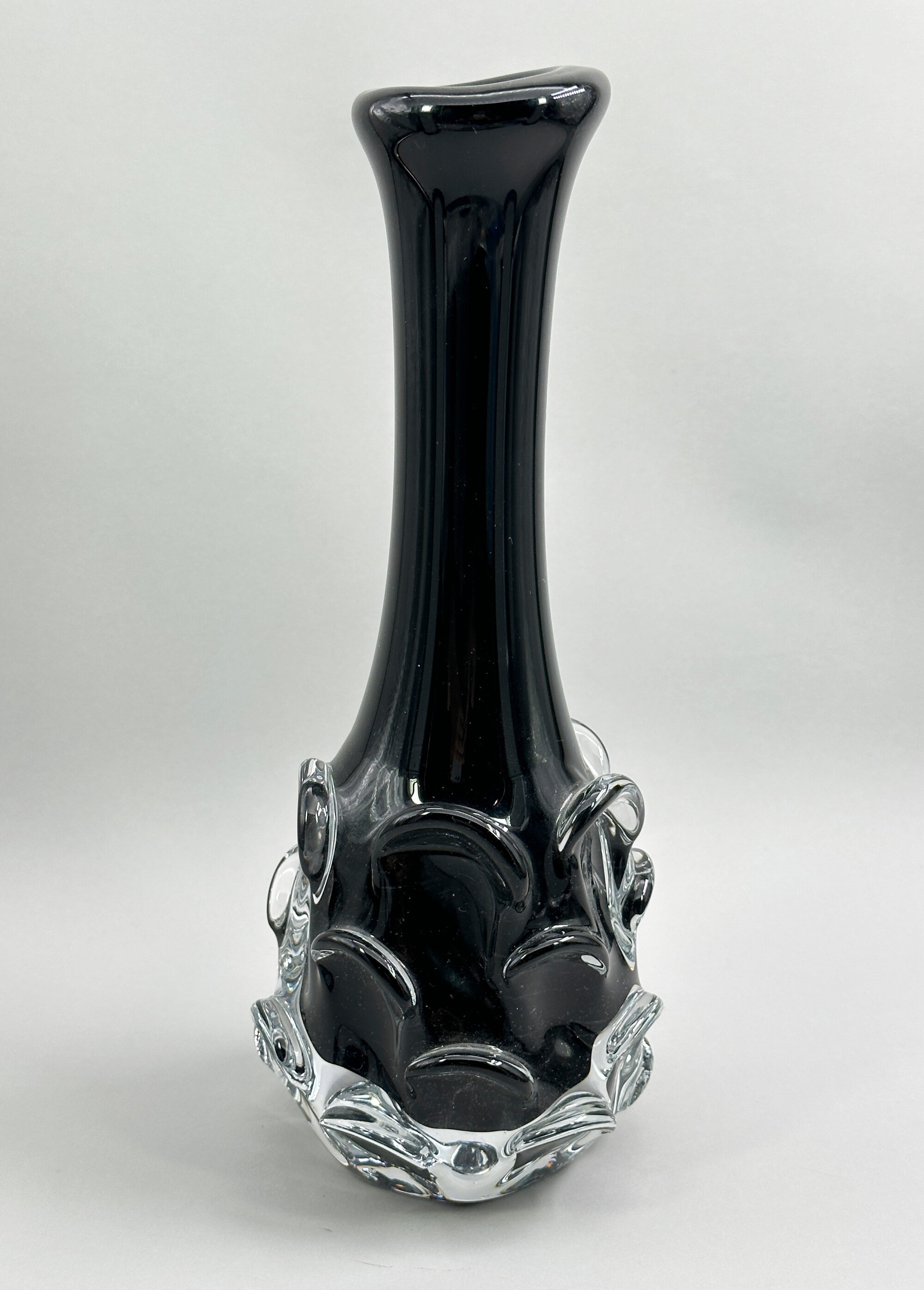
Aseda Glasbruk Art Glass Vase by Bo Borgstrom, Swedish, 1960s/1970s
Price: £75